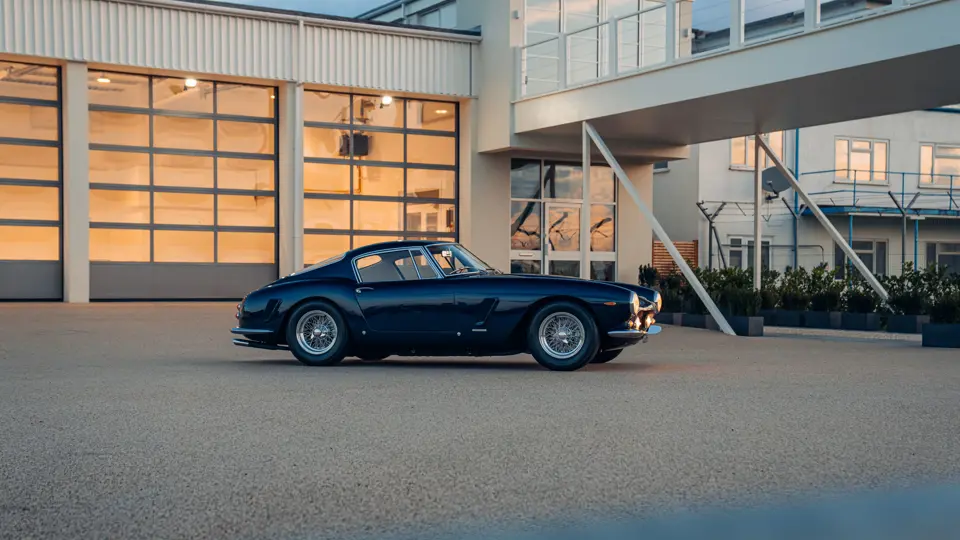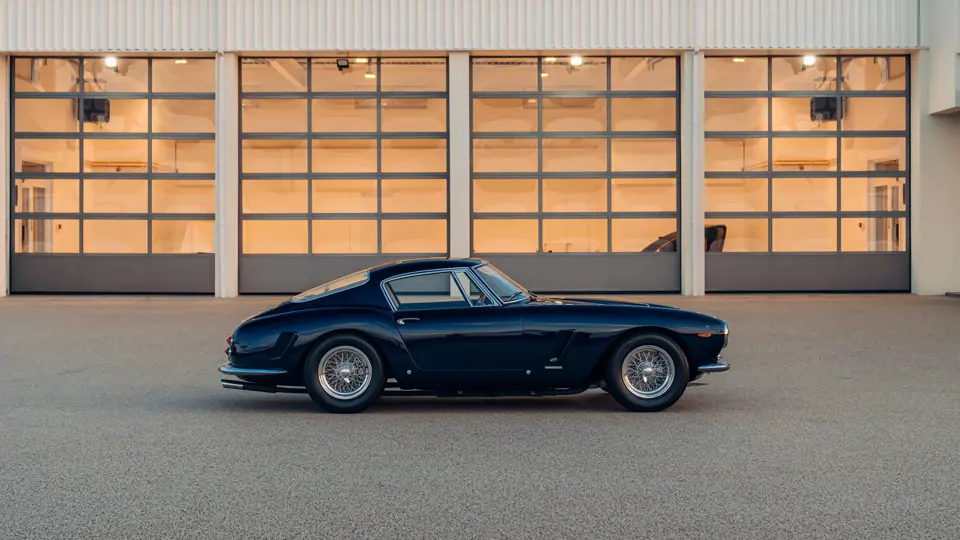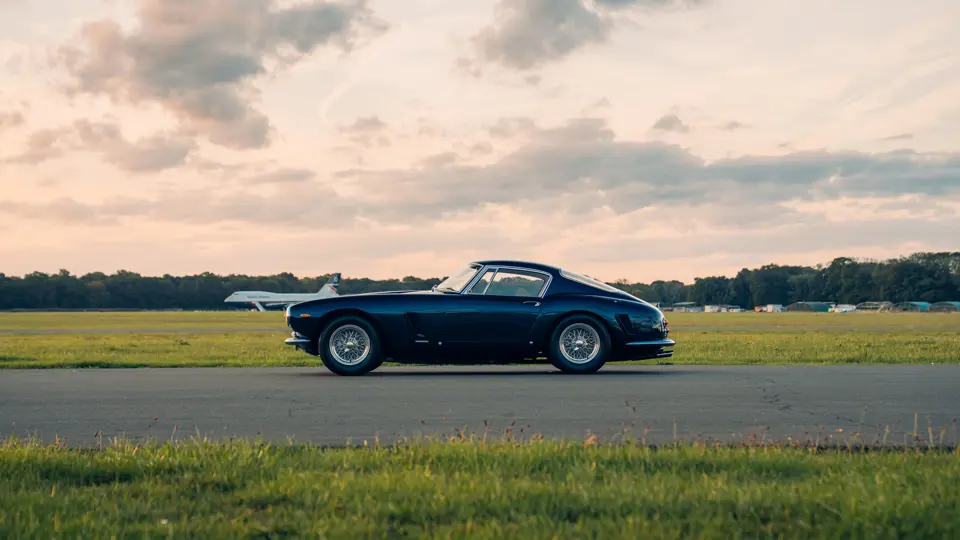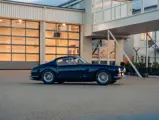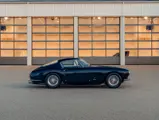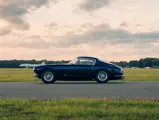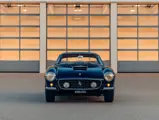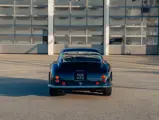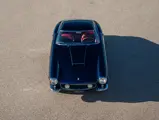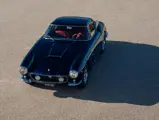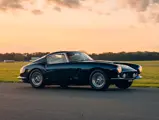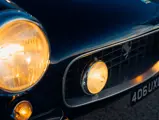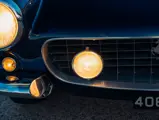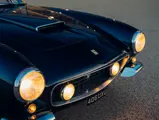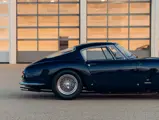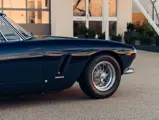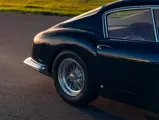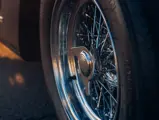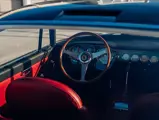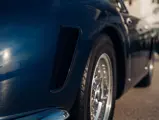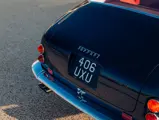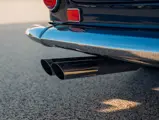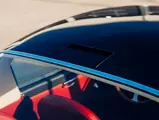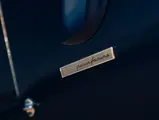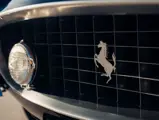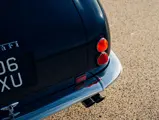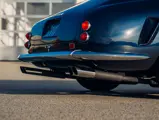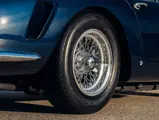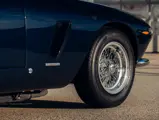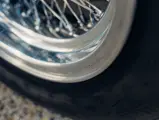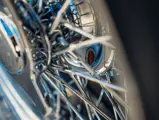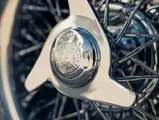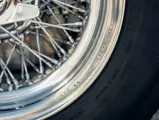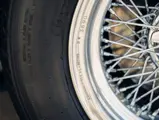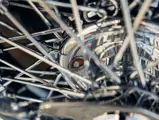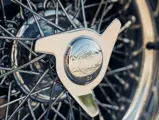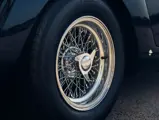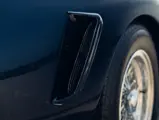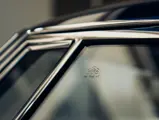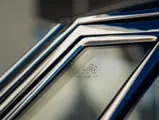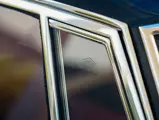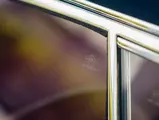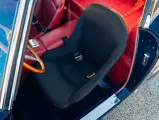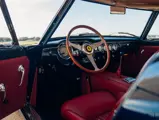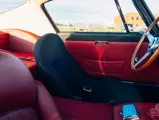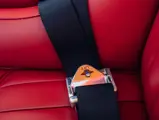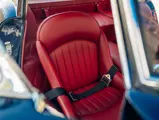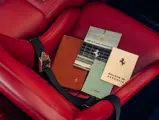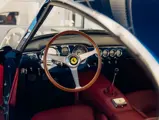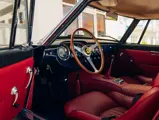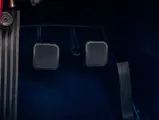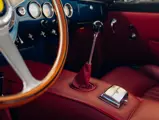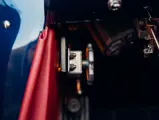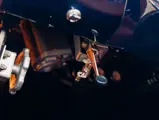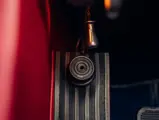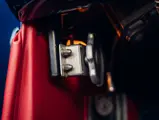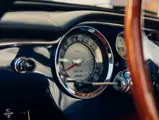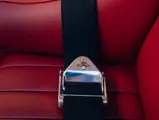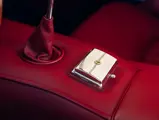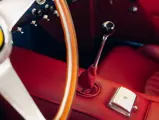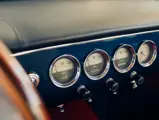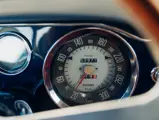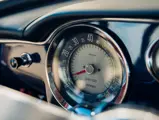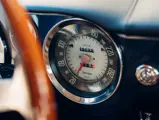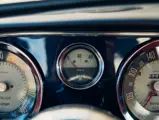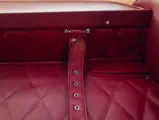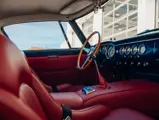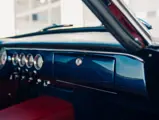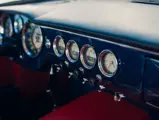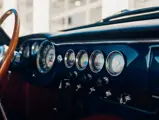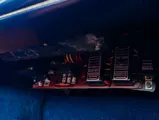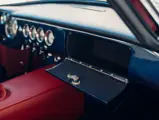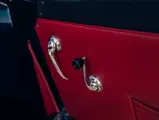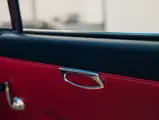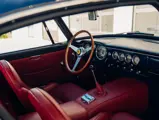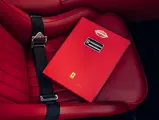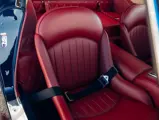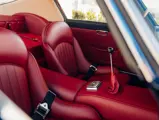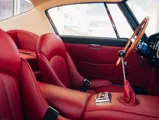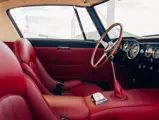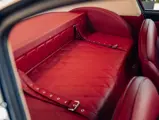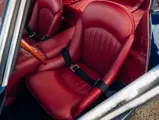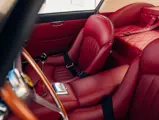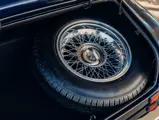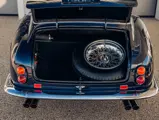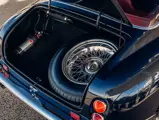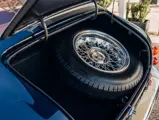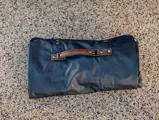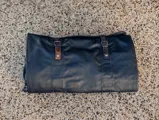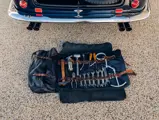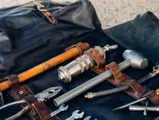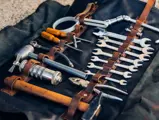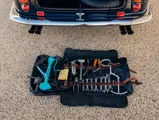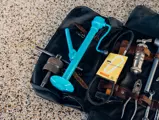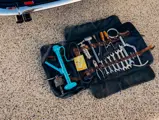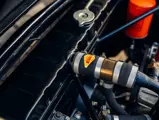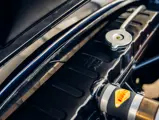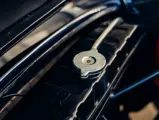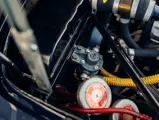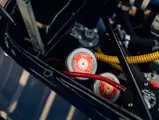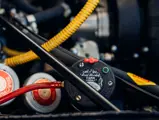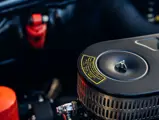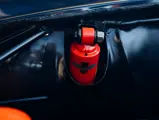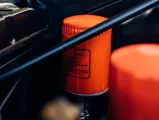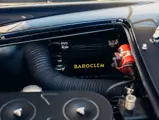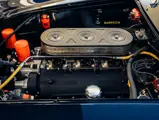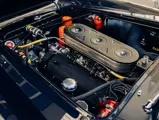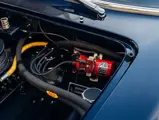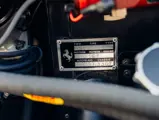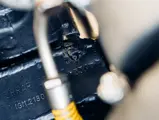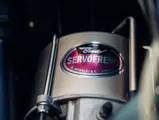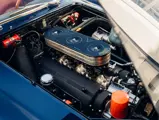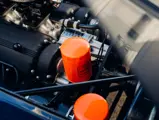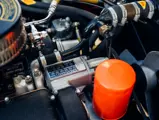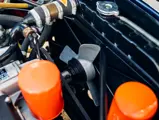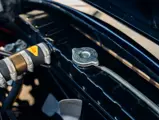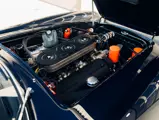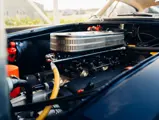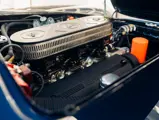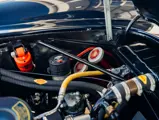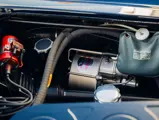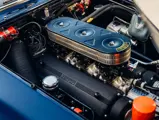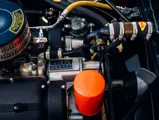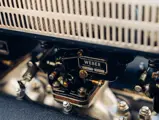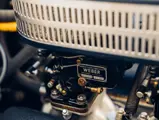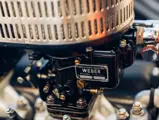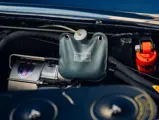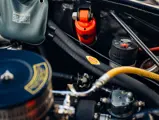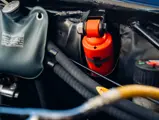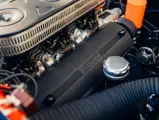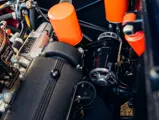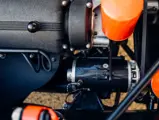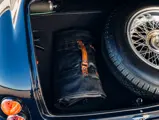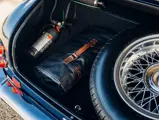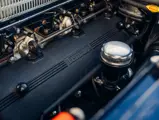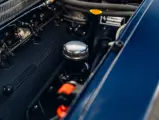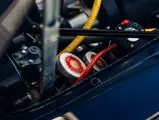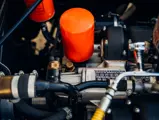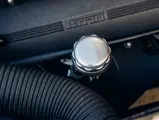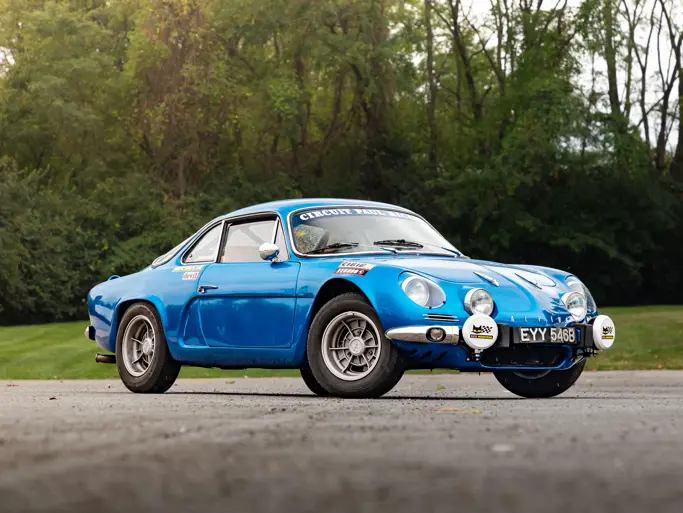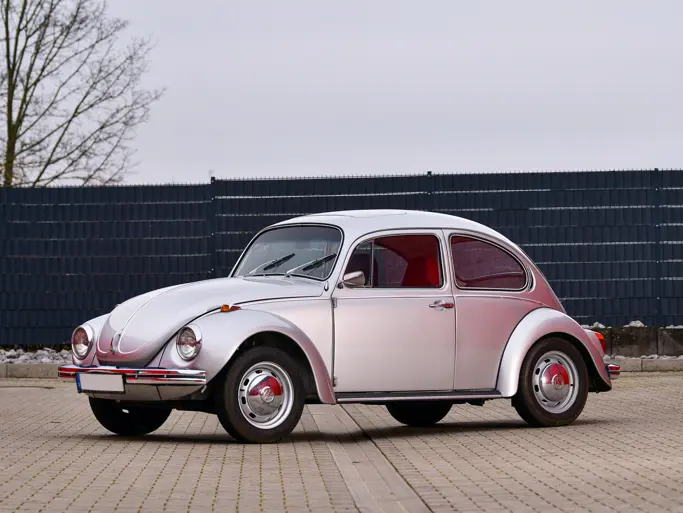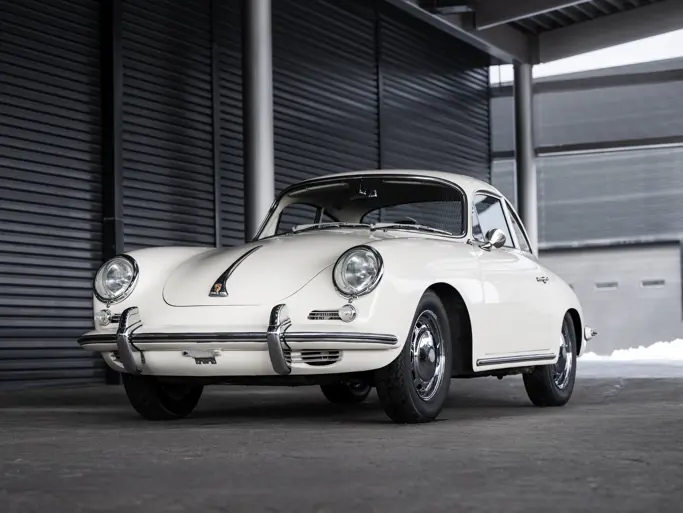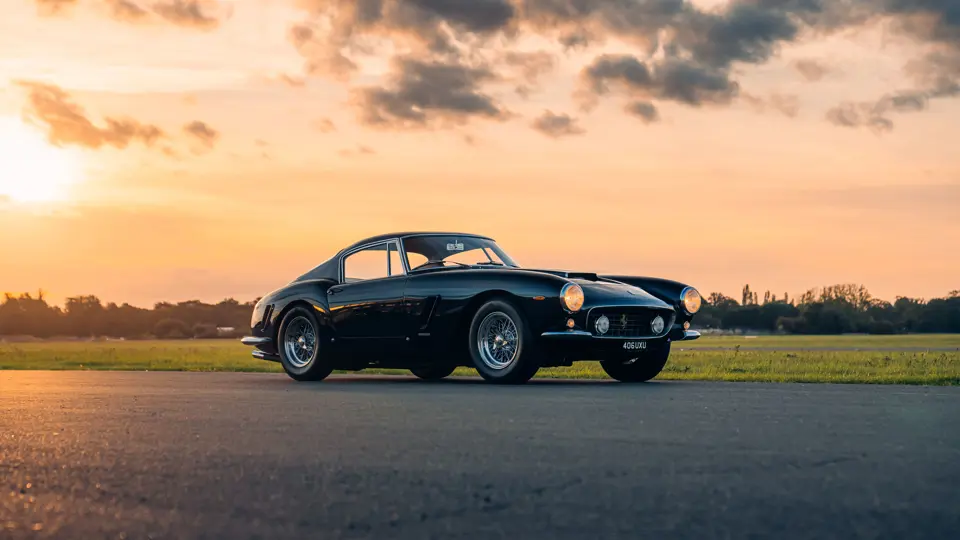
1962 Ferrari 250 GT SWB Berlinetta by Scaglietti
{{lr.item.text}}
Price Upon Request
{{bidding.lot.reserveStatusFormatted}}
- The ultimate “supercar” of its day, a wonderfully balanced driving experience combined with stunningly beautiful bodywork
- One of just 77 SWB Berlinettas constructed in steel-bodied LHD form
- Desirable late-production example delivered new to Ferrari agents Martinelli & Sonvico of Lugano, Switzerland, in the distinctive colour scheme of Bianco Polo Park with Rosso leather interior; believed to be the only steel example delivered new in this colour combination
- Retained by only three careful UK-based owners between 1973 and today
- Restored to its current striking Blu Notte Metallizzato over Rosso interior and maintained to concours standard during current ownership by the UK’s top specialists with over £350,000 in receipts
- Class winner at the 2014 Salon Privé Concours d’Elegance and winner of Best of Show at the 2015 Ferrari Owners Club Concours
- Ferrari Classiche Red Book certification, confirming its full matching-numbers chassis, body, engine, gearbox, and rear axle
- Extensively documented, including copies of factory build sheets, restoration invoices, and an accompanying historical report by marque expert Marcel Massini
- Further accompanied by an owner’s manual with leather pouch, tool set with leather roll, spare set of wheels and tyres as well as bespoke seat covers
The 250 GT Short Wheelbase, or Passo Corto, represents one of the most significant, as well as one of the most accomplished of all Ferrari Berlinetta models built, arguably occupying the same ground as the 250 GTO. Indeed, without the SWB, there may not have even been a GTO, for the former’s basic chassis and 2400mm wheelbase—shortened by 200mm relative to its predecessor, the 250 GT Tour de France—underpinned the evolutionary design of the GT Omologato, affording it the benign handling so critical to its ultimate success.
Just 165 SWB chassis were constructed in both alloy and steel body form; their Tipo-539 chassis clothed in exquisite Pininfarina-penned, Scaglietti-built coachwork. Power was provided by a 250 Testa Rossa-derived Tipo-168 3-litre V-12 engine to which a four-speed gearbox was mated, while, significantly, the model was the first production Ferrari to feature four-wheel disc brakes. Available in either track-oriented Competizione or roadgoing Lusso specification, the SWB was truly a car for all seasons; one equally as at home on the winding roads of the Amalfi Coast as at Le Mans. Ferrari constructed 90 examples in the more solid steel body form which were ideally equipped to become the most impressive roadgoing “supercar” of their day, with only 77 of those being built in LHD configuration; the remaining 75 being alloy-skinned examples aimed principally at those for whom racing loomed large.
Of course, to suggest that the origins of the SWB lay in anything other than competition is fatuous: this was assuredly a racing car capable of conversion into an exhilarating road car, rather than the other way around. Indeed, the involvement of three of the greatest Italian racing engineers of their generation—Giotto Bizzarrini, Carlo Chiti, and Mauro Forghieri—from the project’s inception made Ferrari’s intentions abundantly clear. Such a potent back-room team translated into immediate results, with the SWB registering back-to-back class wins at Le Mans, consecutive outright wins in the Tourist Trophy, a class win in the Sebring 12 Hours, and a hat-trick of outright victories in the gruelling Tour de France Automobile— all within a glorious three-year period between 1960 and 1962. In fact the 250 GT SWB Berlinetta is second only to the 250 GTO with nearly 250 class and overall international victories during its period racing career, placing it firmly in the pantheon of the greatest race cars to come out of Maranello.
The refreshingly transparent history of this particular car, chassis number 3367 GT, begins in early 1962; its chassis having been completed at Maranello on 10 January, prior to despatch to master craftsman Sergio Scaglietti’s coachworks in Modena. As a late production, second series chassis designated for completion to “Lusso” specification, the car was fitted with a steel body, albeit with an aluminium bonnet, doors, and boot lid. As with other Series 2 cars, 3367 GT featured a distinctive horizontal roof vent, wider radiator grille, and reprofiled rear wheel arches; the latter, on the driver’s side, accommodating the filler cap previously recessed into the boot lid on earlier cars.
It appears that 3367 GT returned to Maranello some time in February or early March, for its factory build sheet states that the rear axle, engine and gearbox were completed on 20 March, 27 March, and 28 March respectively, with official factory sign-off eventually forthcoming on 30 March. Interestingly, the car had officially been sold to official Ferrari agents Martinelli & Sonvico of Lugano, Switzerland, on 9 March, some three weeks prior to this, although it was evidently only delivered in early April 1962. Whether influenced by personal choice or national loyalty, the car was finished in the distinctive colour scheme of Bianco Polo Park with Rosso interior; the contrasting white and red happily coinciding with the national racing colours of Switzerland, the only steel-bodied example believed finished in this colour combination.
By way of context, this was a time which may be viewed as perhaps the most exciting and successful in Ferrari’s history. Just four months prior to the start of 3367 GT’s construction, Ferrari’s Phil Hill had become the first American Formula 1 World Champion, while Ferrari had secured the Formula 1 World Constructors’ crown earlier in the 1961 season; a feat matched by the Scuderia in Sportscar racing with overall victory in the World Sportscar Championship. To cap dominant seasons in both disciplines, Phil Hill and Olivier Gendebien had swept to victory at the 24 Hours of Le Mans back in June in their 250 TR61; the second of six consecutive Ferrari wins at La Sarthe between 1960 and 1965.
First registered to an individual residing nearby Lugano as evidenced by its original registration of TI 16300, the car was well used and enjoyed, for at the time of its return to Ferrari Assistenza Clienti for service on 3 September 1963, its odometer displayed an impressive 25,676 kilometres; this being noted on the corresponding factory order #340 and factory delivery note #2348.
After some five years in its original ownership, in June 1967, 3367 GT was acquired by a Herr Heinz Frieden of nearby Balerna, Switzerland; the car’s consequent re-registration with a new licence number—“TI 76321”—indicative of its continued domicile within the Swiss canton of Ticino. From subsequent UK registration correspondence, it is understood that the car was briefly sold to Belgium in or around 1970, before passing to the prominent Italian car connoisseur and historic racer Corrado Cupellini of Bergamo, Italy, circa 1972.
In 1973, ownership of 3367 GT passed to successful London-based Ferrari enthusiast Peter Sugden, in whose custody it would remain, remarkably, for the next 34 years. Upon its arrival in the UK, the car still retained its original colour scheme, although over the remainder of the decade it progressed into a more sporting specification and was subsequently resprayed a more conventional shade of Rosso Chiaro as a result.
That Mr Sugden was a Director of Modena Engineering Limited—then one of the foremost Ferrari specialists in the country—doubtless facilitated such a transformation, and the car was duly fitted with numerous “Comp” features including an engine cold air scoop, carburettor velocity stacks, flared rear wheel arches, wider wheel rims, and front brake cooling ducts. Additionally, its Lusso-specification bumpers were removed to give the car an altogether more aggressive appearance. It was in this form that 3367 GT appeared at the 250 GT SWB 20th anniversary celebrations in September 1980. Appropriately, these were held in the majestic setting of Mas du Clos; the private circuit and Manoir of preeminent French Ferrari collector and SWB owner Pierre Bardinon.
Throughout the 1980s and 1990s, Mr Sugden exercised 3367 GT regularly on track; the burgeoning European historic racing scene offering a wealth of possibilities for such a versatile car. Of particular note were the car’s four participations in the Historic Tour de France Automobile between 1992 and 1997. During this time, preparation responsibilities were shared between marque specialists Church Green Engineering, Bob Houghton Ltd., and Terry Hoyle Engineering Ltd., with scant regard as to their cost.
After more than three decades of ownership, in 2007 Mr Sugden took the difficult decision to part with 3367 GT, whereupon it subsequently joined another well-known British collection. Following initial minor bodywork modifications by RS Panels—including the addition of an external fuel filler cap—3367 GT returned to GTO engineering to be fully restored. It was re-trimmed in blue leather by O’Rourke Coachtrimmers and underwent a colour change to Grigio Argento. Upon completion, it was used enthusiastically by its new owner; a further three participations in the Tour Auto (née Tour de France Automobile) forming the focal point of his competitive exploits.
In 2012, custody of 3367 GT passed to one of the leading UK Ferrari collections—well known for an unwavering attention to detail and in whose care it has since been cherished and meticulously returned to road specification. As a keen concours entrant, the owner entrusted 3367 GT to Medcalf & Company for a respray in the distinguished colour of Blu Notte Metallizzato alongside addressing a few bodywork imperfections in an effort to ensure subsequent certification by Ferrari Classiche, and the car was then returned to O’Rourke Coachtrimmers for a full re-trim in red Connolly leather. These colours were chosen by the owners after much deliberation as they decided they would have specified the car as such if they were buying it new in 1962.
At this juncture, the opportunity was also taken to rebuild the car’s engine, gearbox, back axle, suspension, and brakes; this being performed in a collaborative effort between leading Ferrari specialists Barkaways and Riverside Performance Engineering. Gratifyingly, upon the completion of this series of works, 3367 GT was awarded the coveted Ferrari Classiche certification in January 2014, which significantly noted the retention of its original chassis, body, engine, gearbox, and rear axle. The car’s first-ever concours appearance was marked by a class win in the prestigious Salon Privé Concours at Syon Park in September 2014, while subsequent appearances at Villa d’Este and at the Ferrari Owners Club Concours in 2015 have proved similarly fruitful; the latter yielding the coveted Best in Show award.
Most recently exhibited at the exclusive Concours of Elegance at Hampton Court in 2019, 3367 GT has since been featured in the August/ September 2019 edition of Cavallino magazine and has continued to be enjoyed privately by its owner. As if to underline his continued commitment to exacting maintenance, it has recently benefitted from the fitment of a new exhaust, a comprehensive brake overhaul and a further gearbox rebuild by Bob Houghton, while a further ‘refurbishment’ respray in Blu Notte Metallizzato was undertaken in May 2024 by highly regarded expert Ross Packard Paintwork. So exacting are this owner’s standards and attention to detail that the car has a special pair of fully bespoke seat covers, so that no wear or discolouration can affect the Connolly hides of the seats. The owner has also furnished the car with two sets of period-correct Borrani wheels; a slightly wider ‘driving’ set shod with Avon tyres, and the car’s (standard specification) show wheels (which wear correct-type Pirelli Cinturato rubber) and are in concours-ready condition. Each set even has their own respective set of spinners allocated to suit.
More than six decades after its launch, the exquisite proportions, arresting performance, and unparalleled versatility of the Ferrari 250 GT SWB determine it as one of the all-time great Ferraris—indeed, one of the all-time great cars. In the case of this stunningly presented example, these characteristics are further enhanced by a recent and exacting “no expense spared” restoration, concours-winning pedigree, and impeccable provenance—not to mention the all-important Ferrari Classiche certification, owner’s manual, and tool roll. As such, it represents one of the finest and most historically accurate SWBs to have been offered for sale in recent times, with the most recent owners having gone above and beyond to ensure their car was the very best of breed without regard to expense. 3367 GT has most recently enjoyed such an extensive level of fastidious custodianship that it has been referred to as being in ‘drive to show’ condition—paying compliment to its all-round exquisite condition. Viewing recommended, this is without doubt a superlative example of this most coveted of Ferrari GT models.
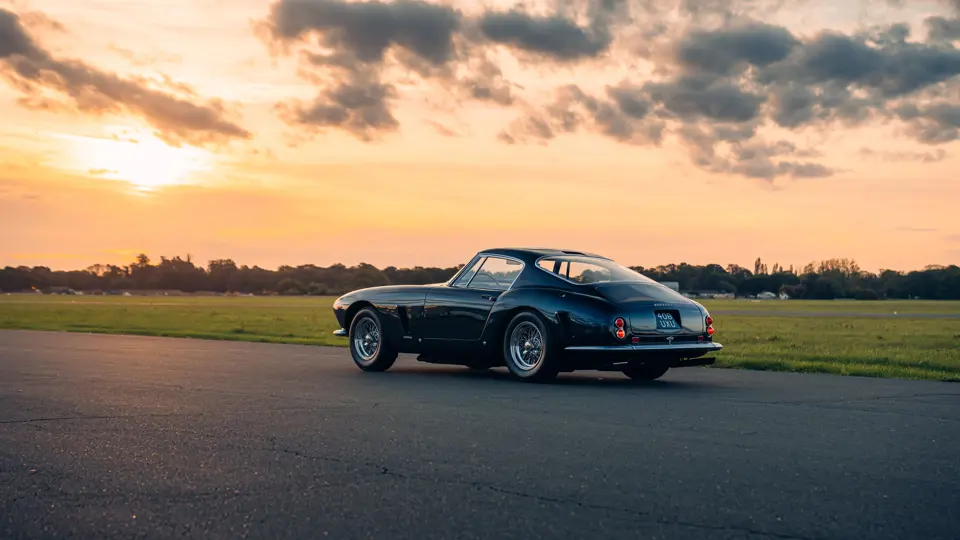
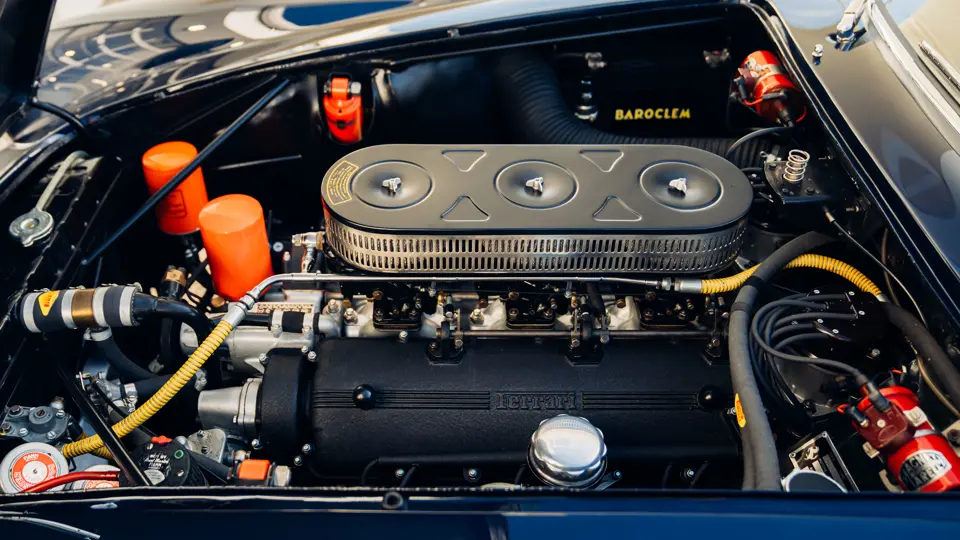
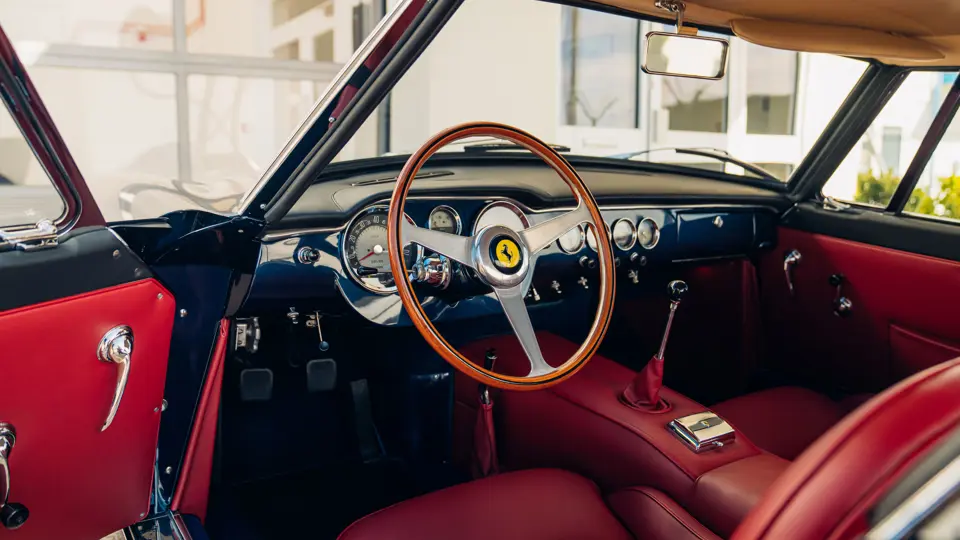

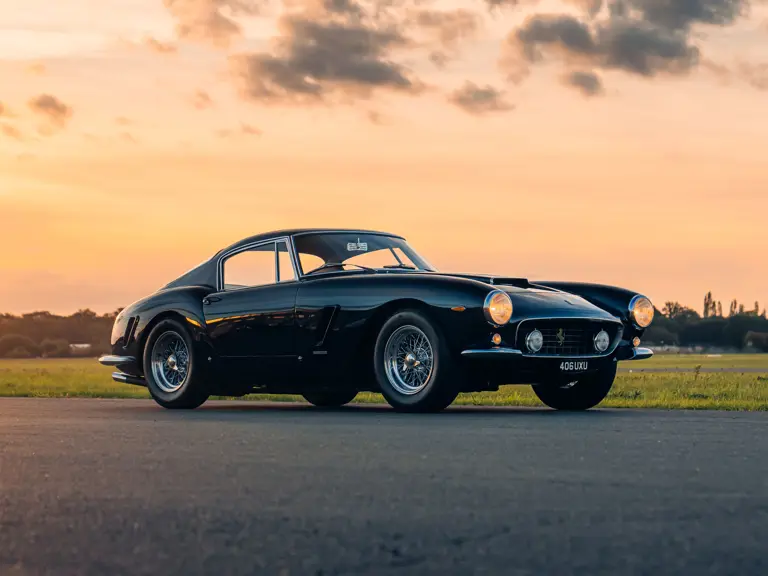
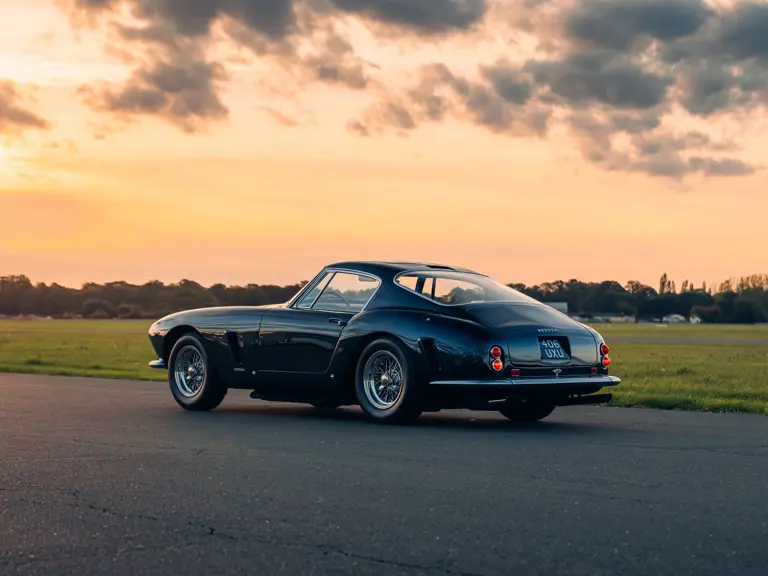
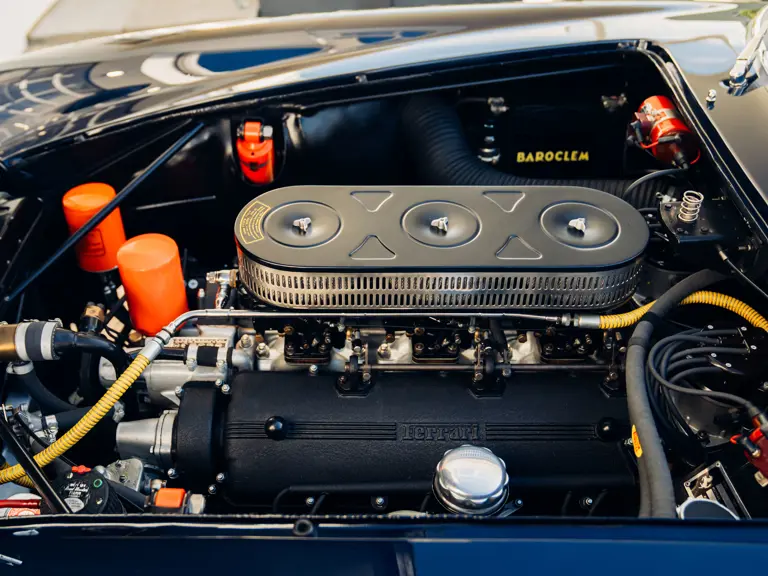
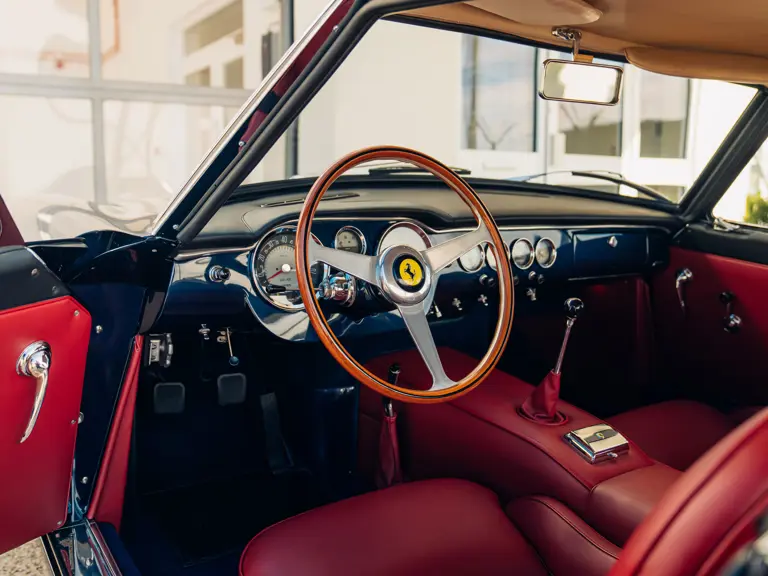
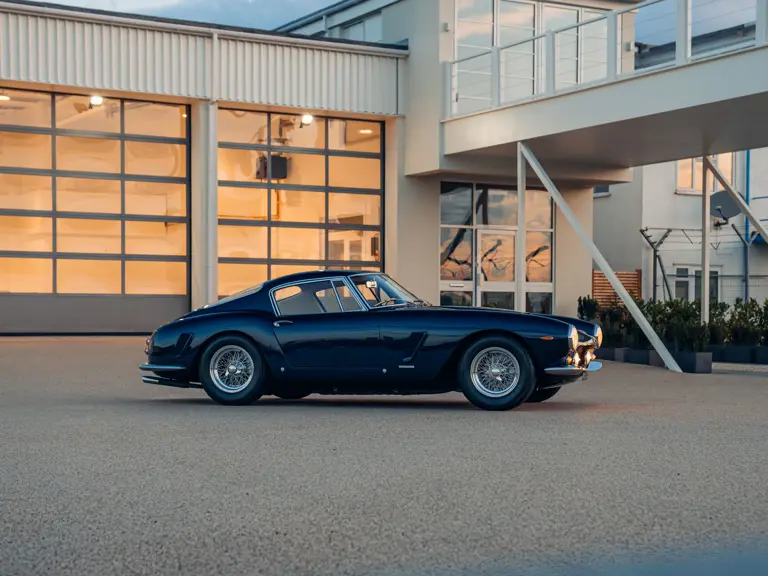
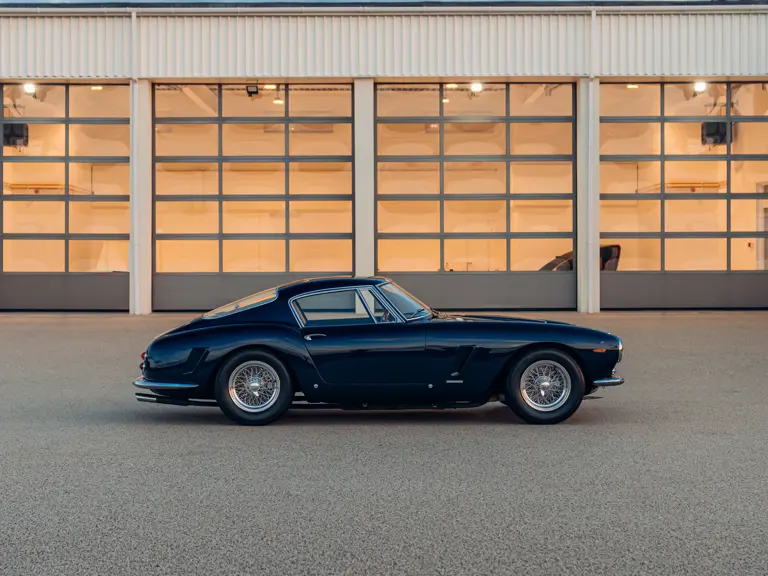
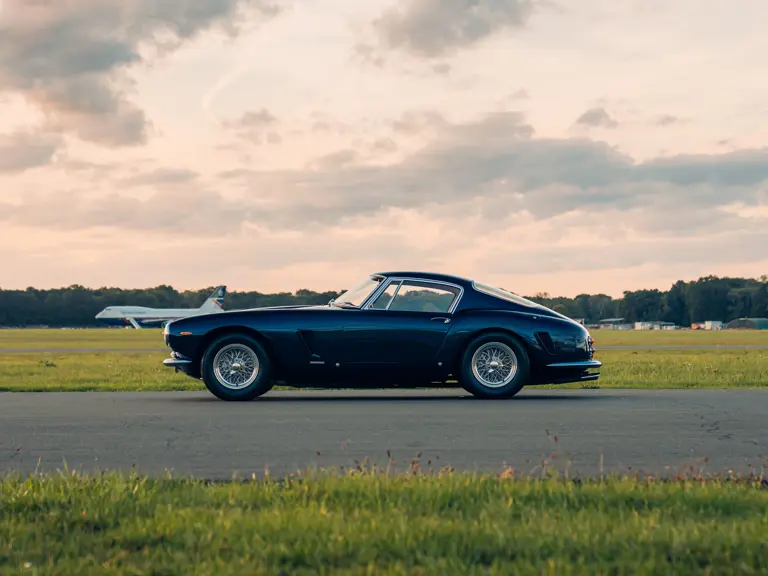
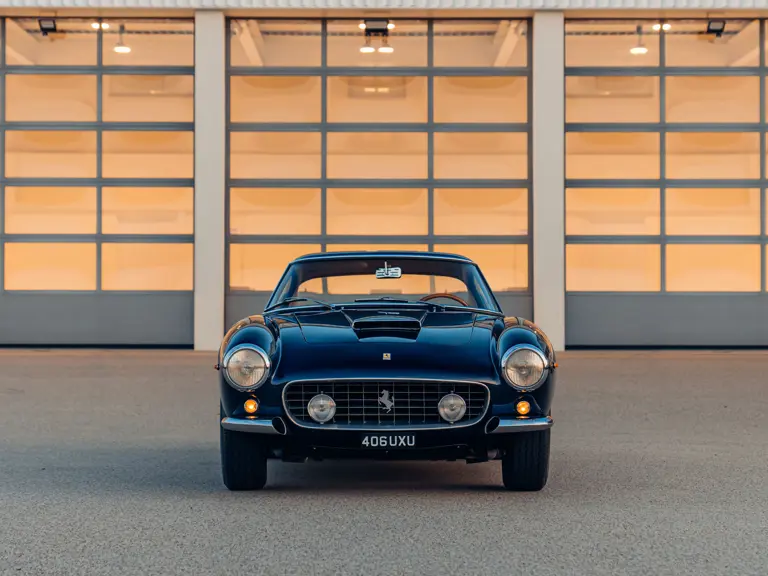
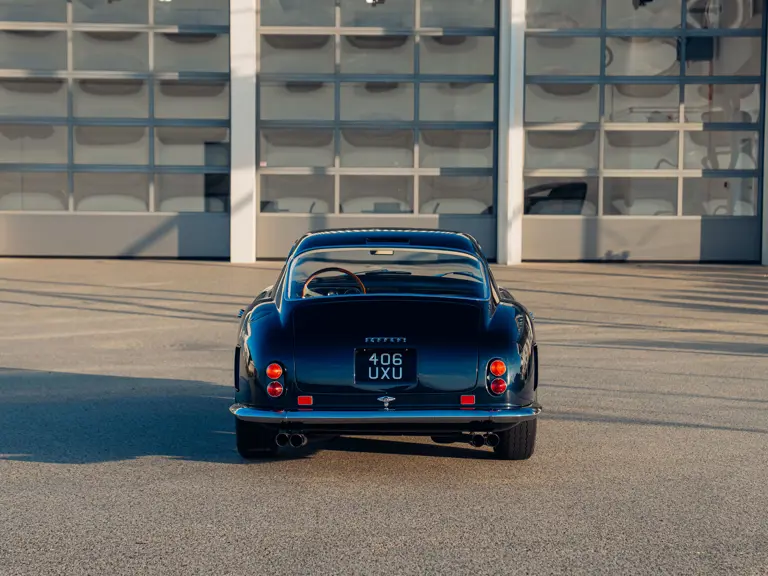
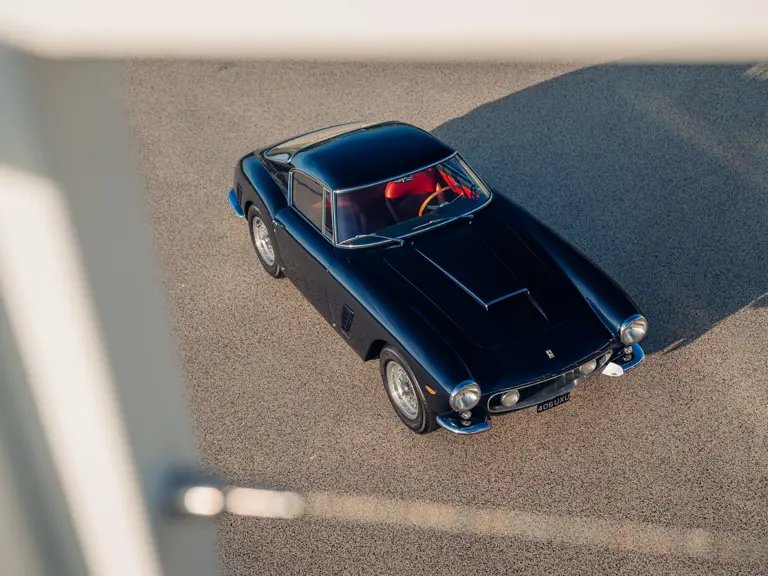
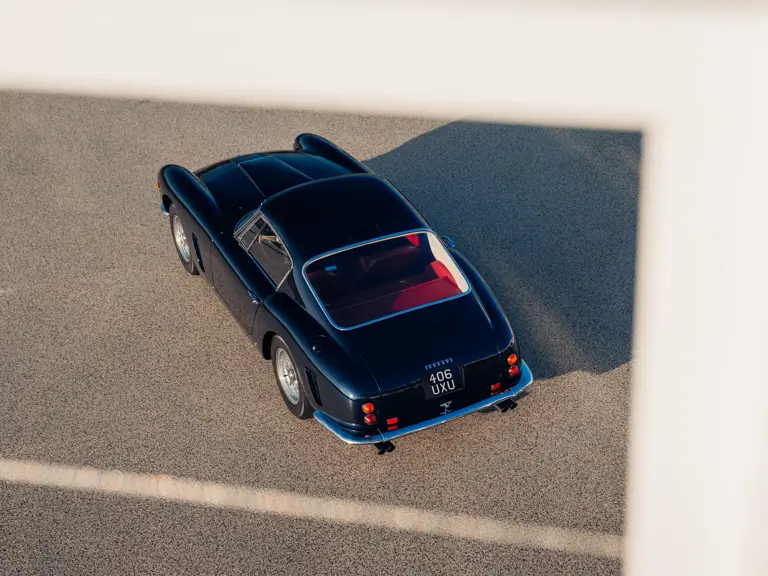
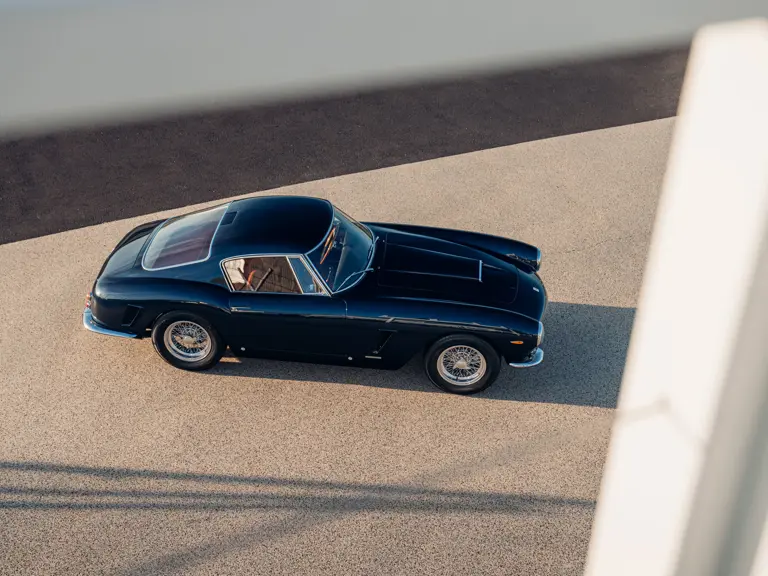
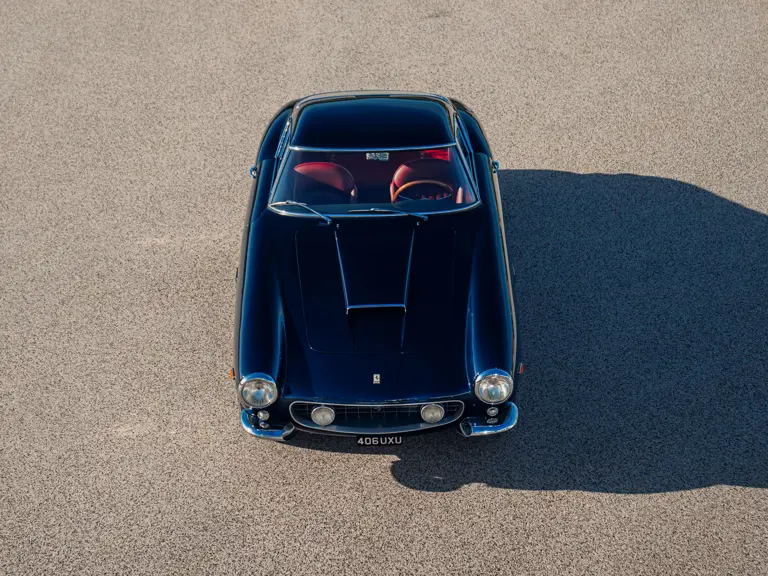
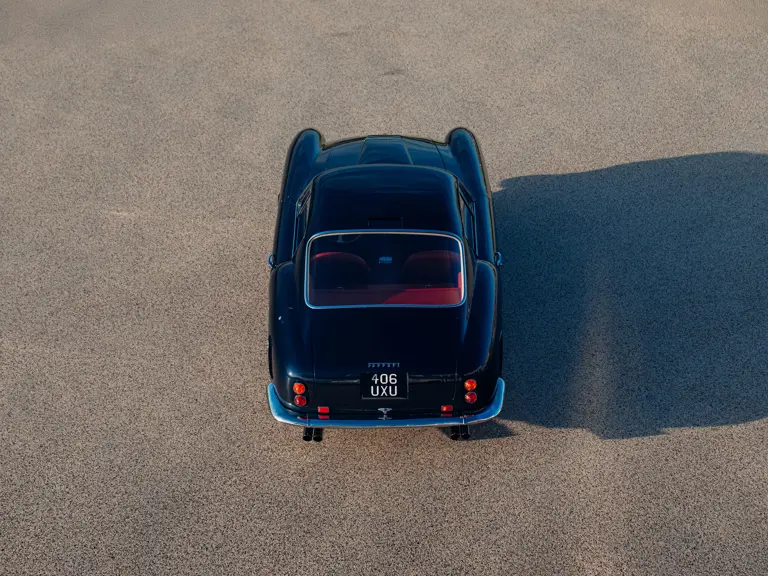
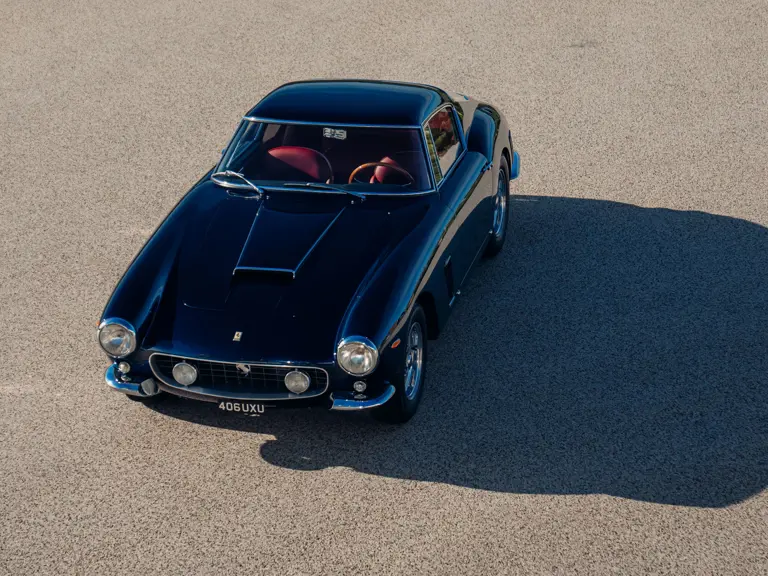
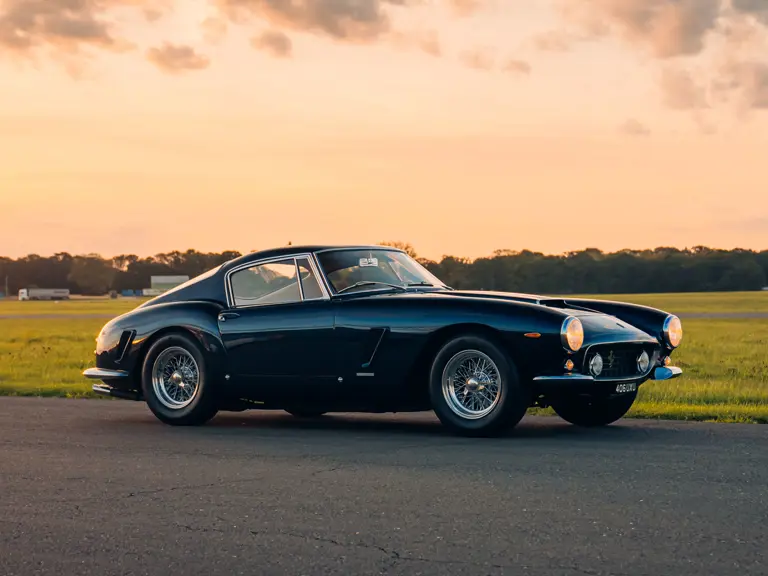
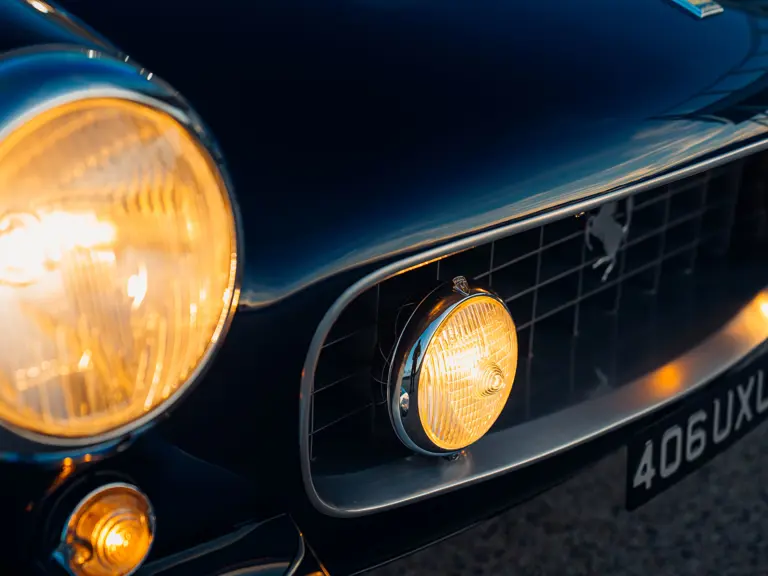
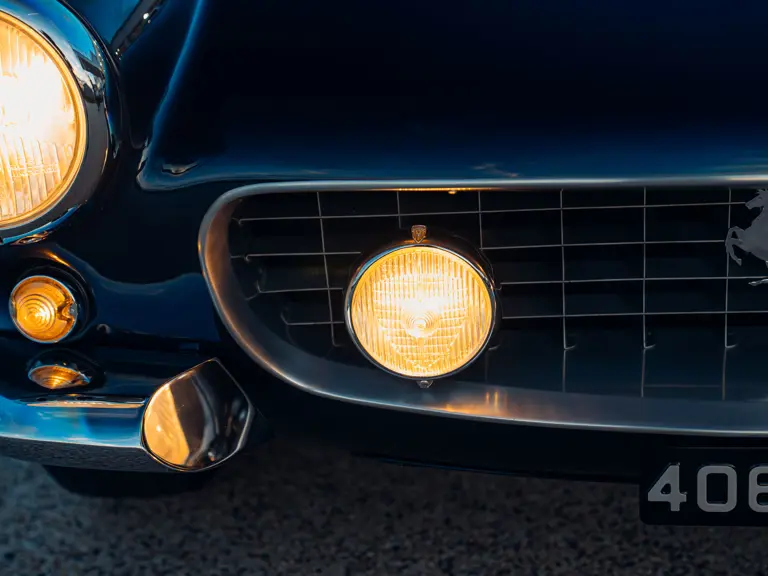
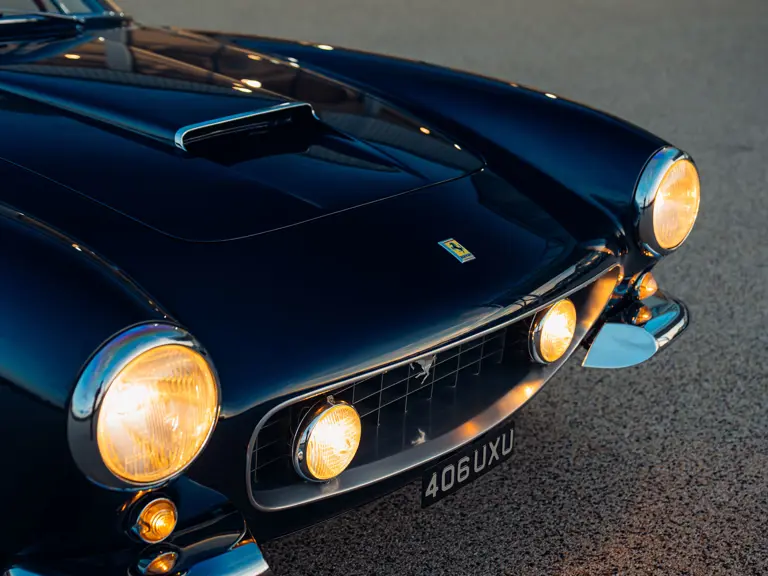
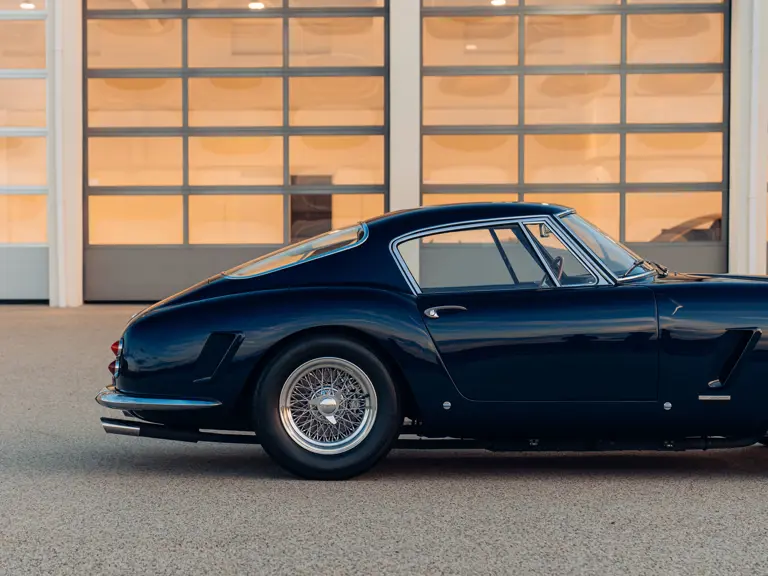
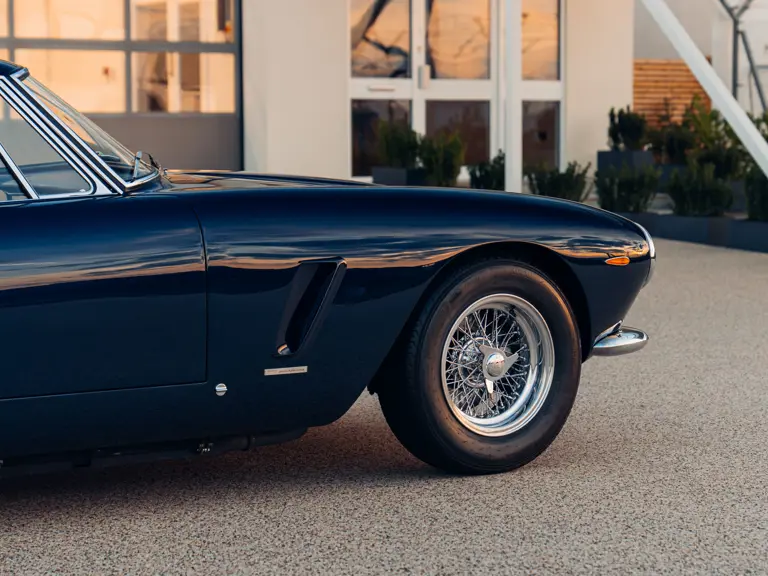
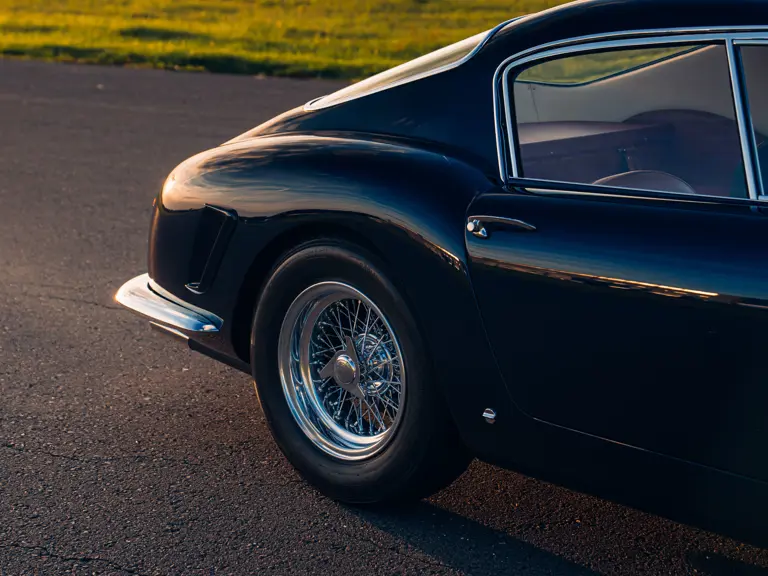
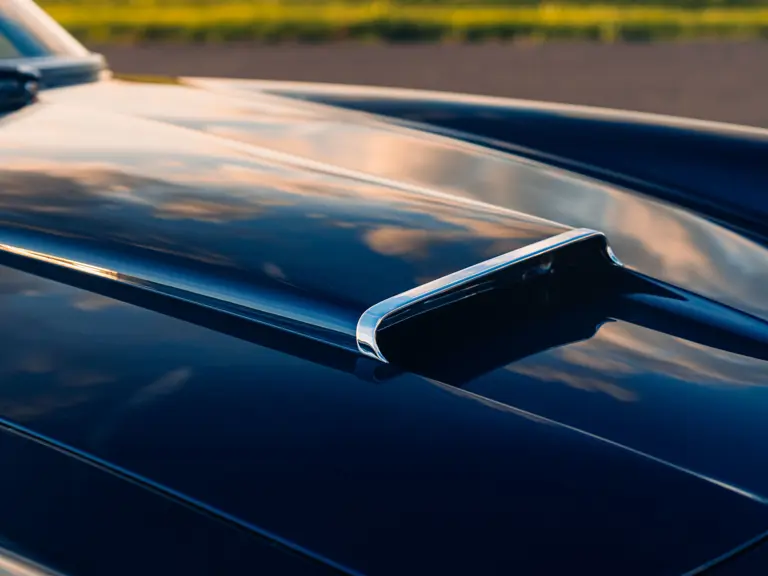
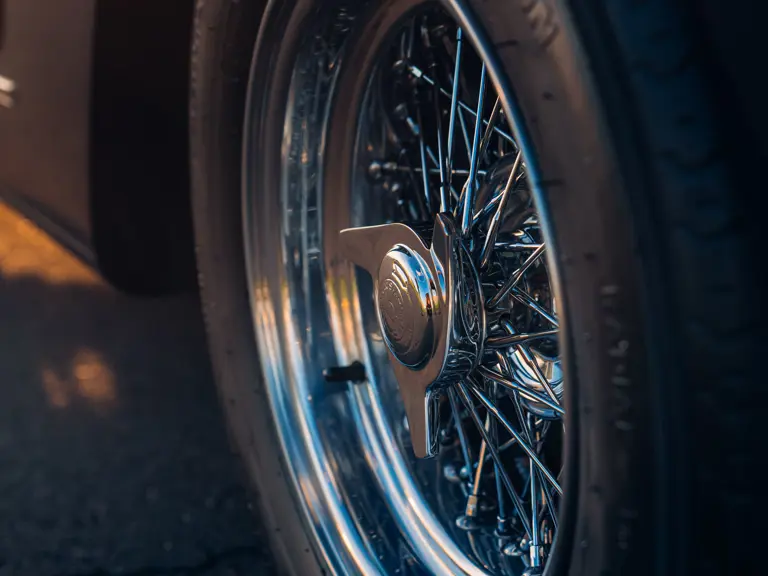
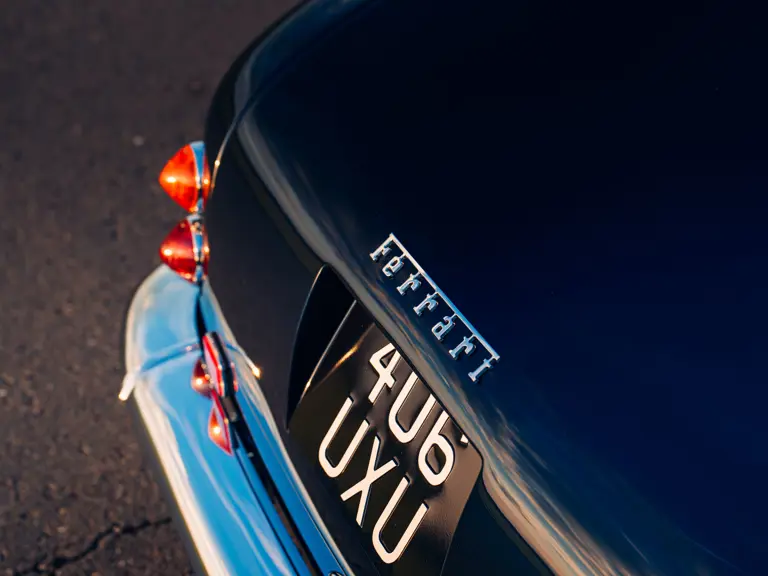
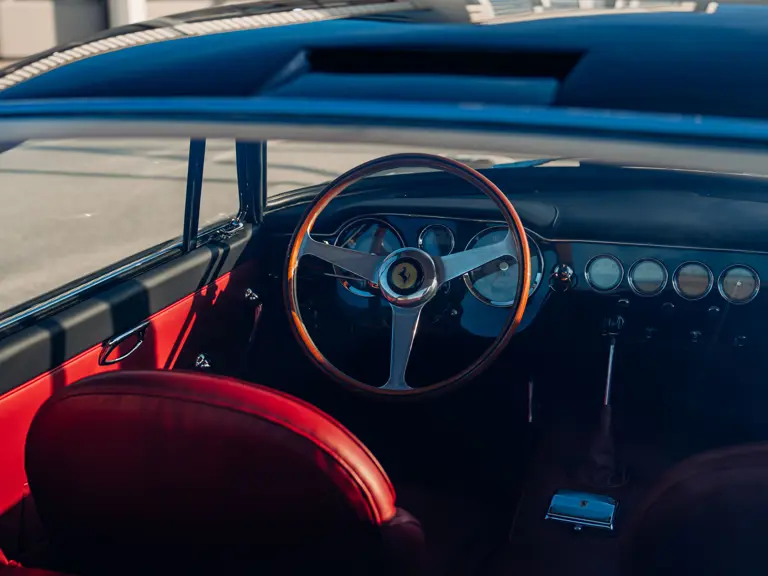
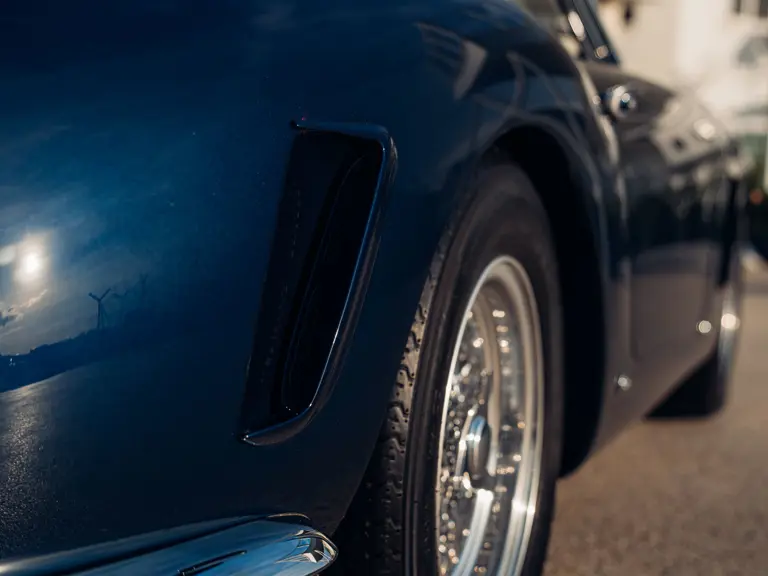
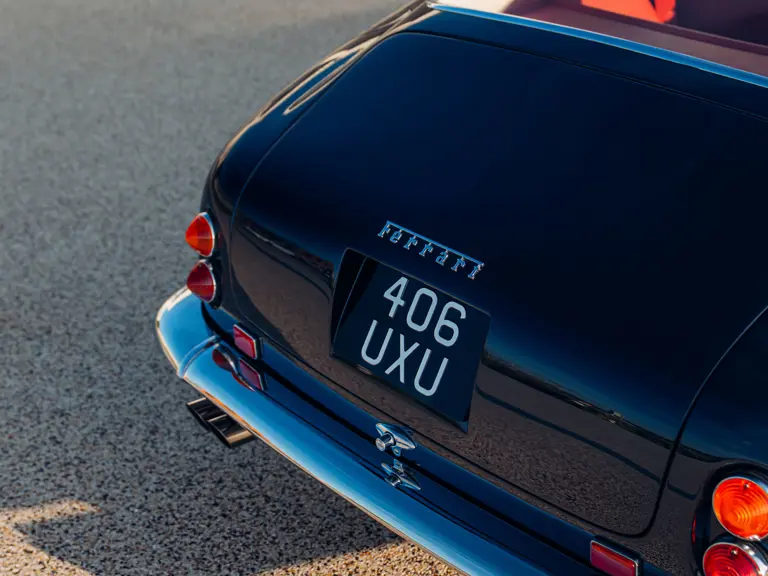
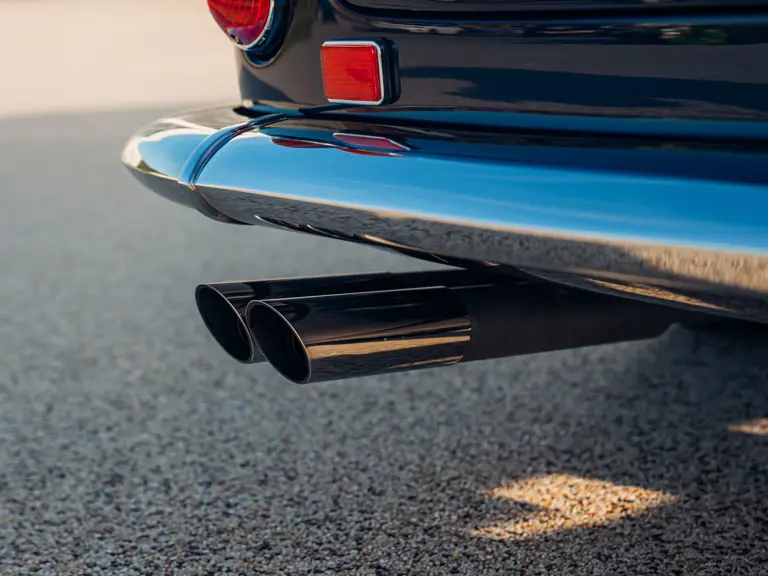
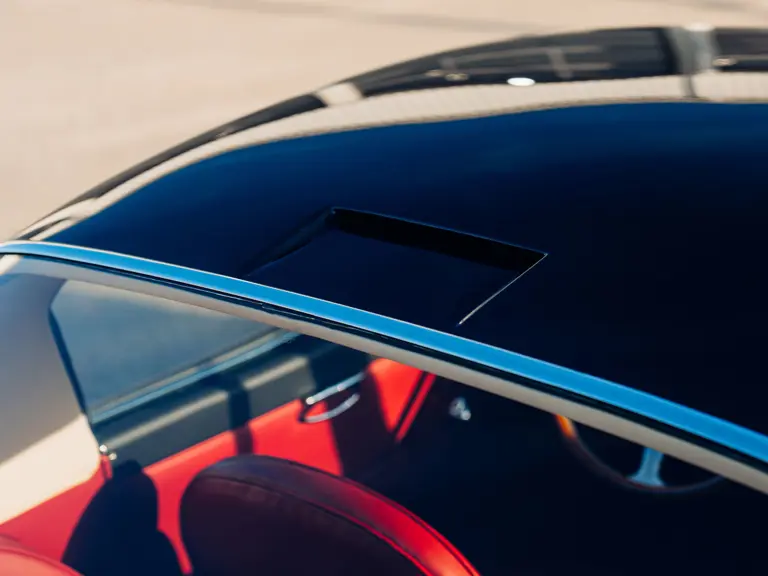
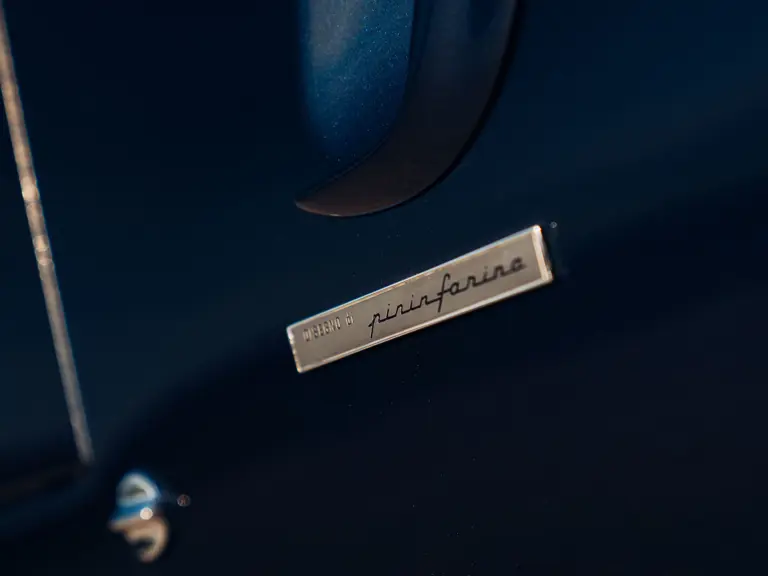
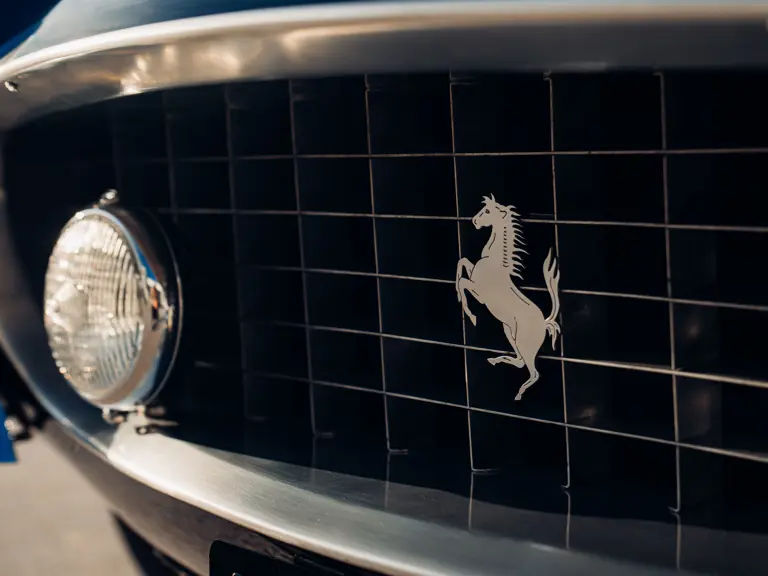
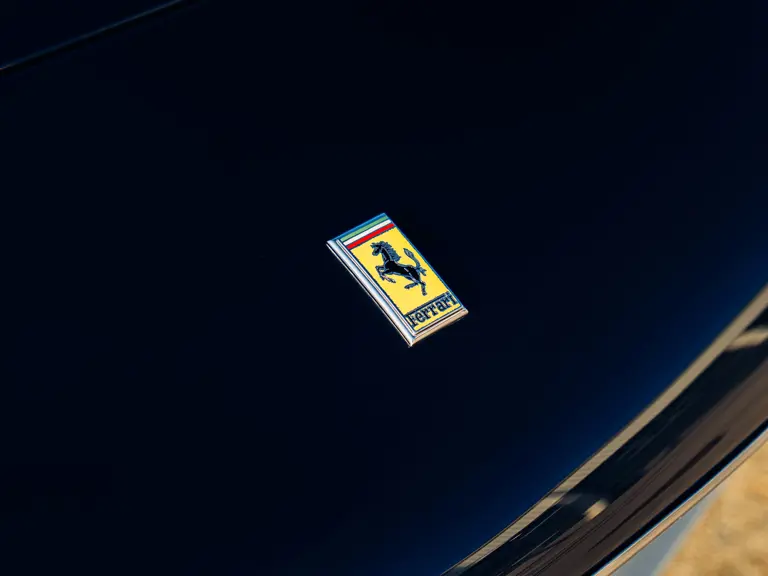
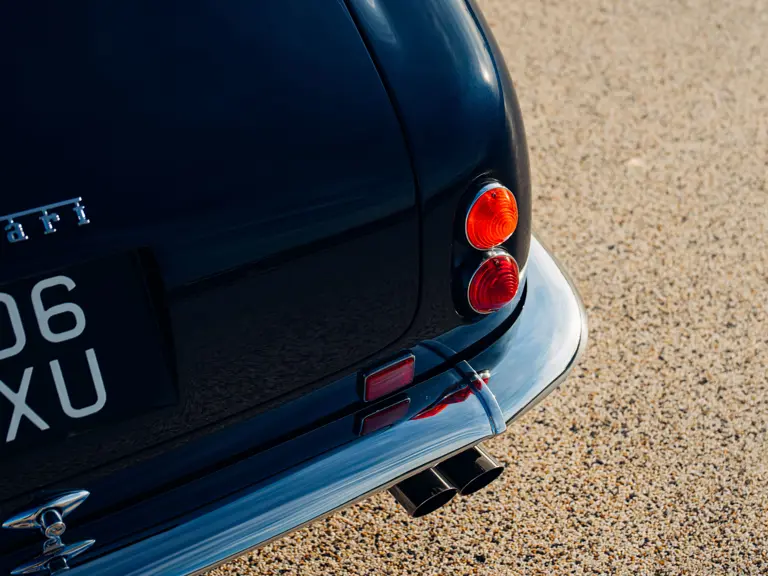
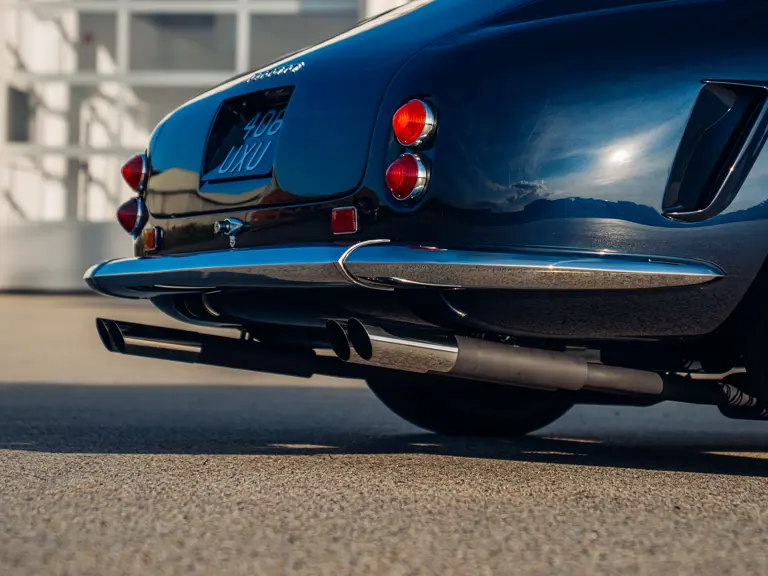
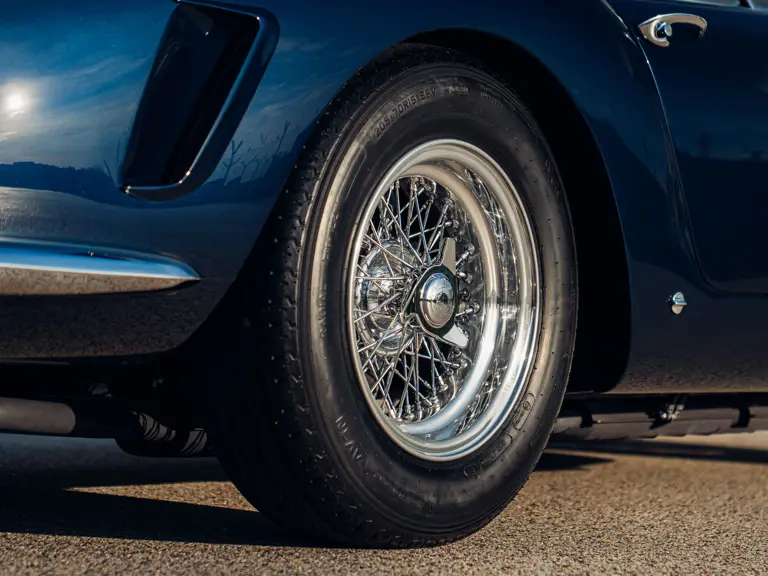
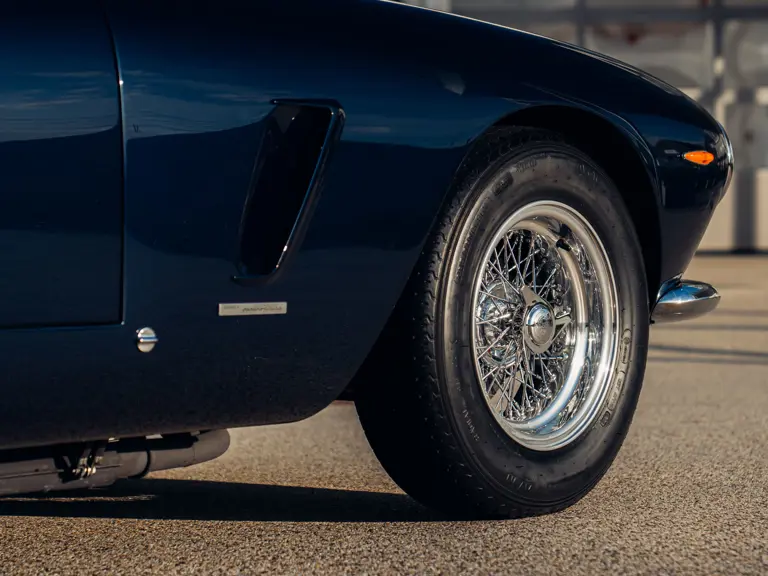
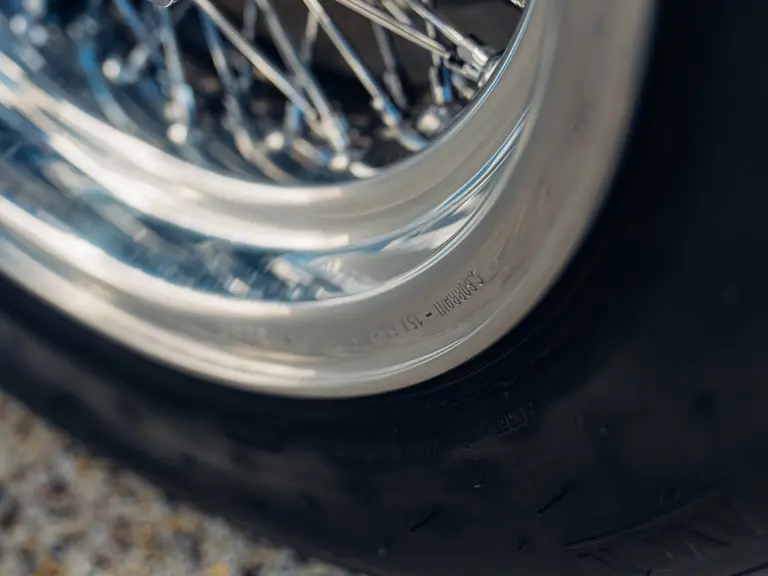
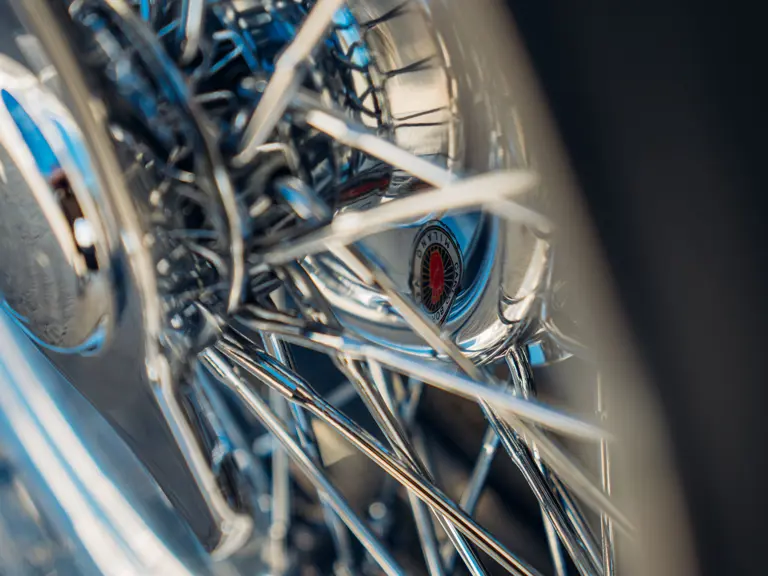
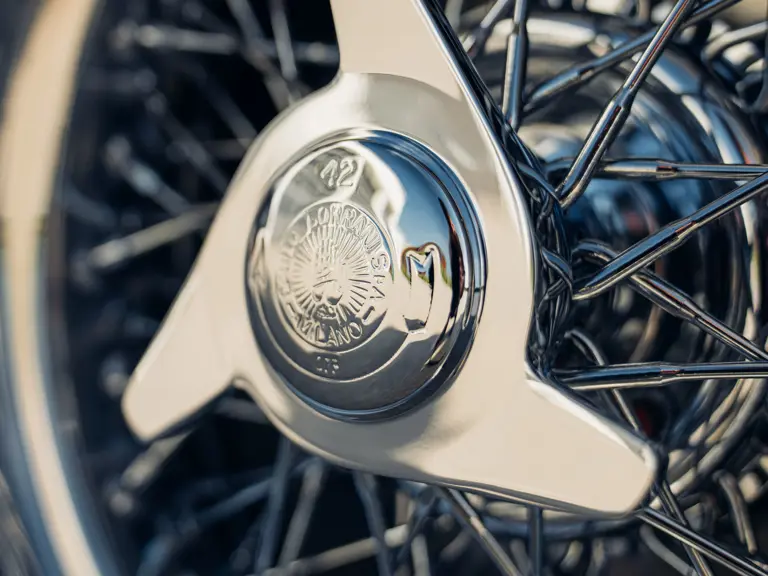
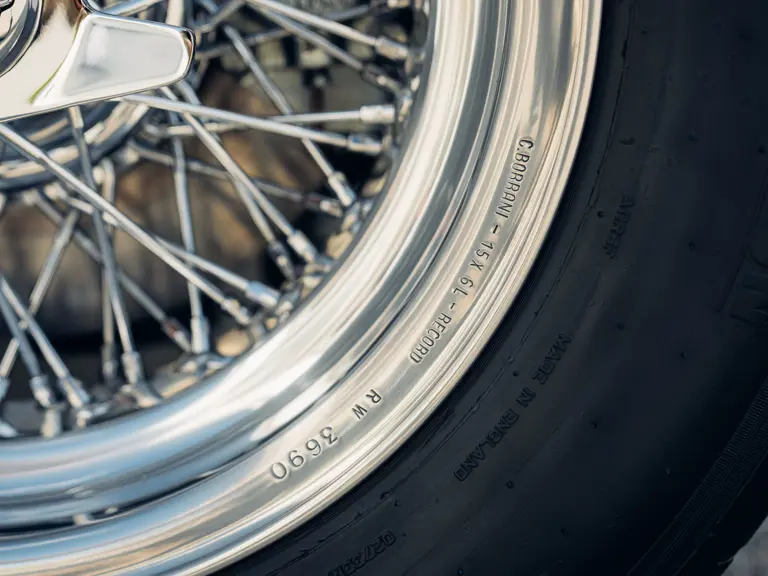
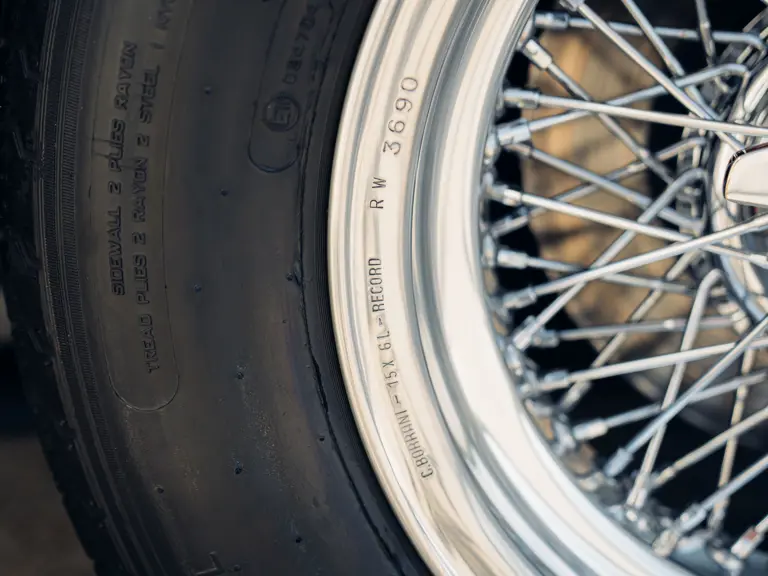
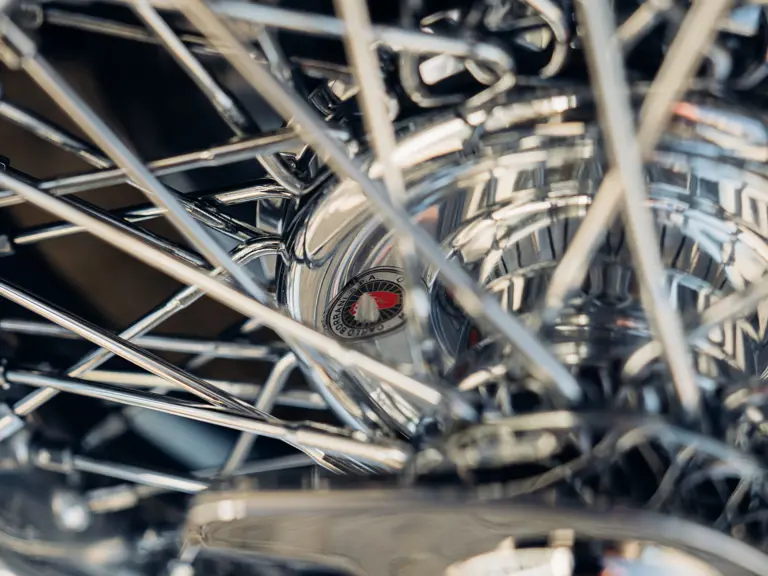
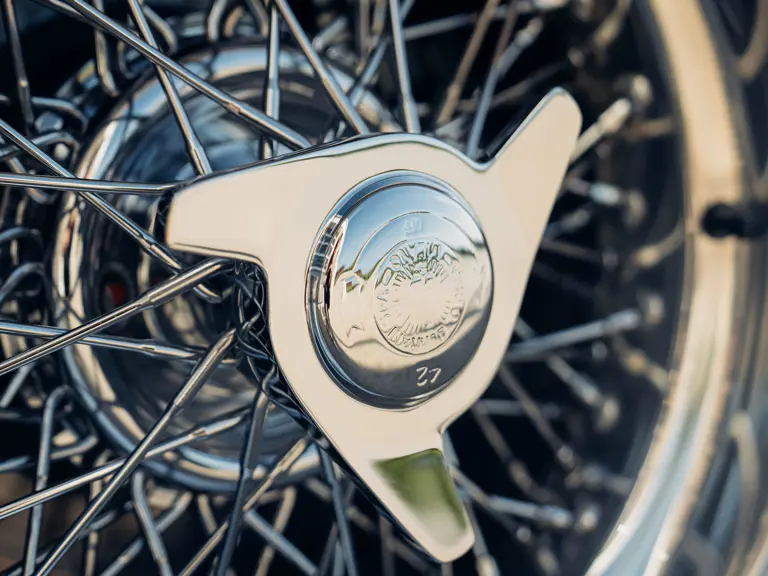
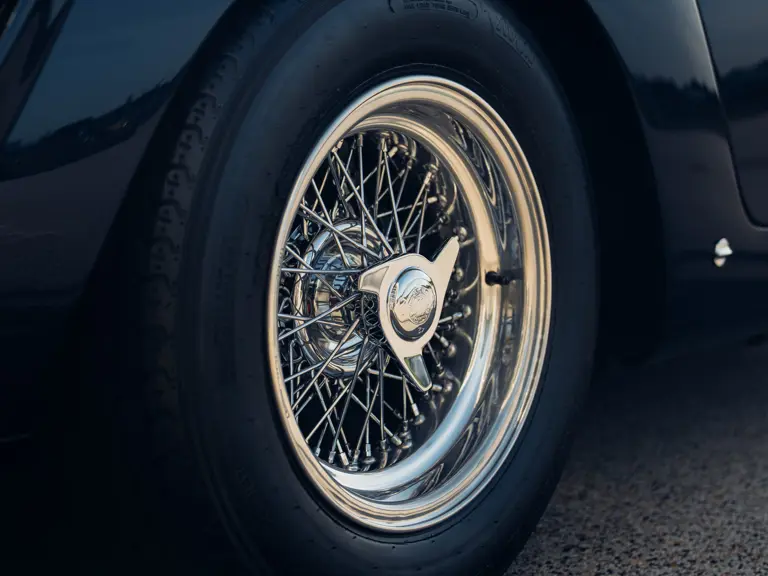
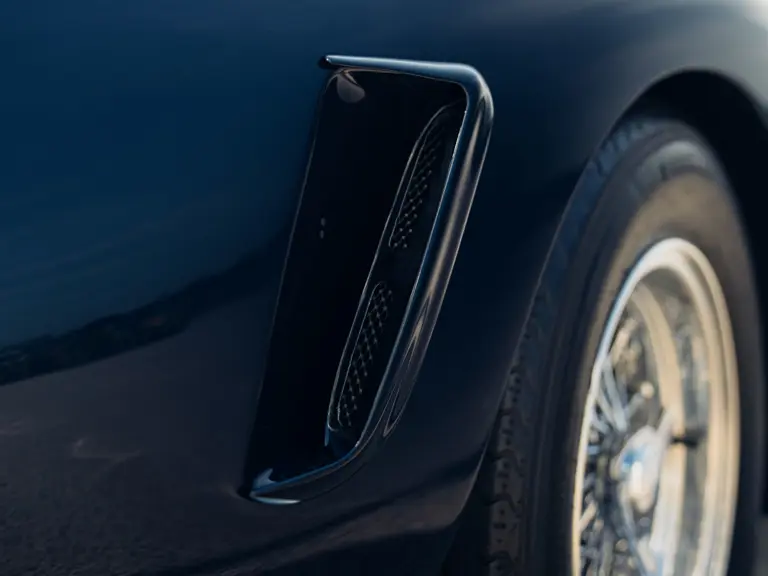
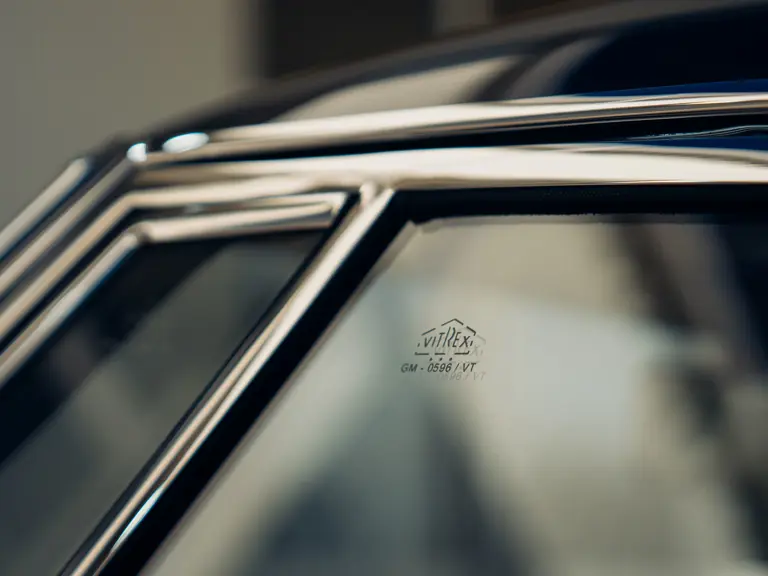
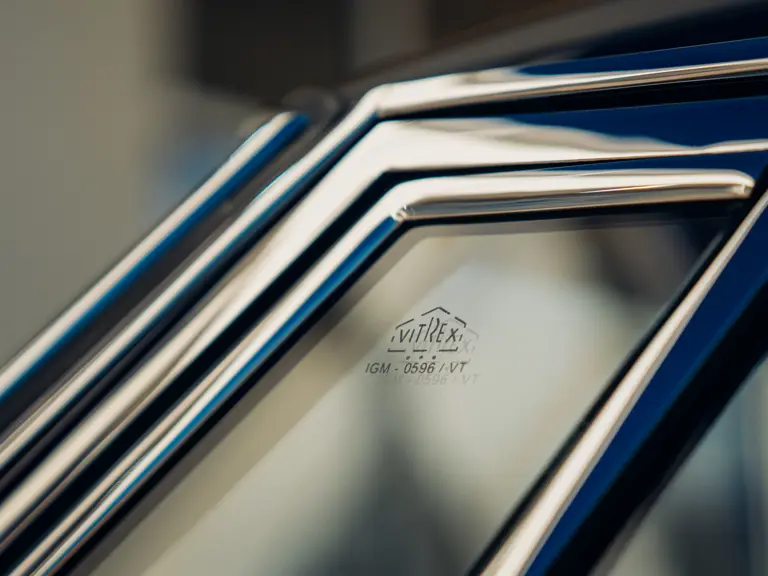
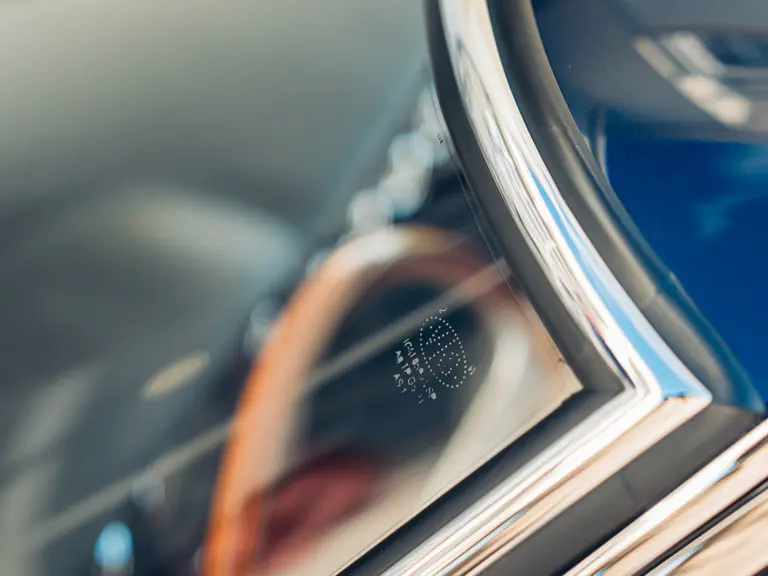
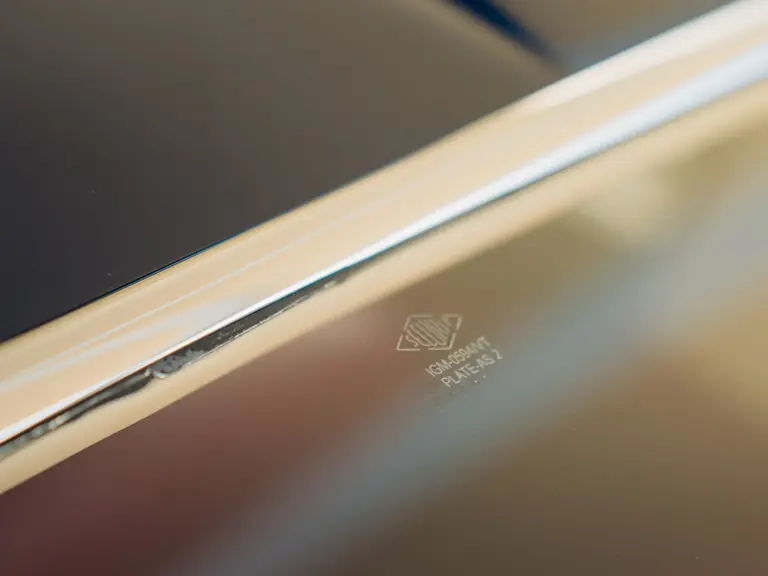
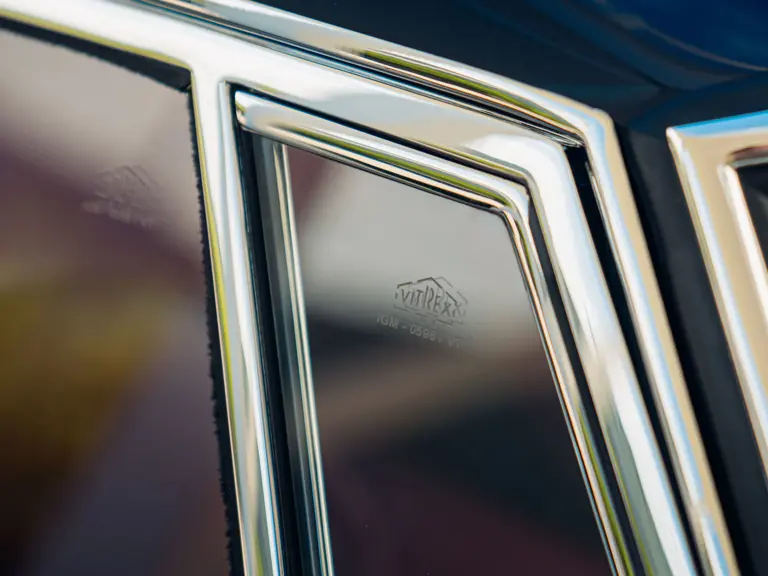
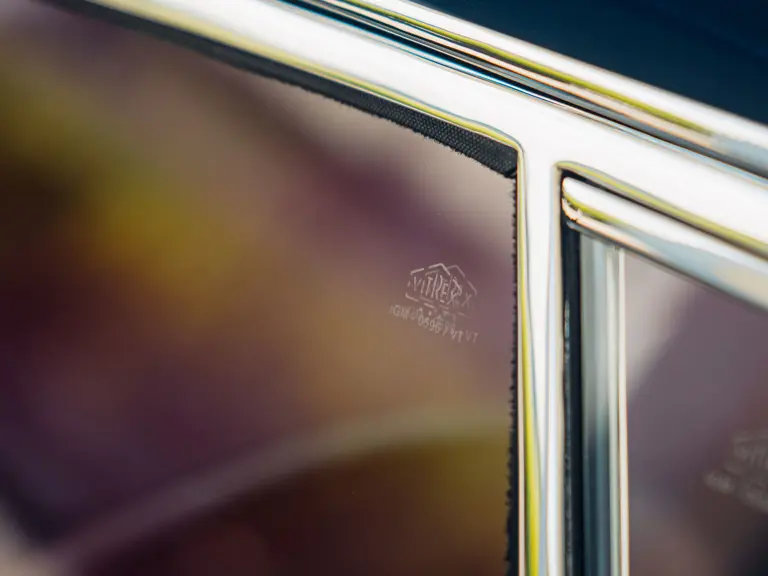
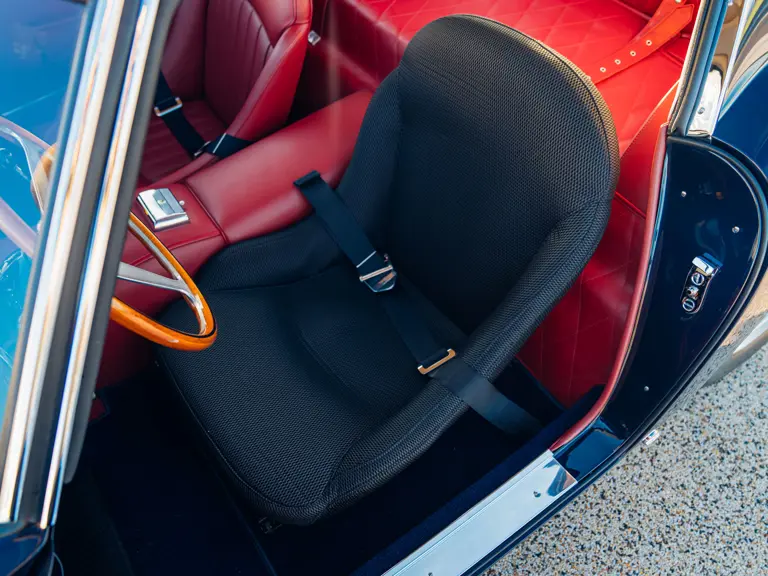
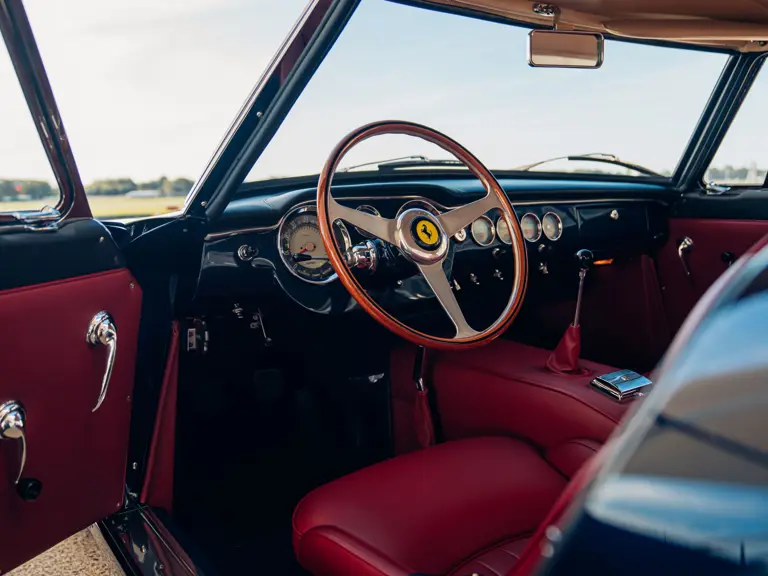
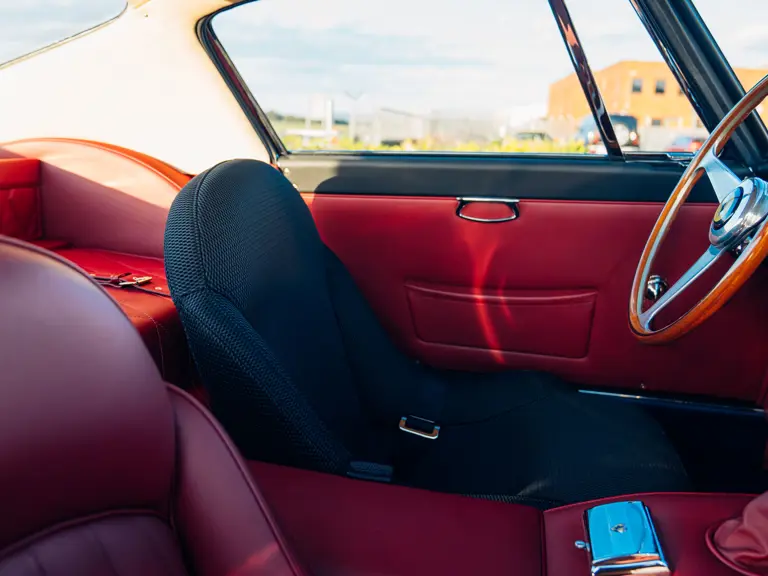
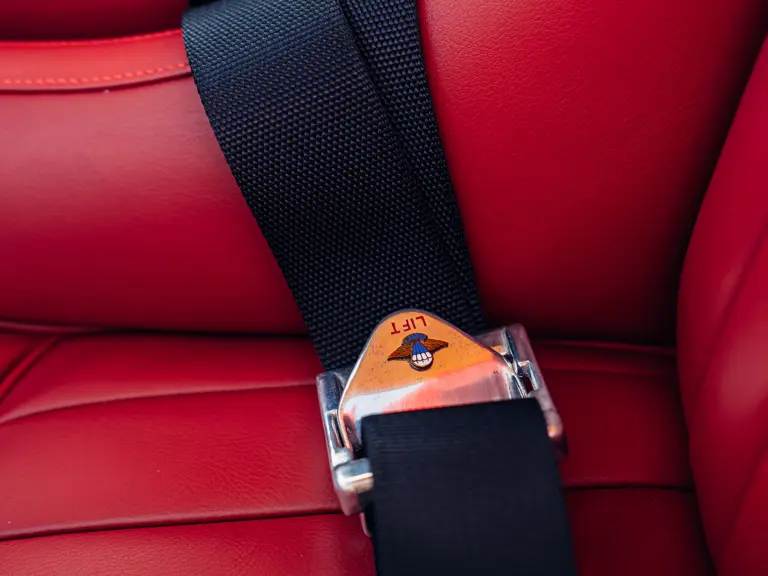
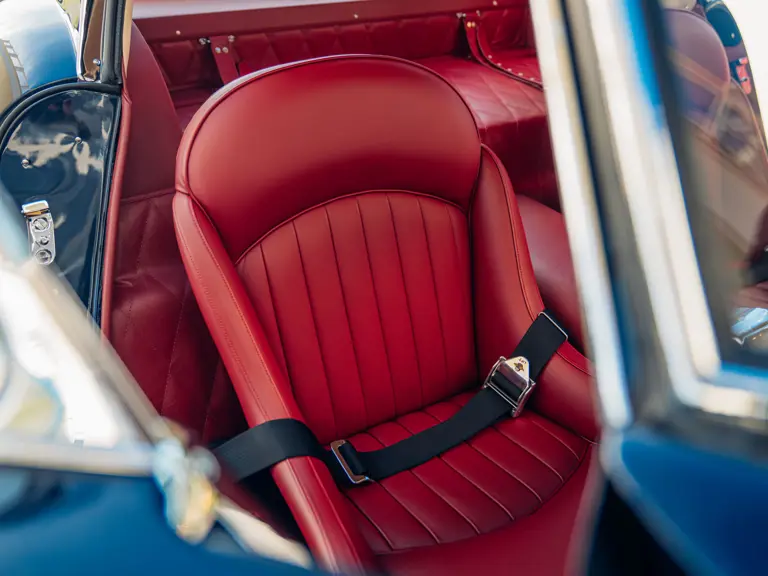
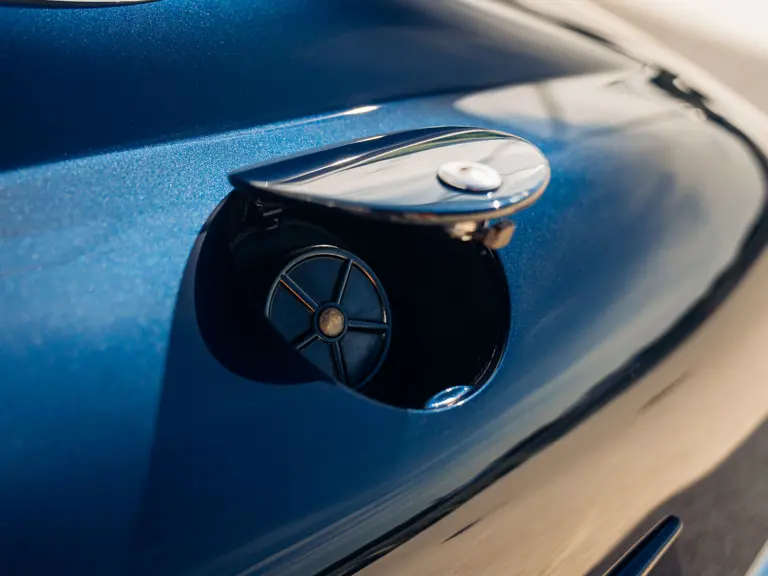
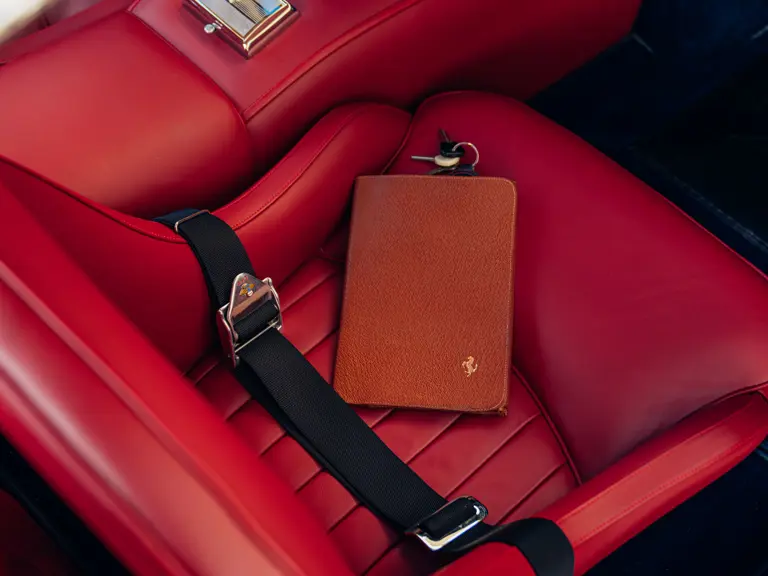
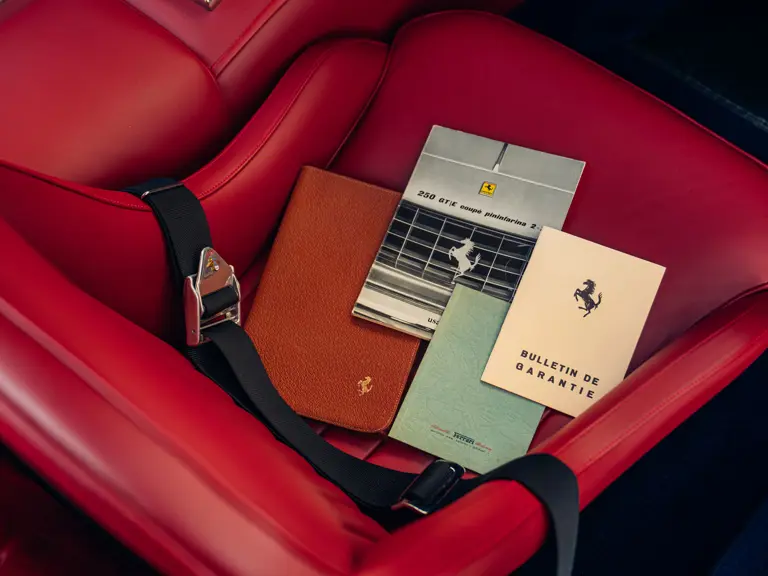
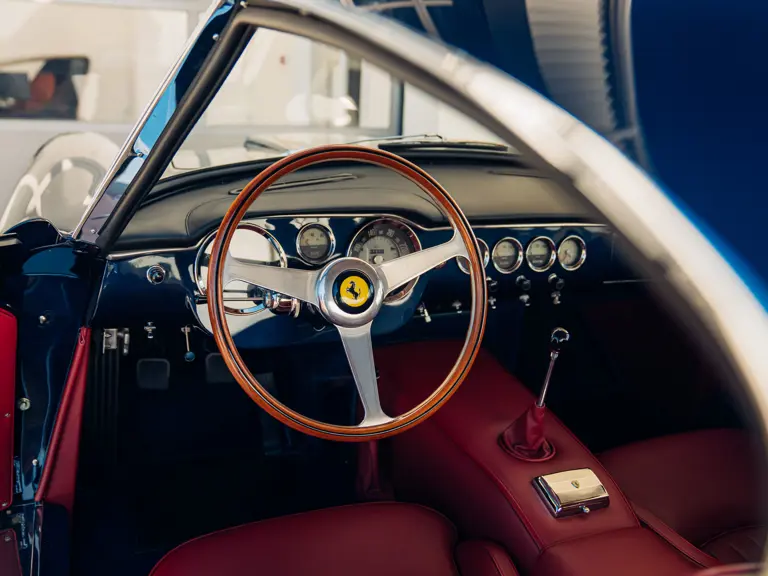
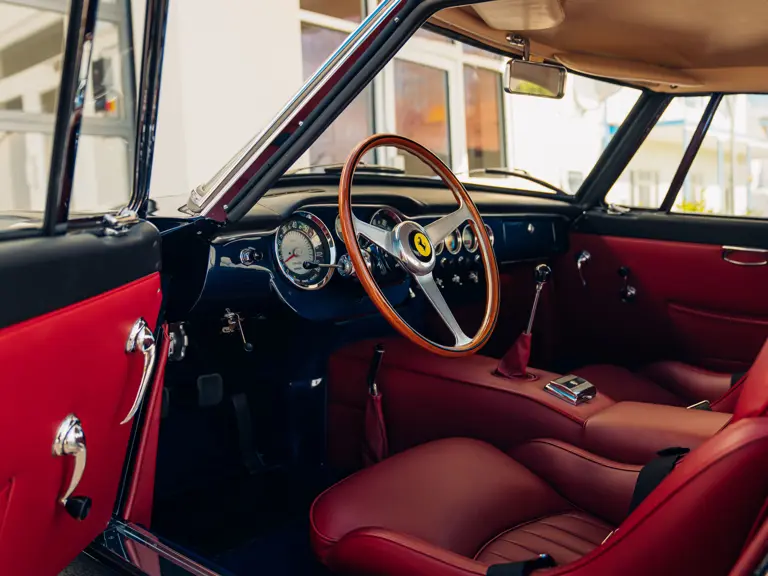
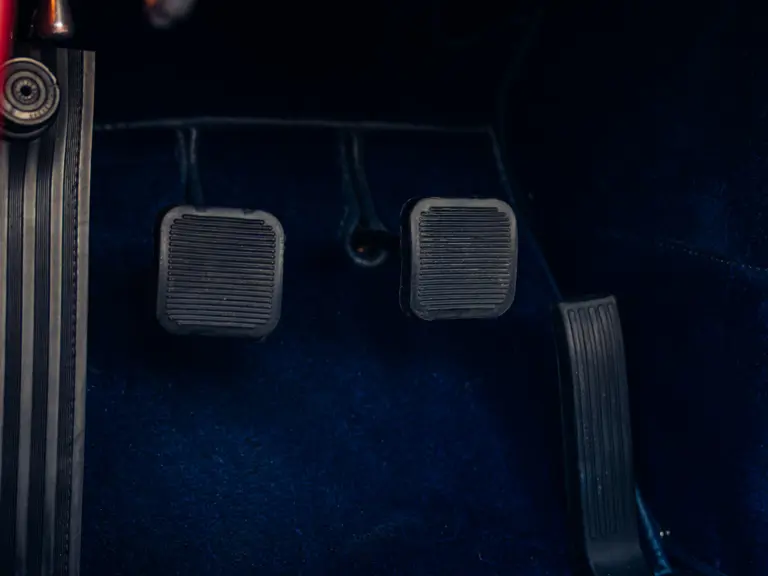
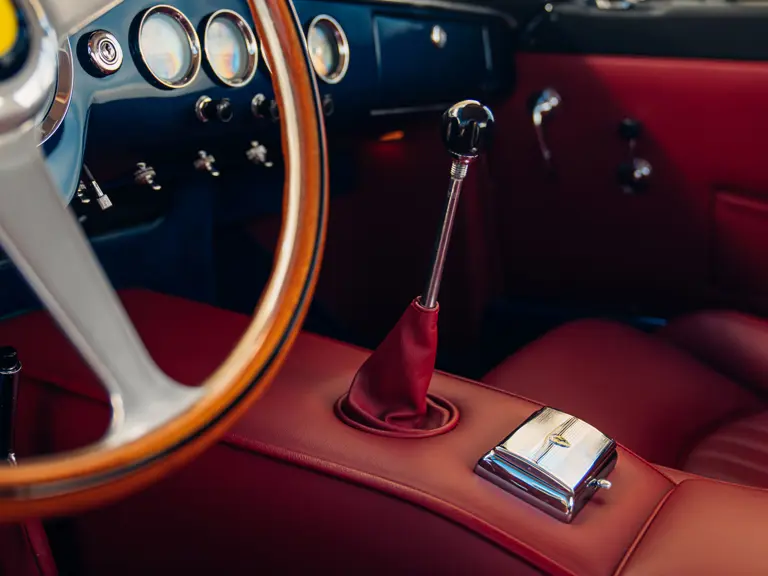
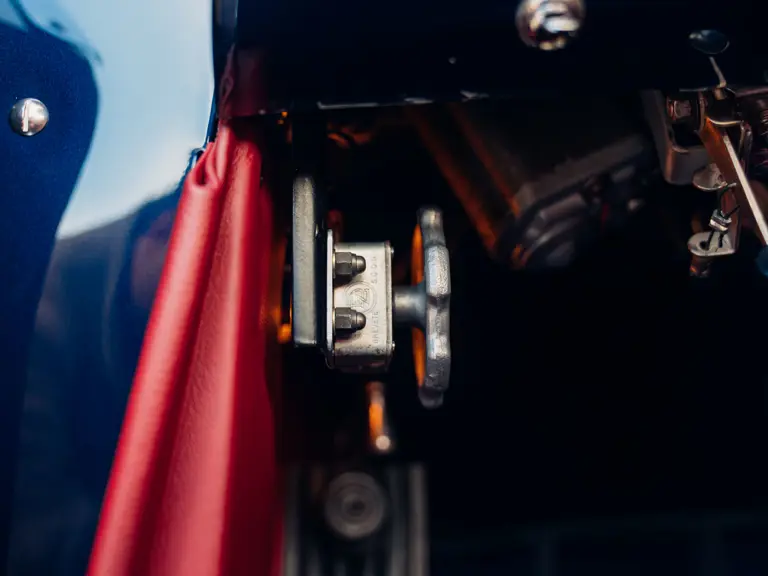
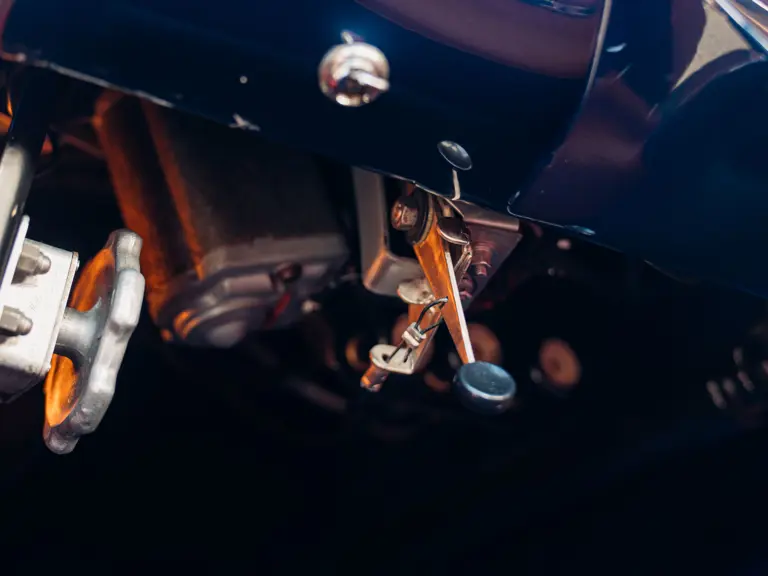
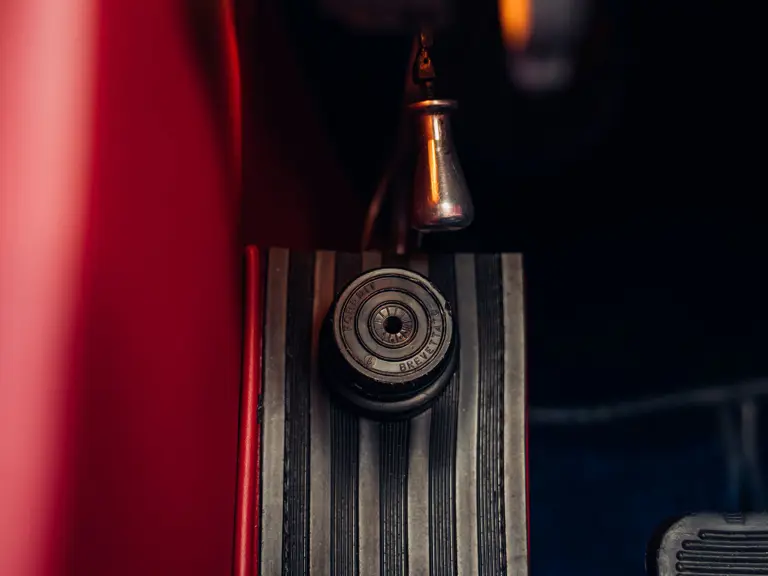
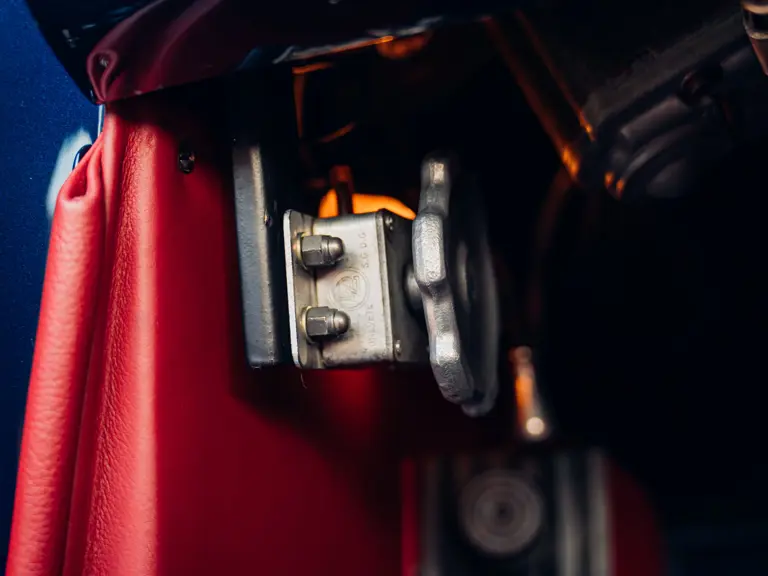
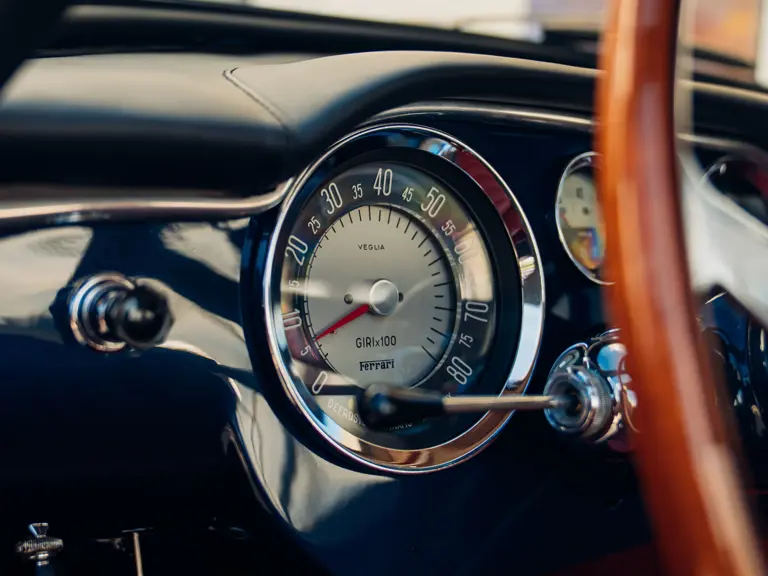
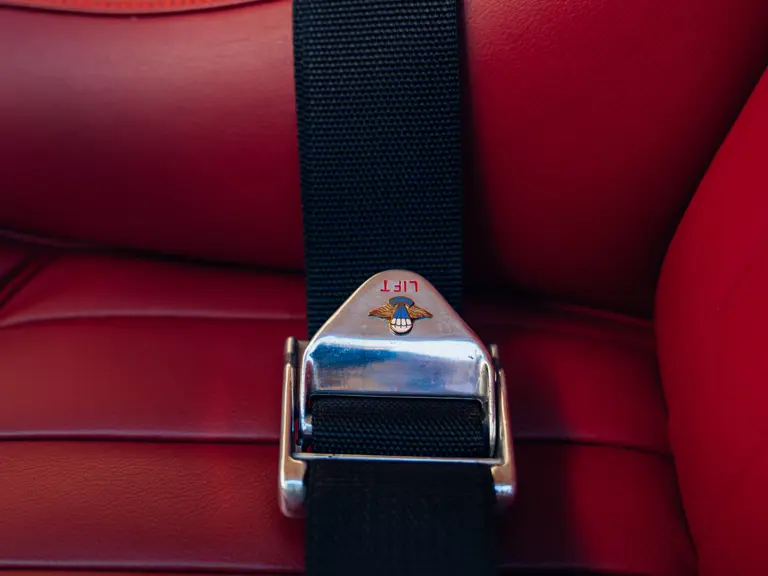
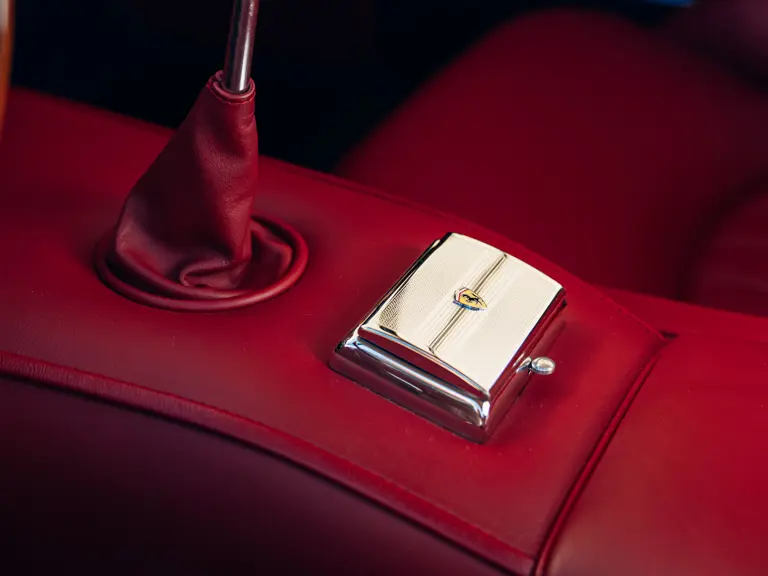
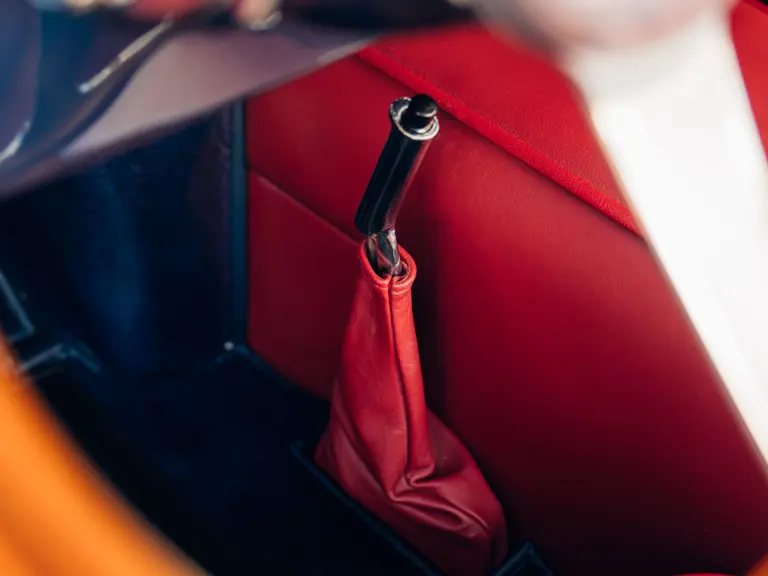
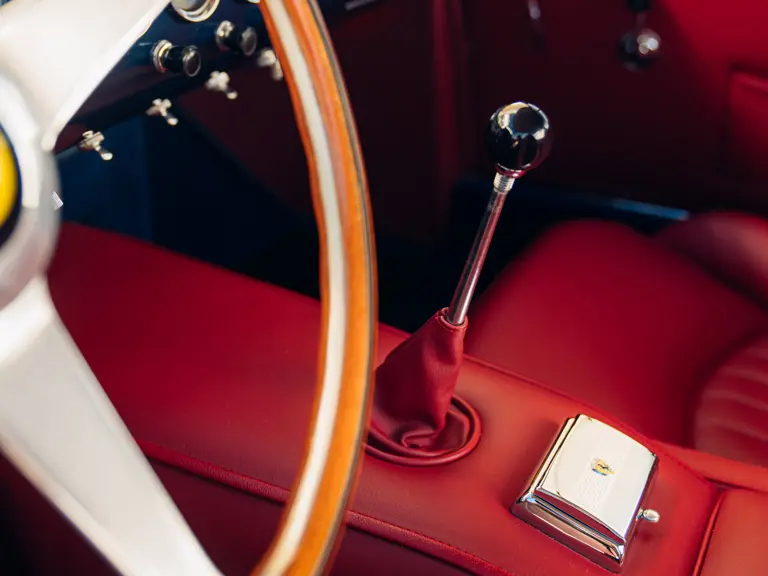
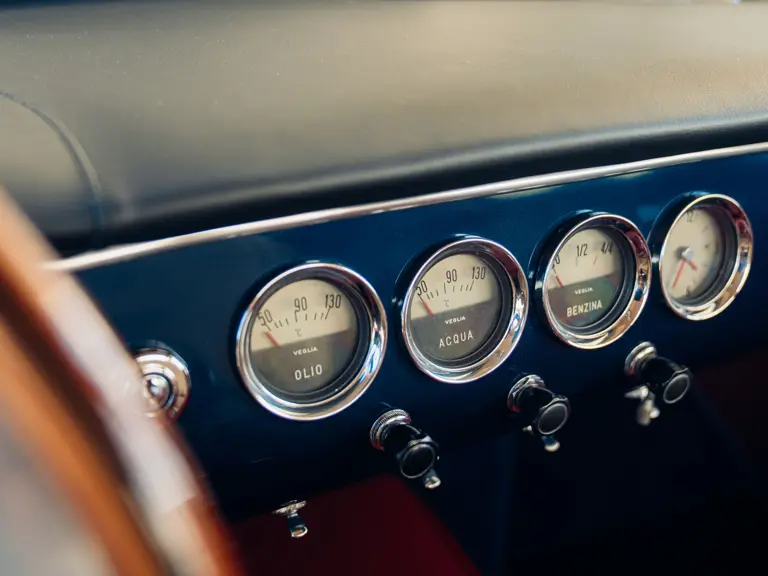
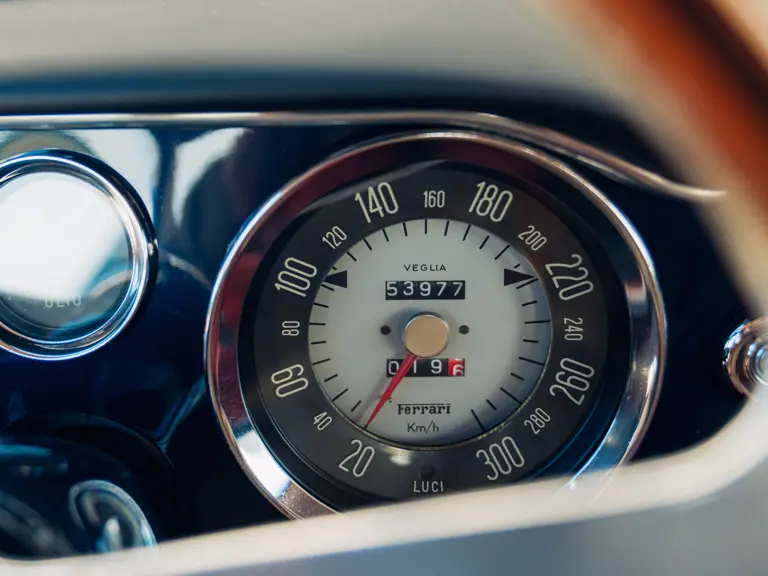
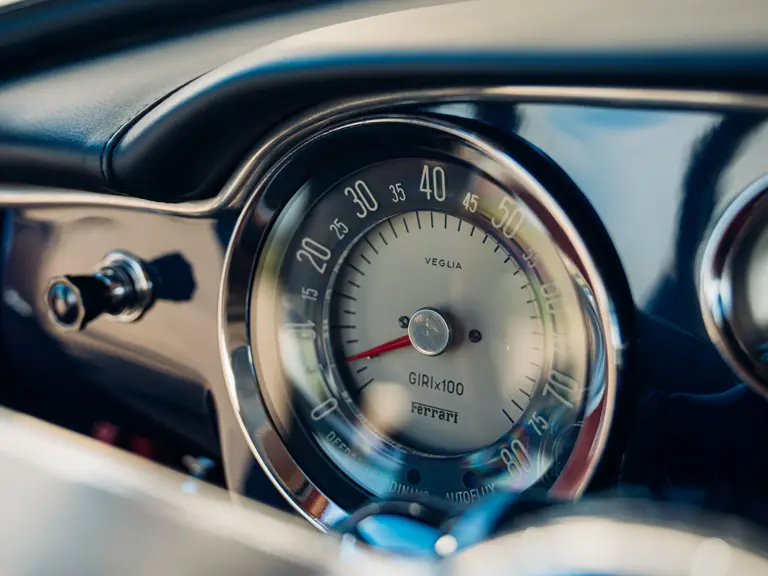
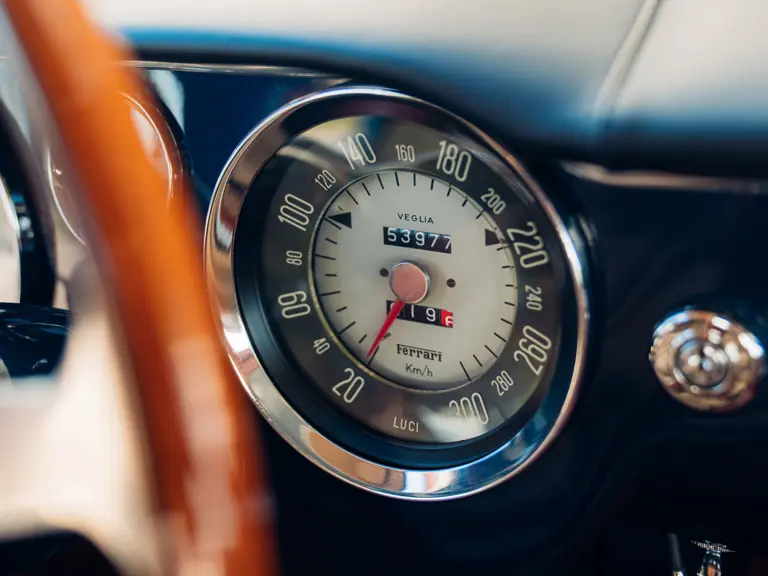
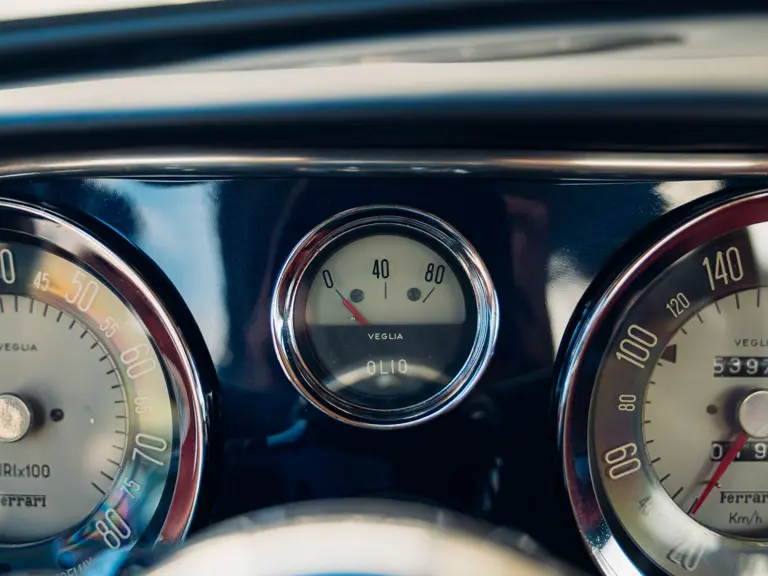
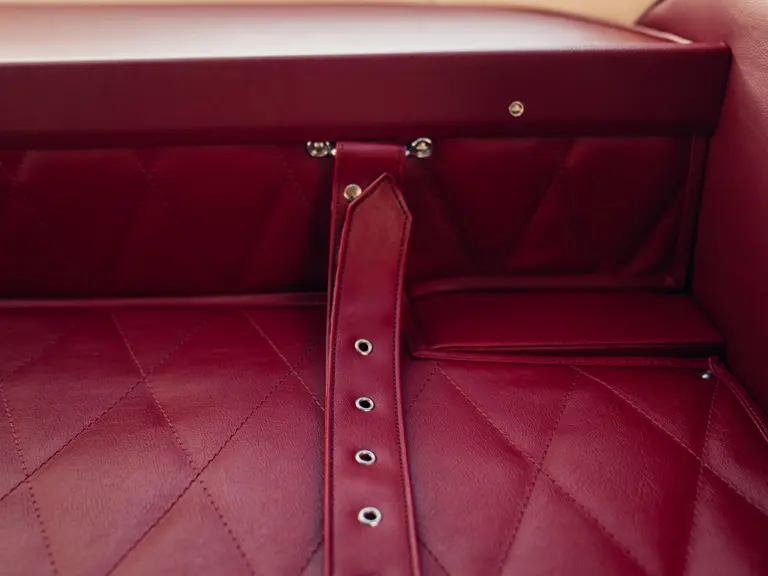
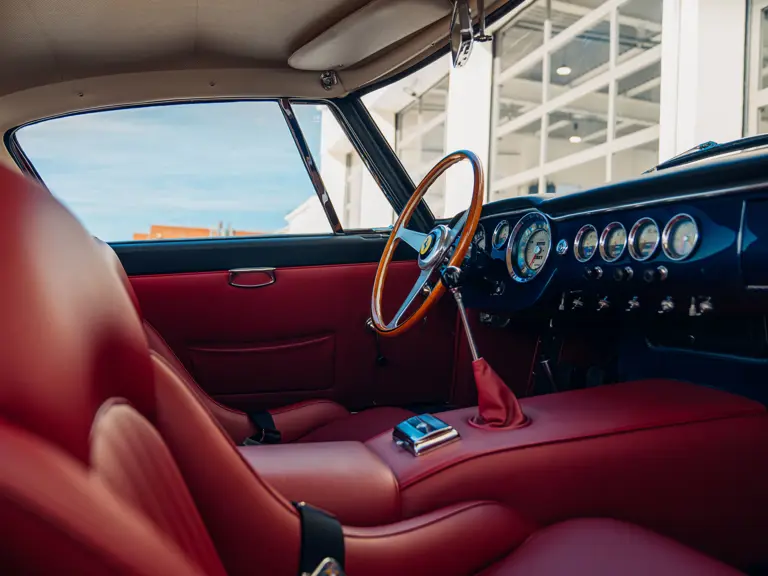
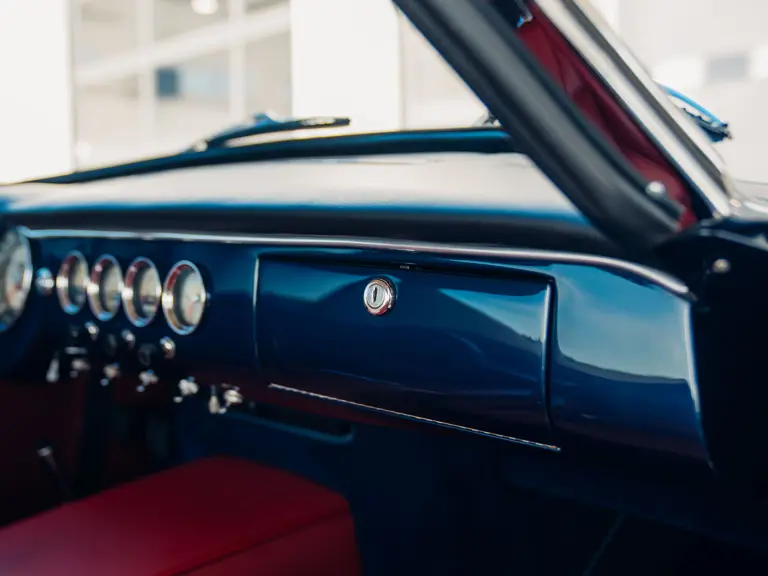
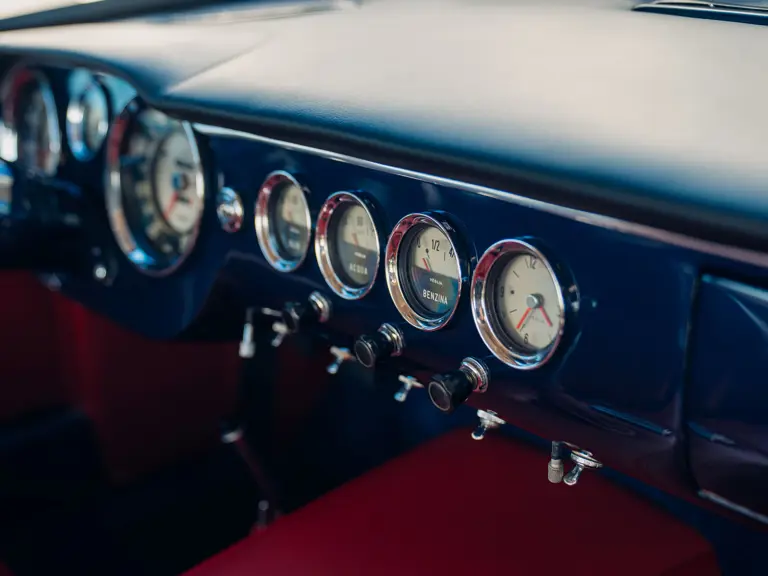
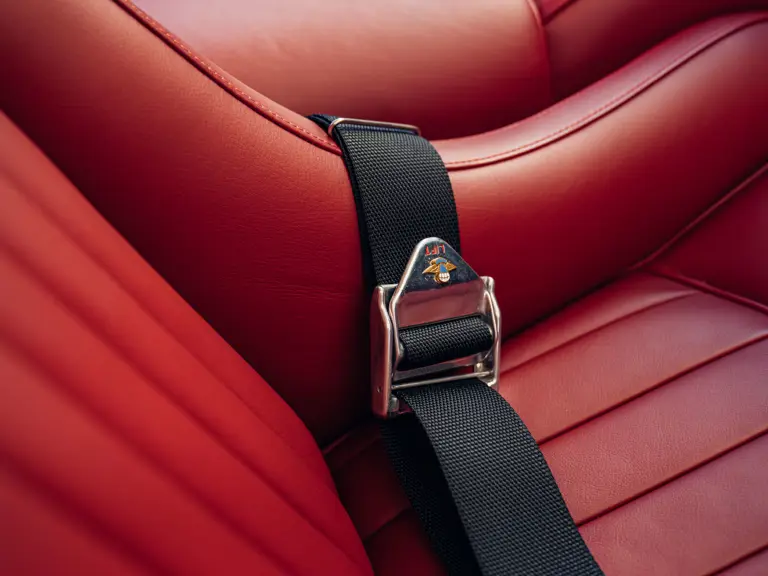
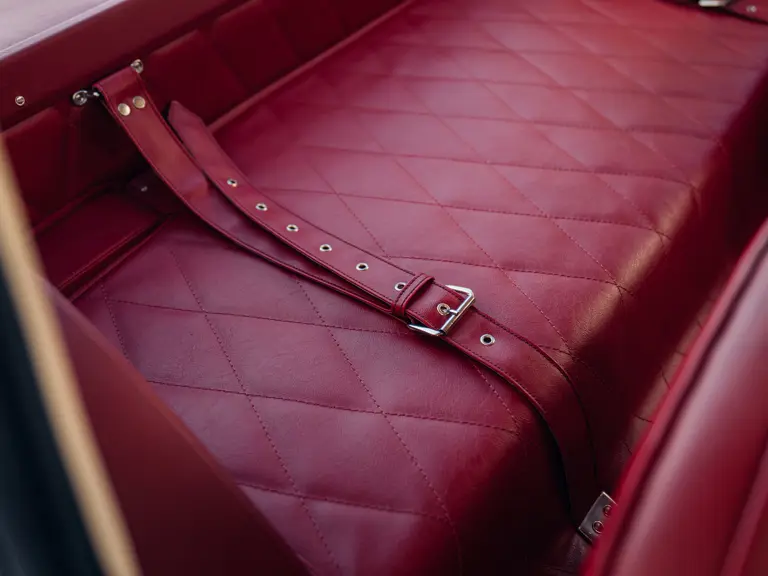
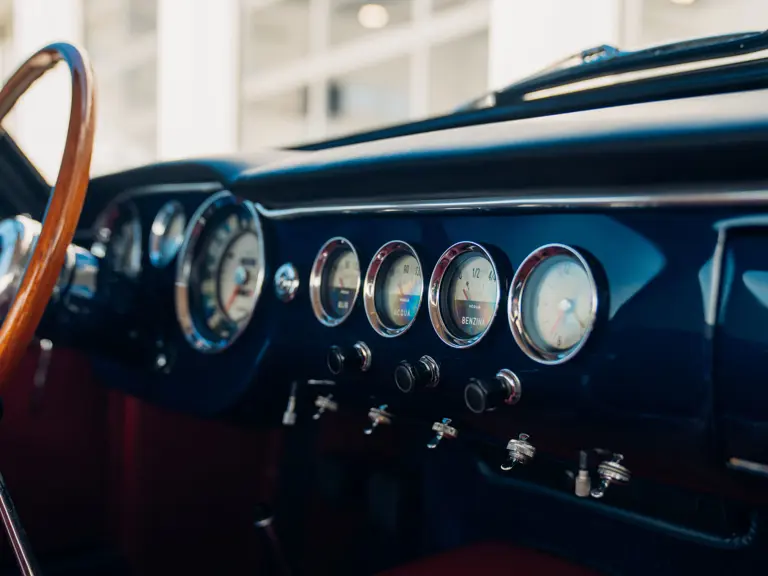
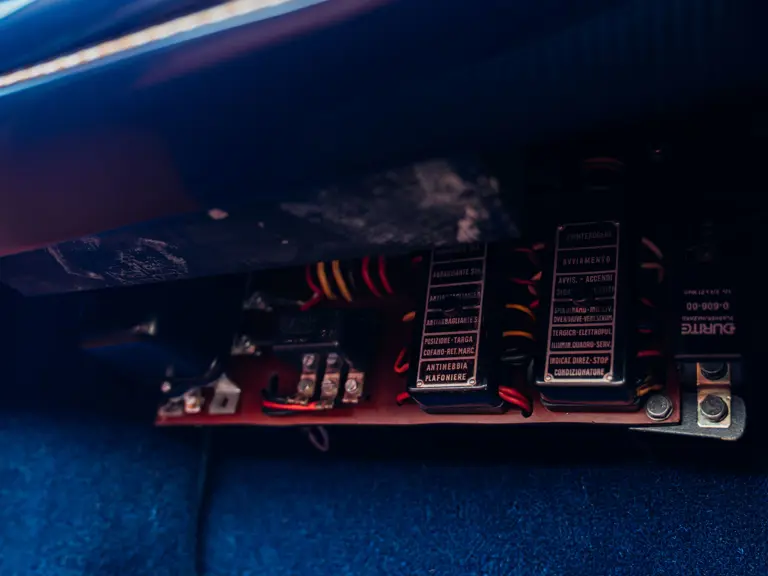
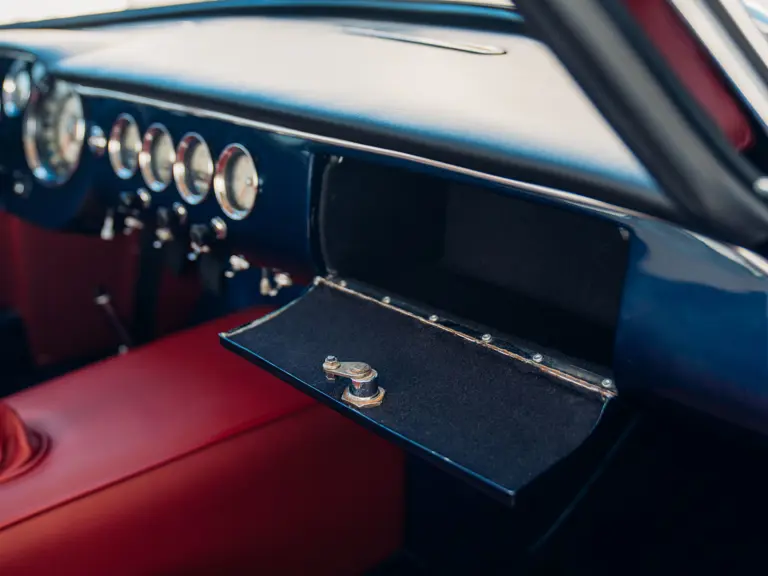
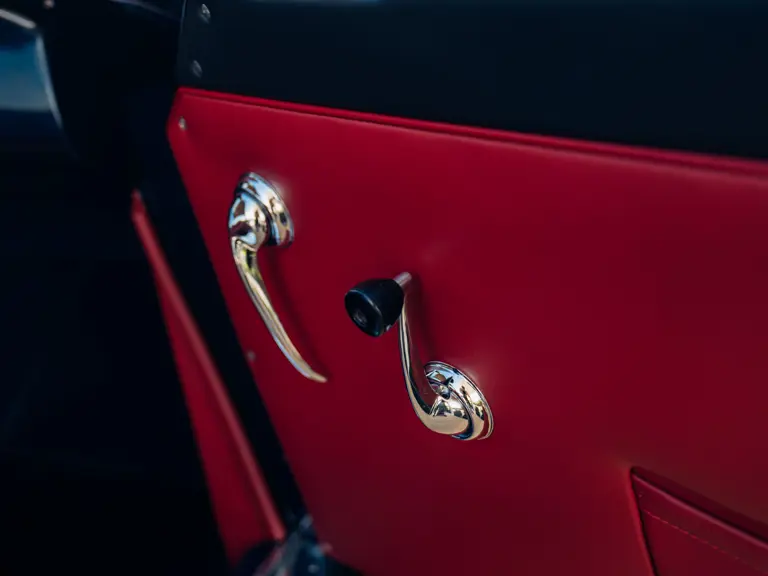
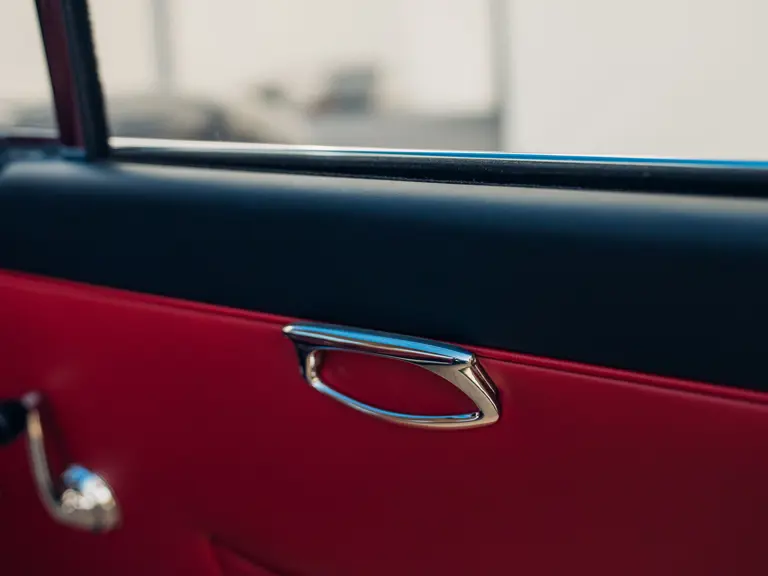
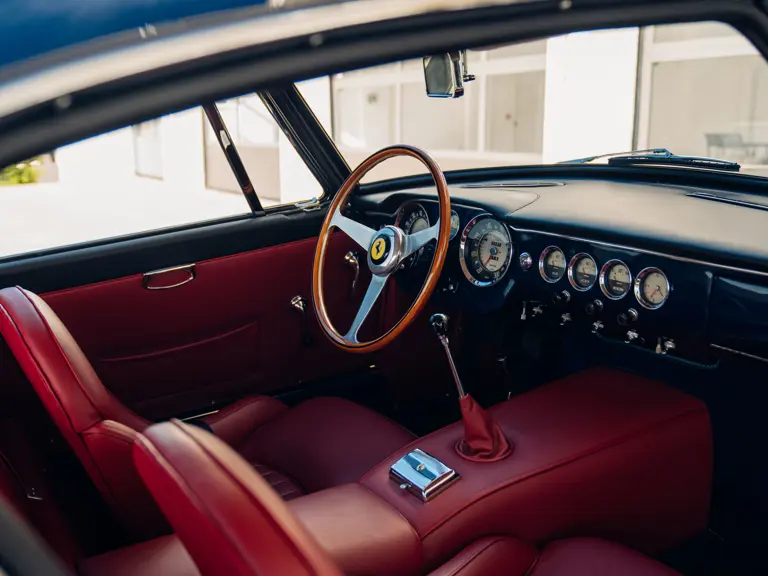
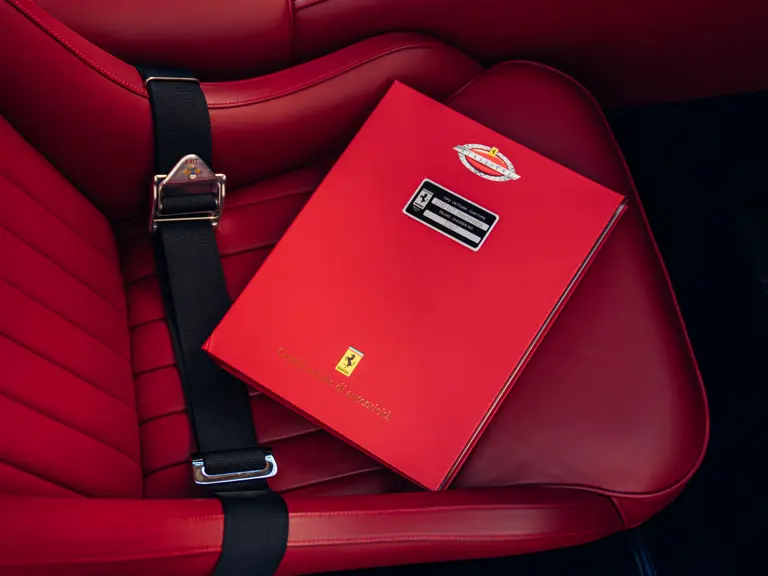
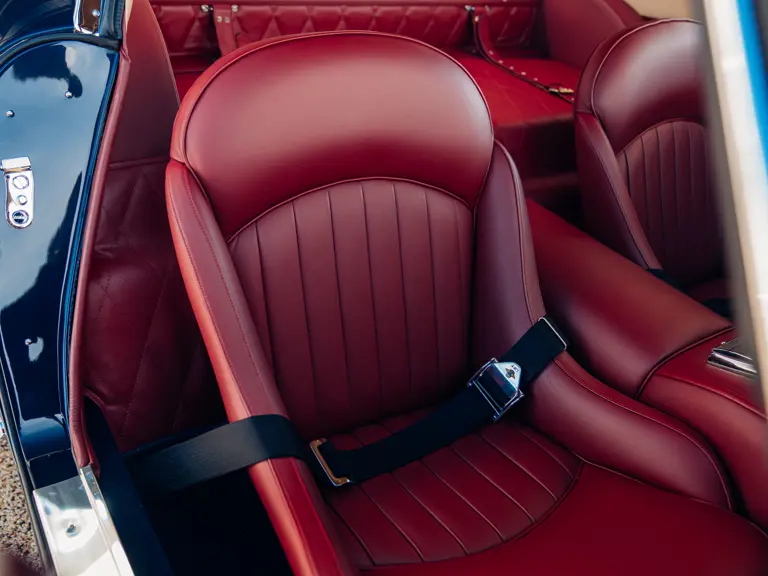
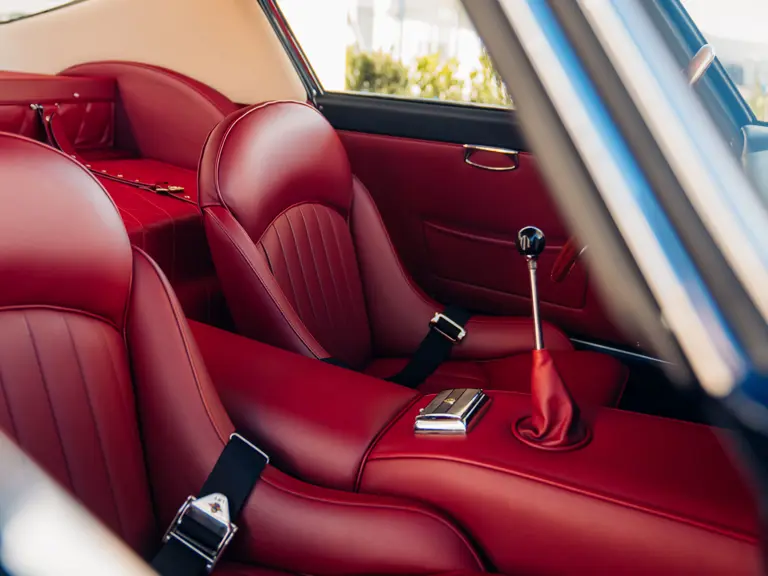
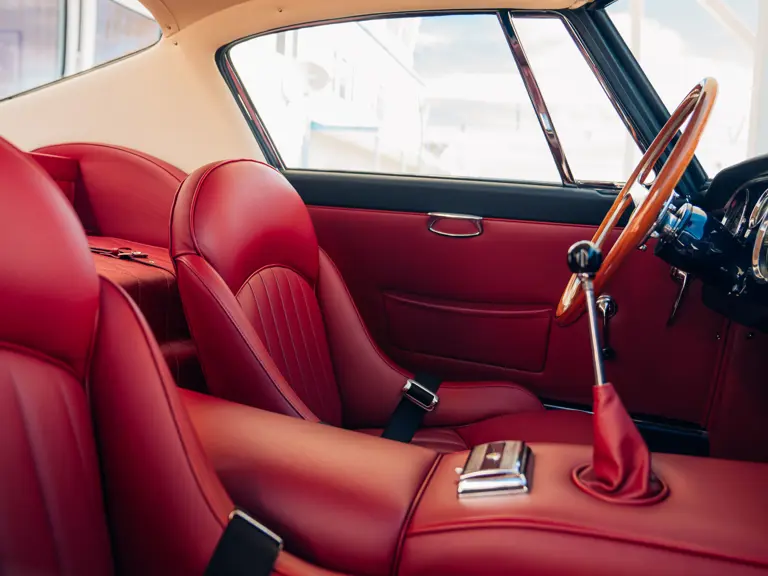
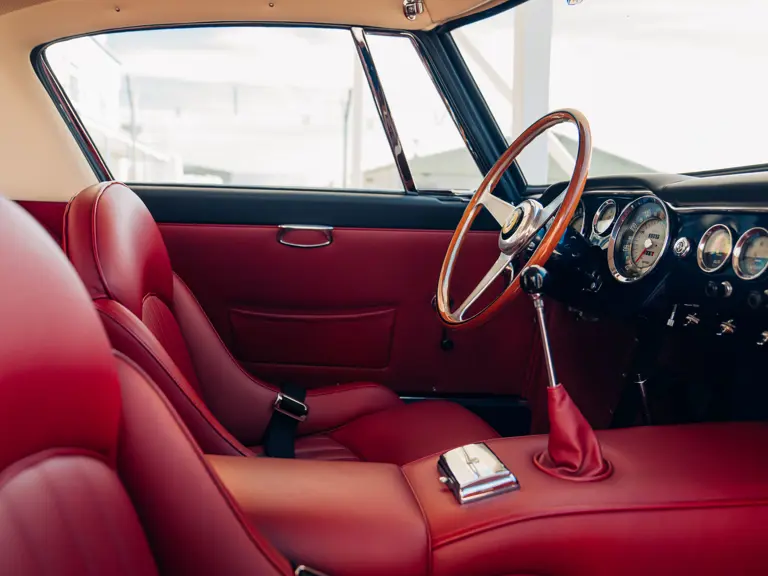
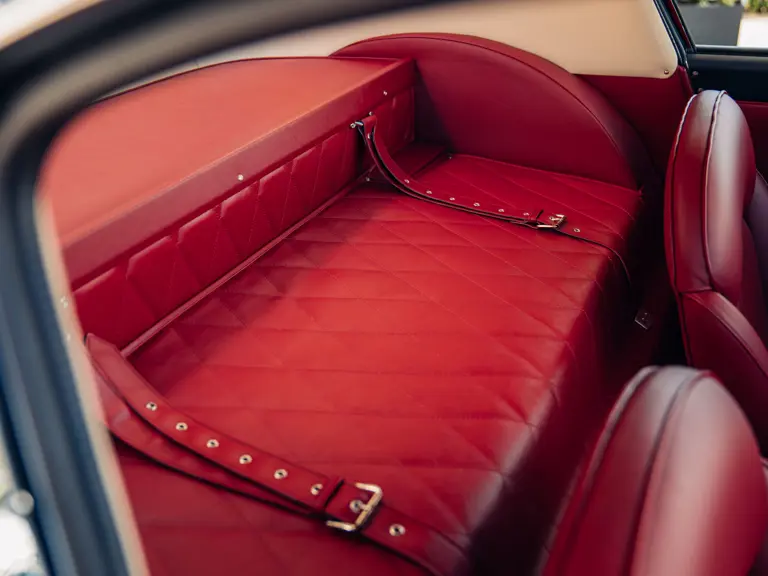
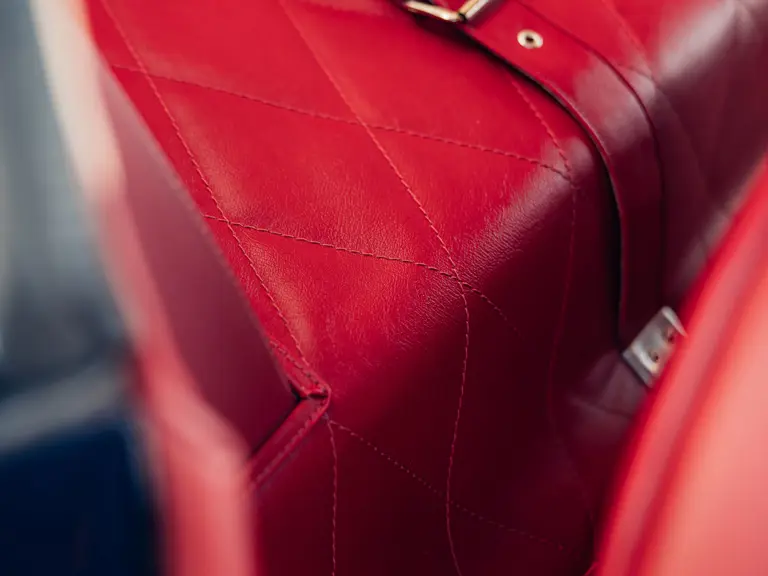
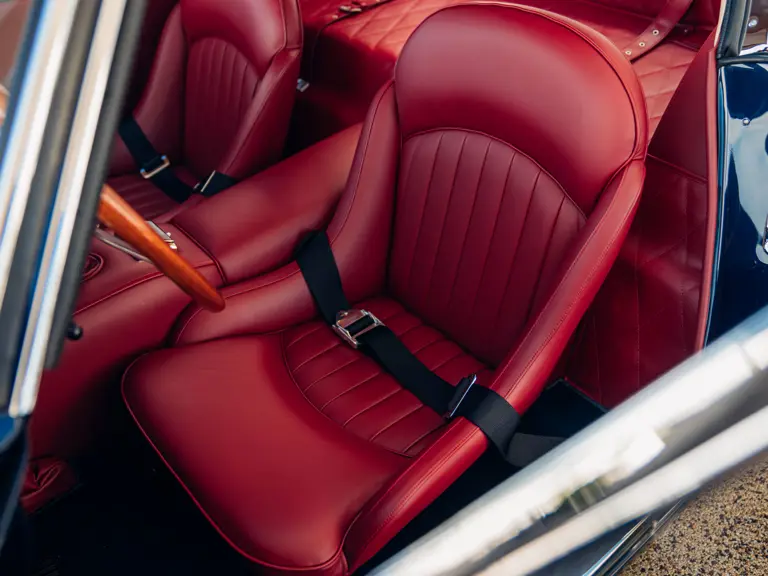
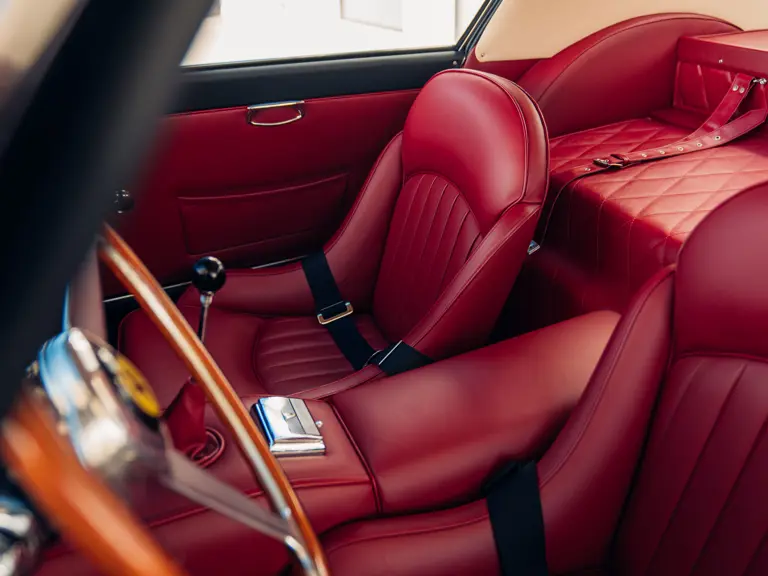
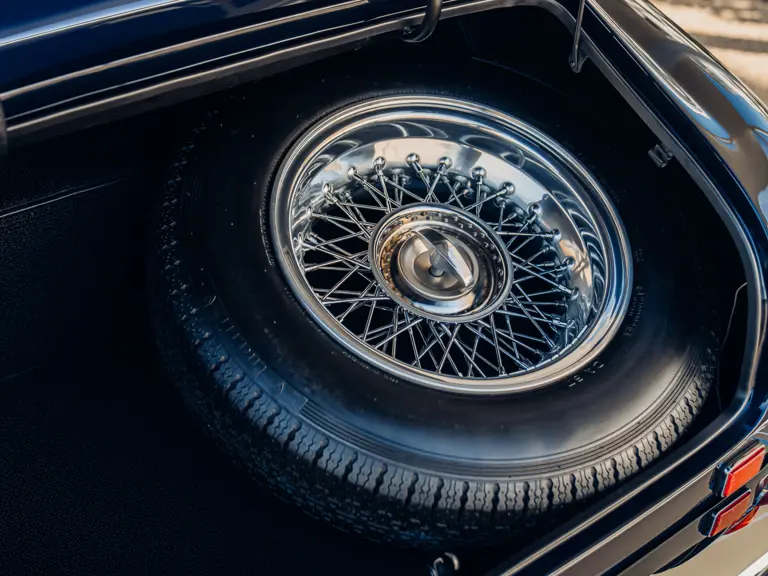
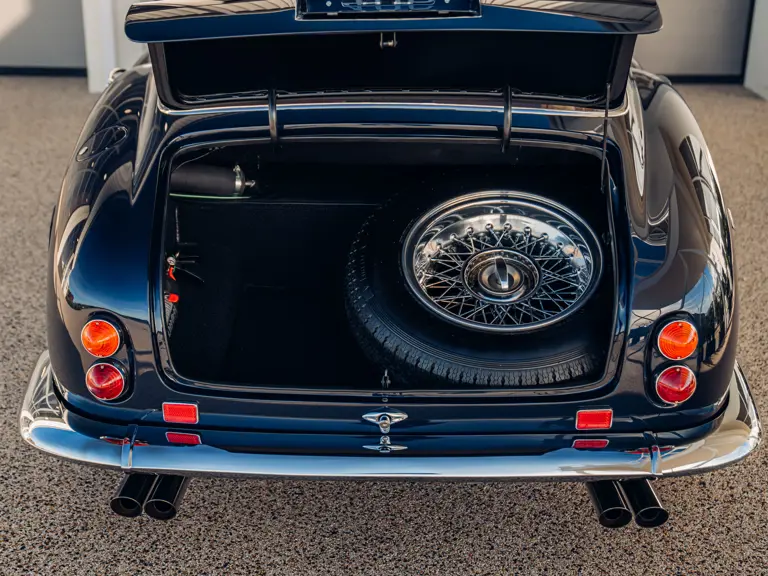
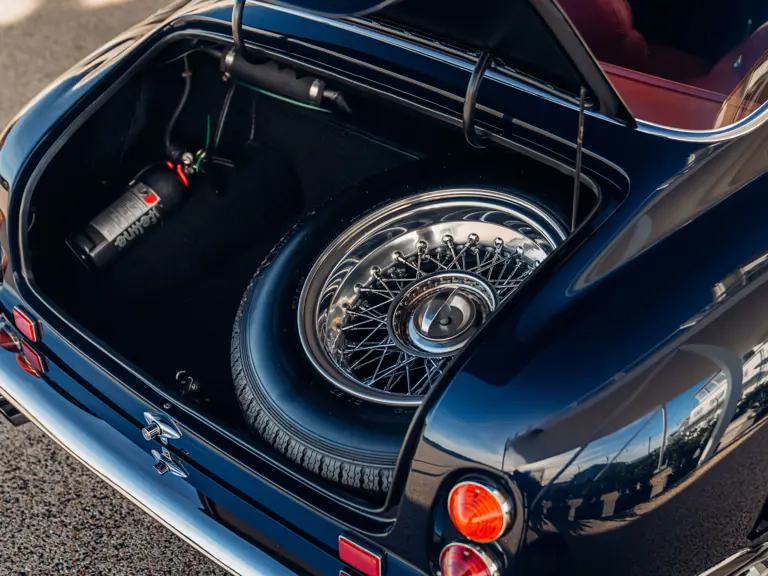
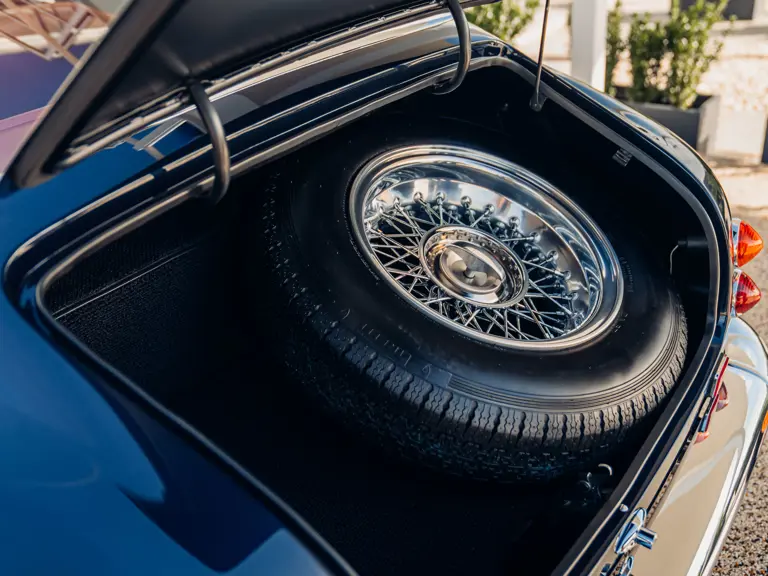
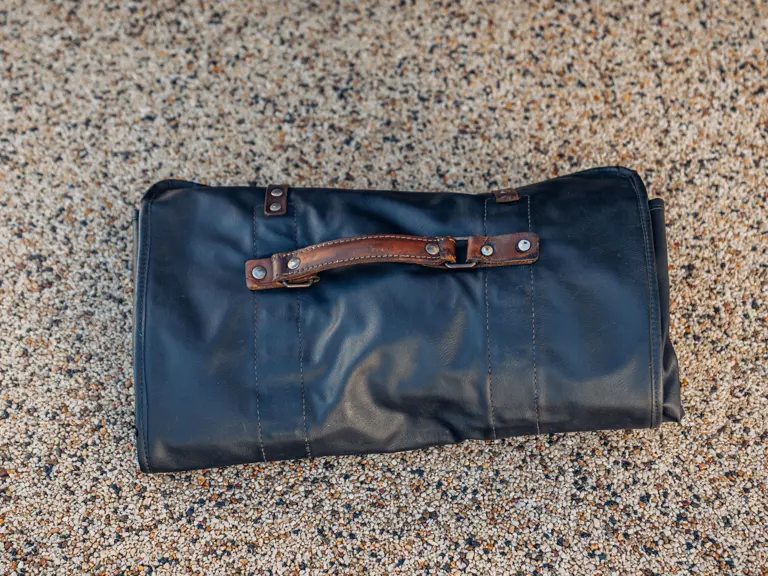
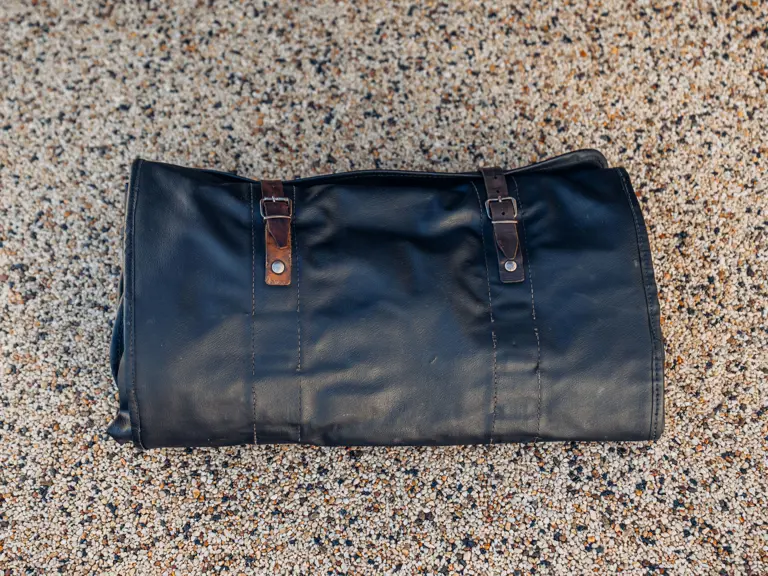
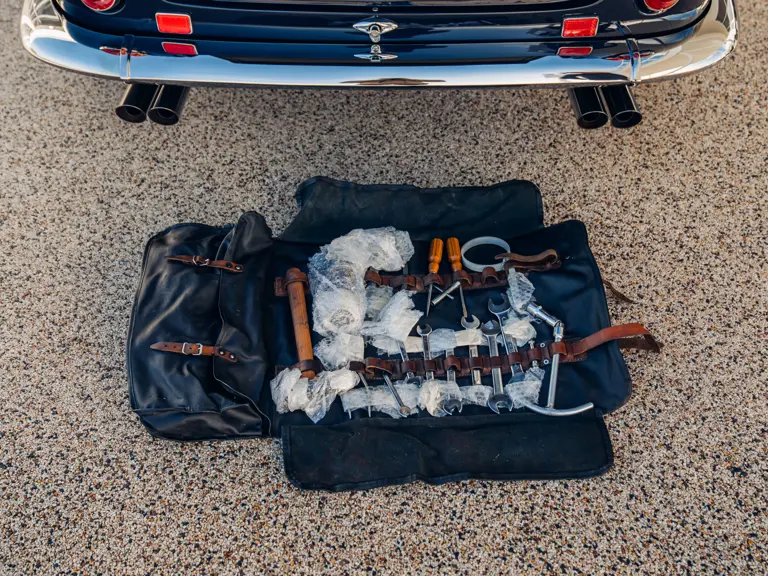
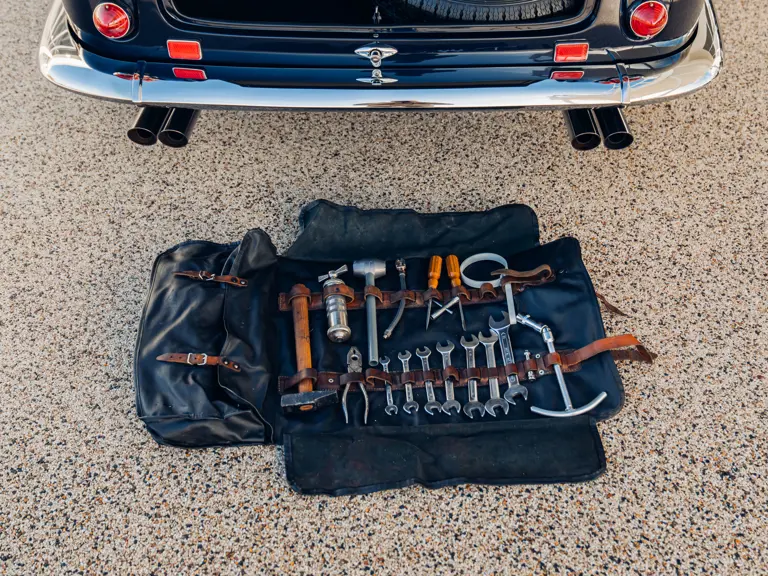
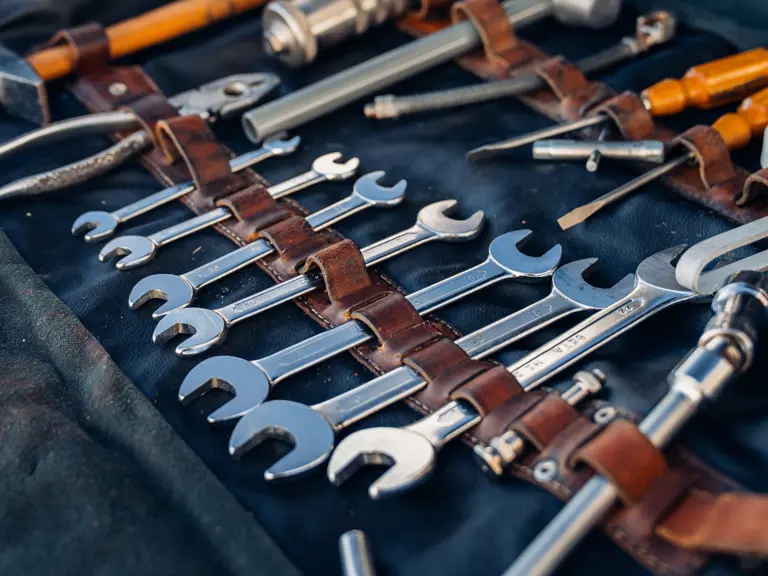
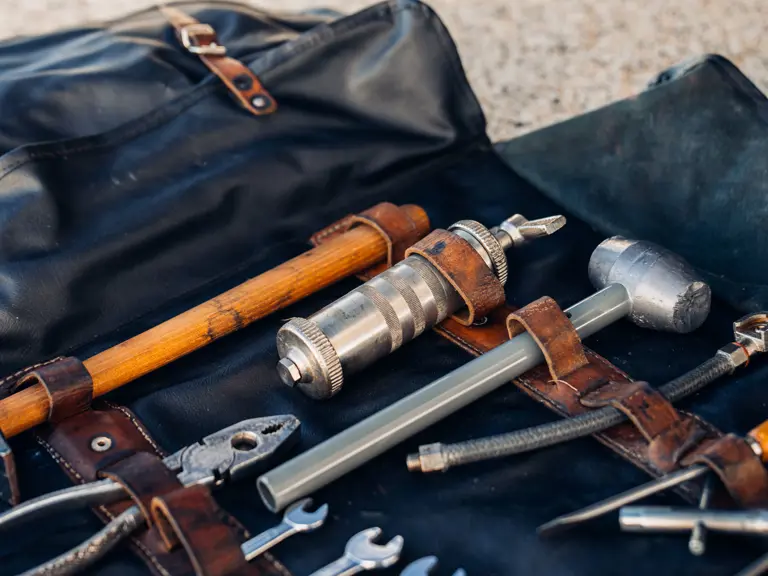
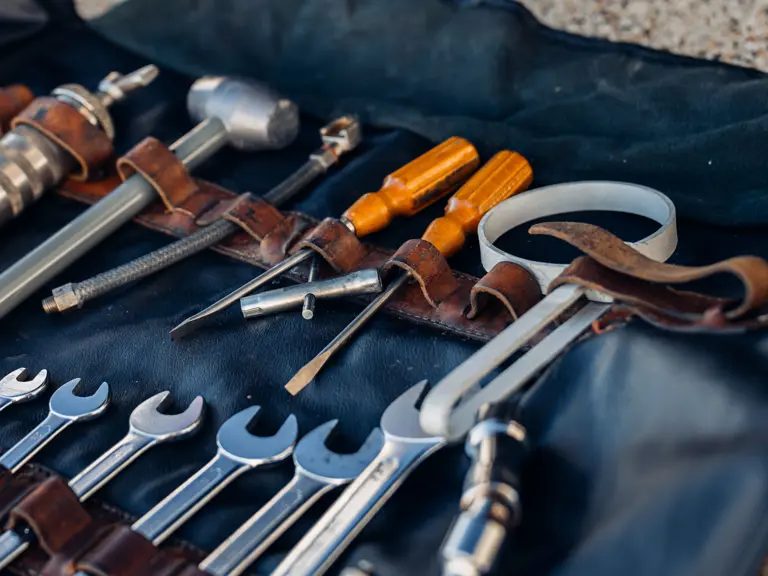
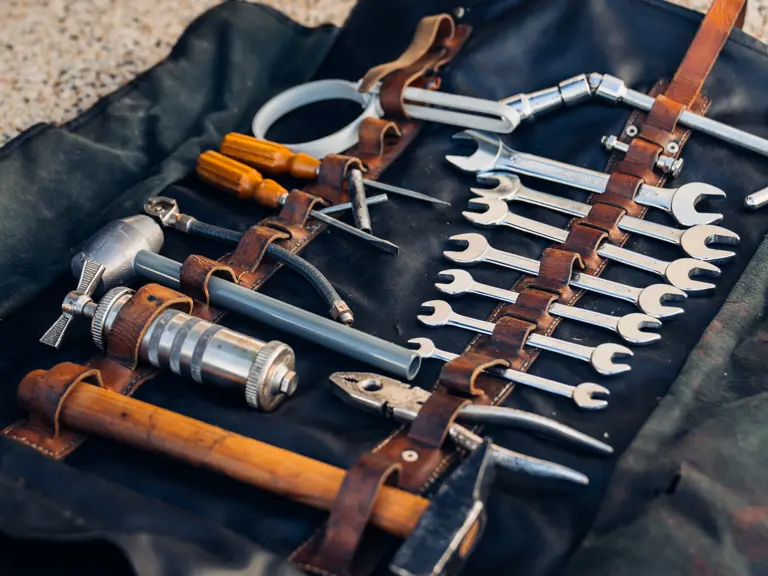
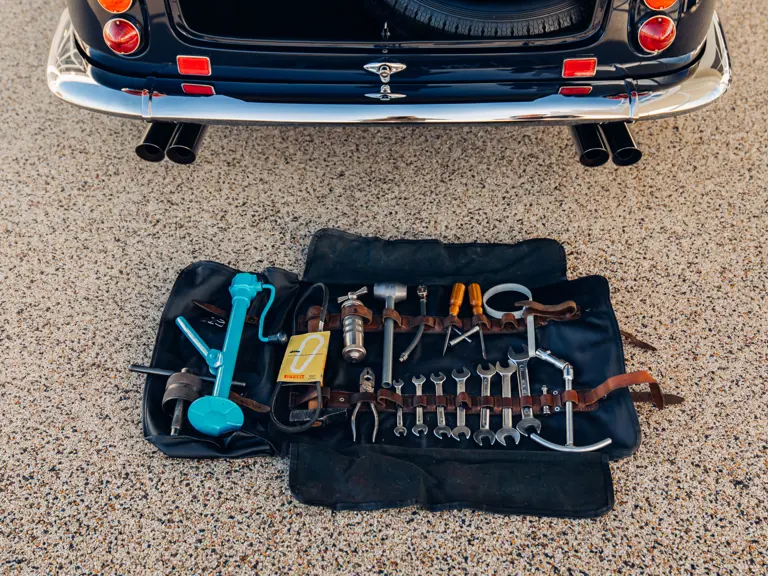
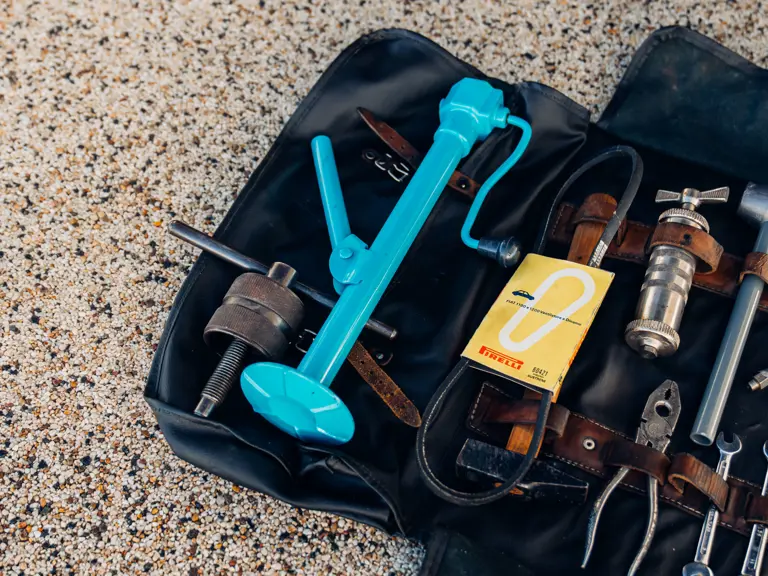
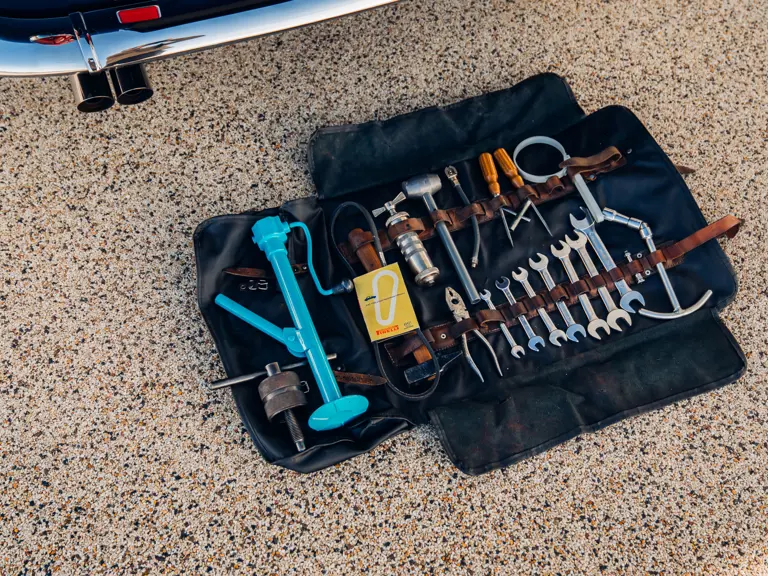
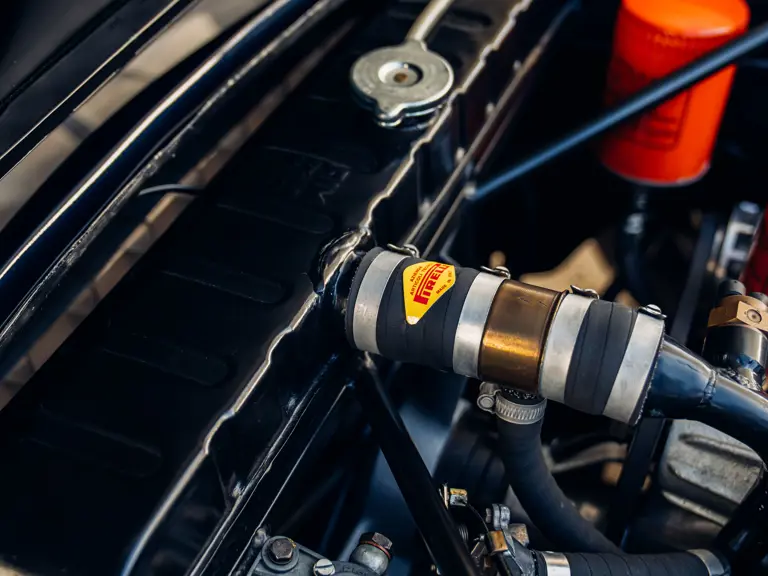
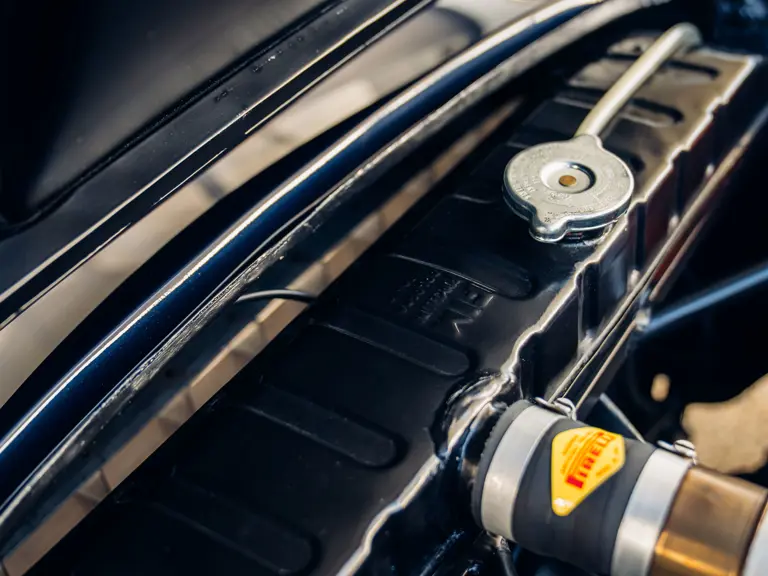
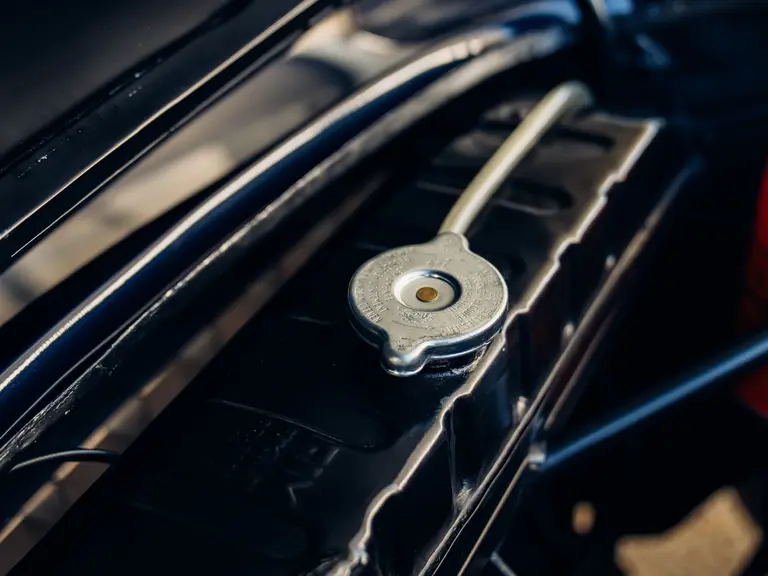
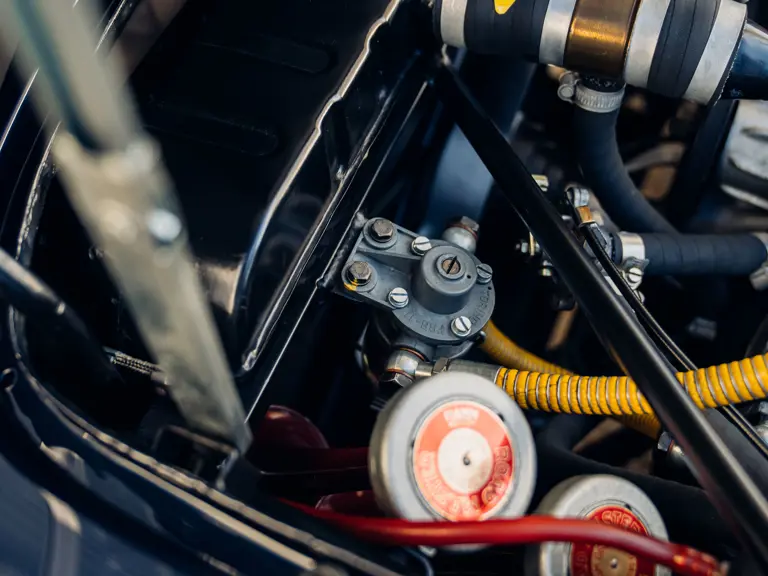
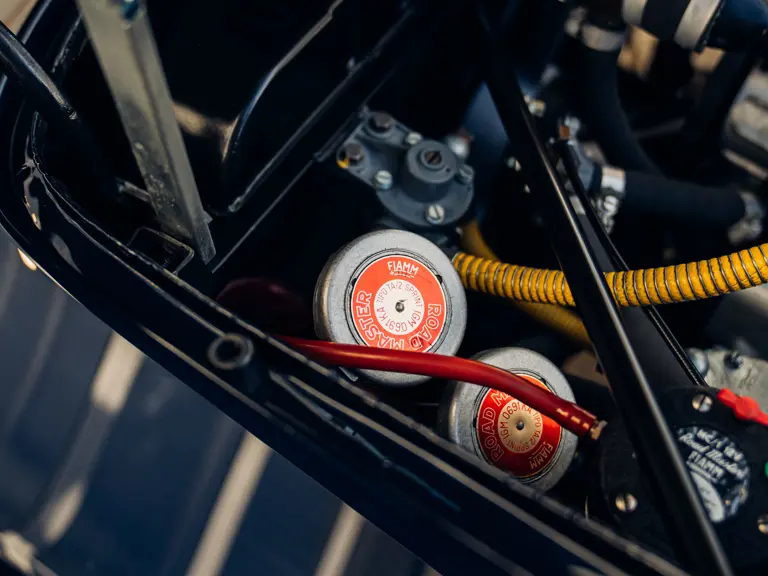
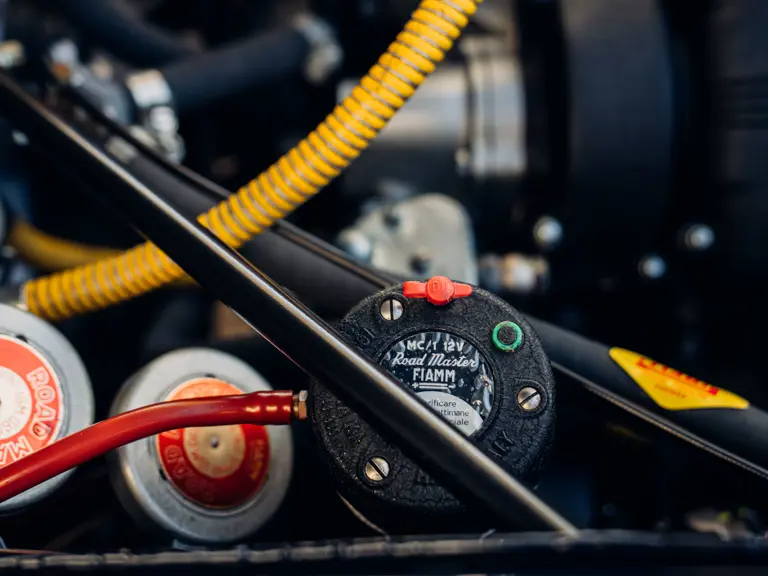
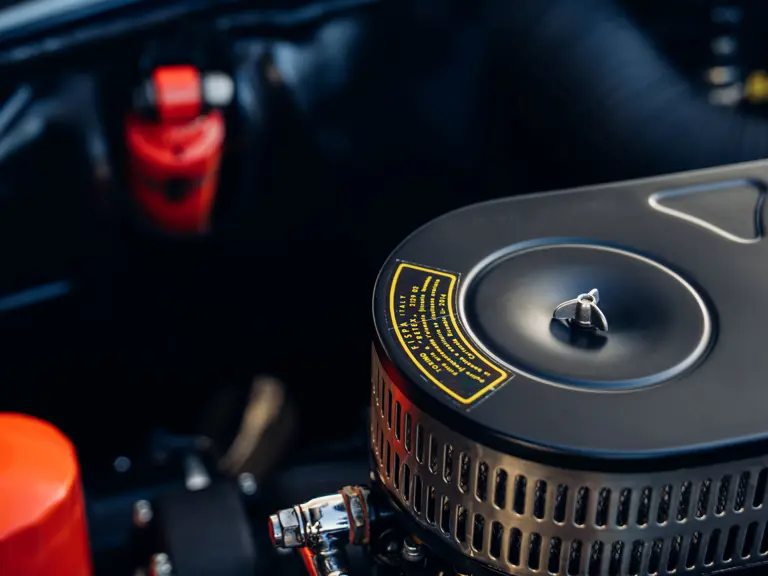
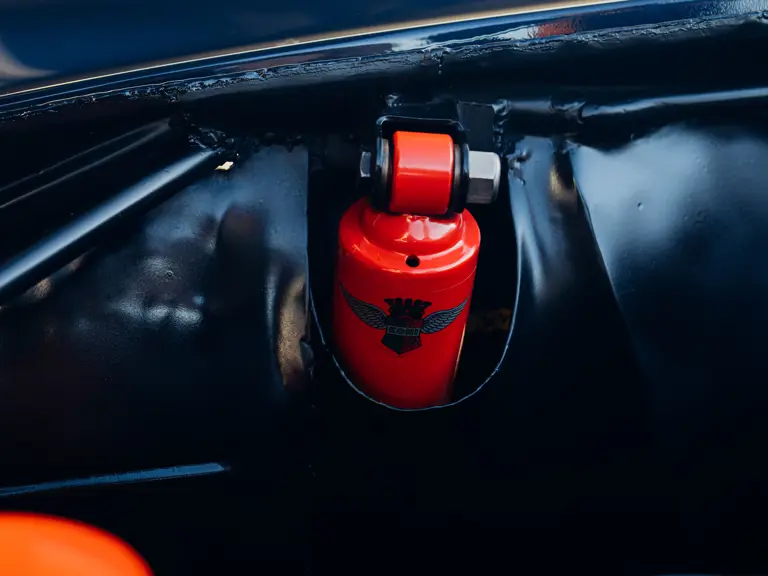
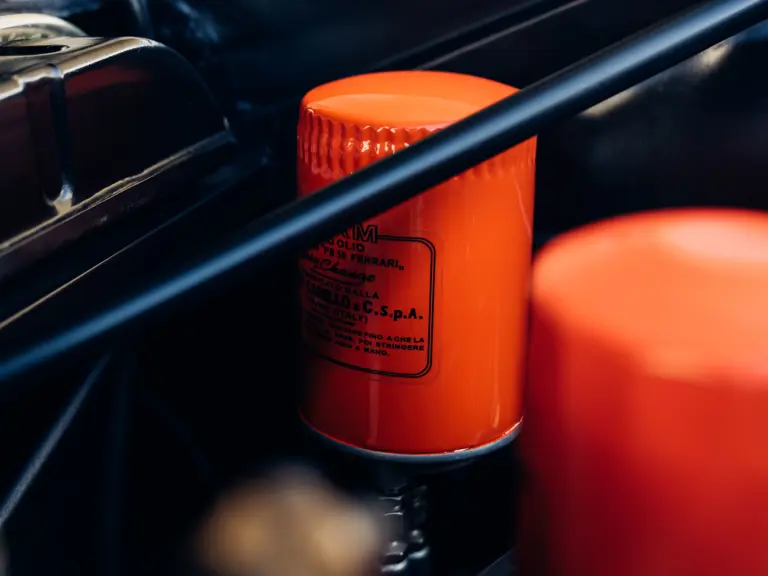
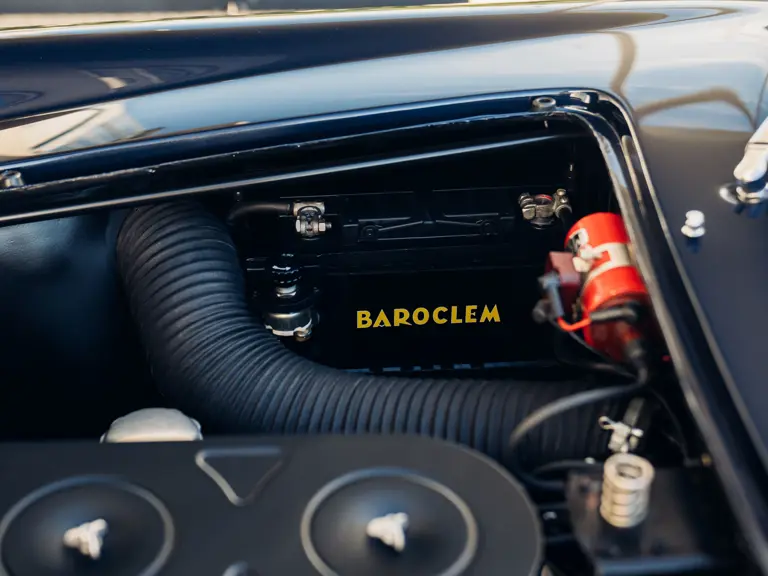
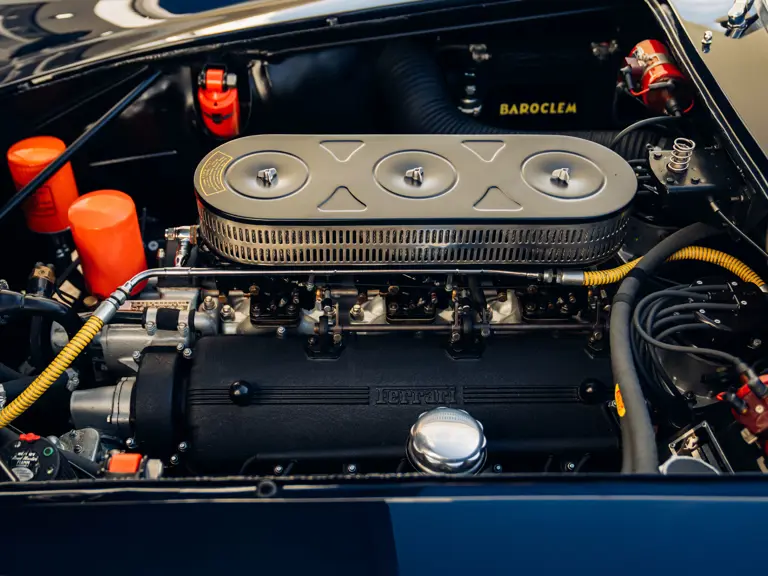
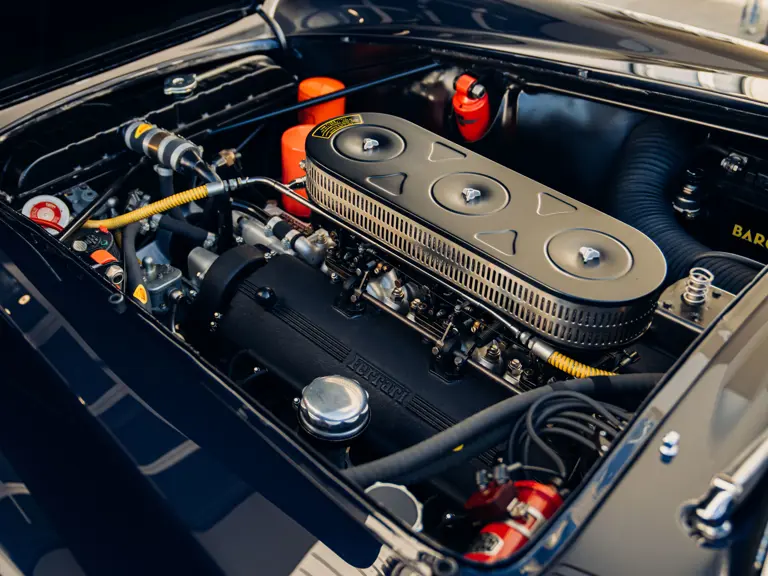
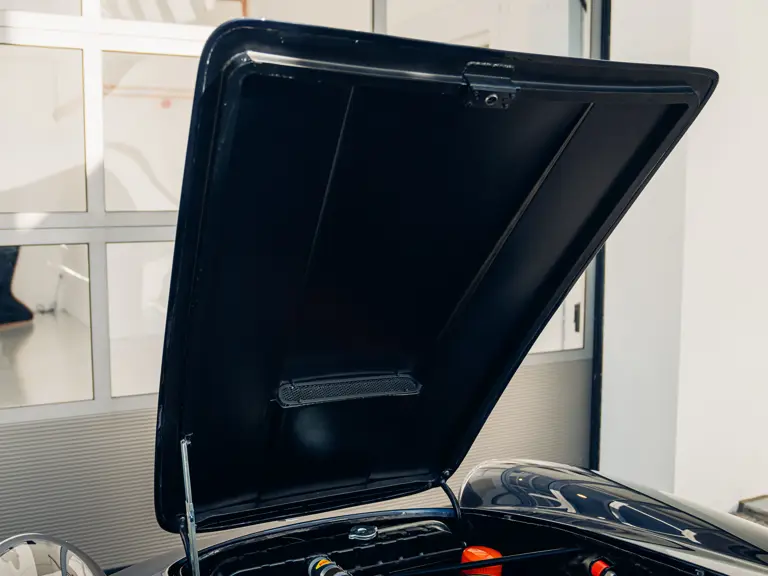
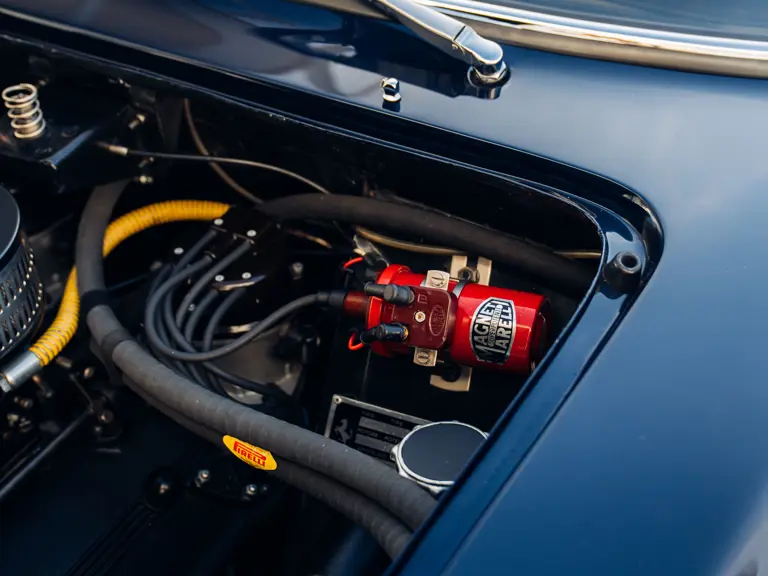
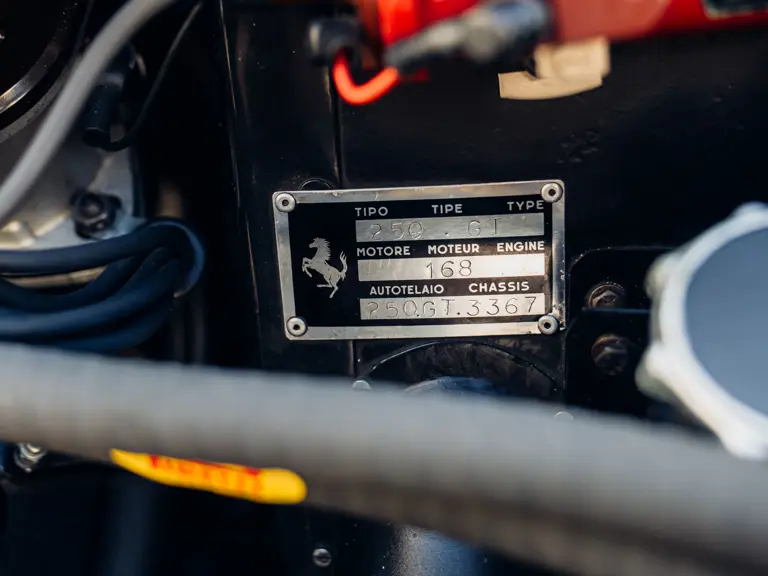
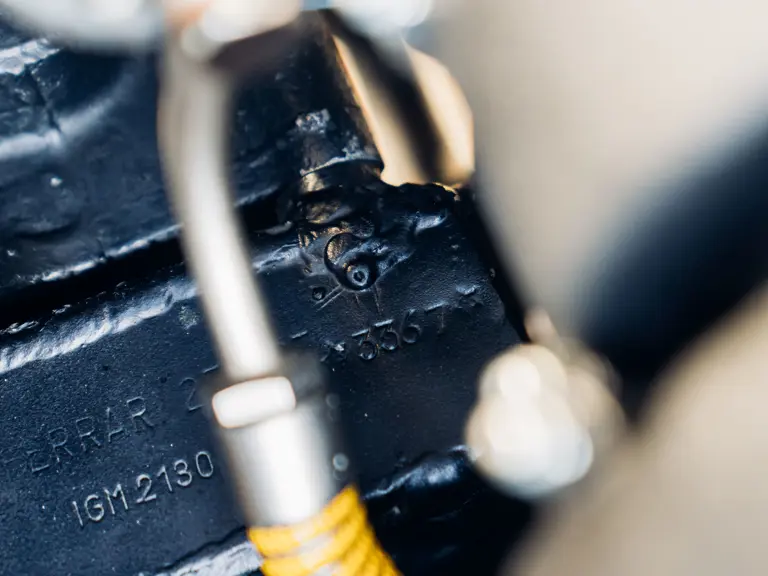
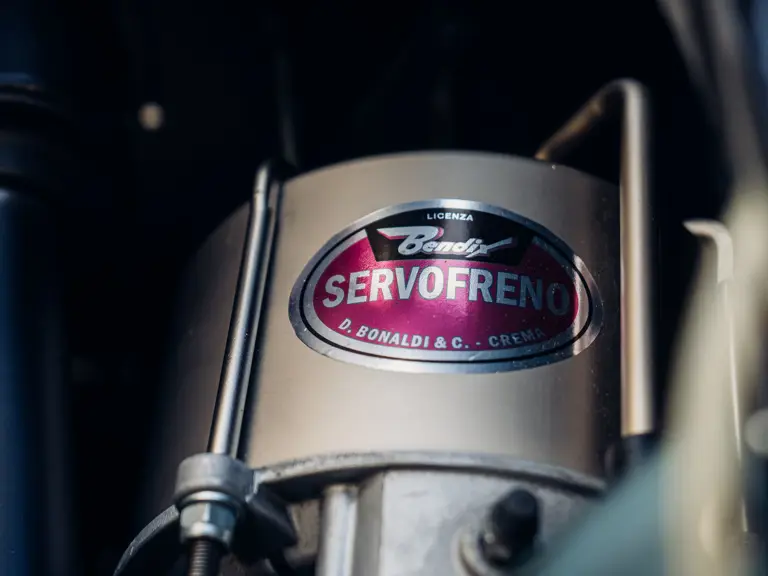
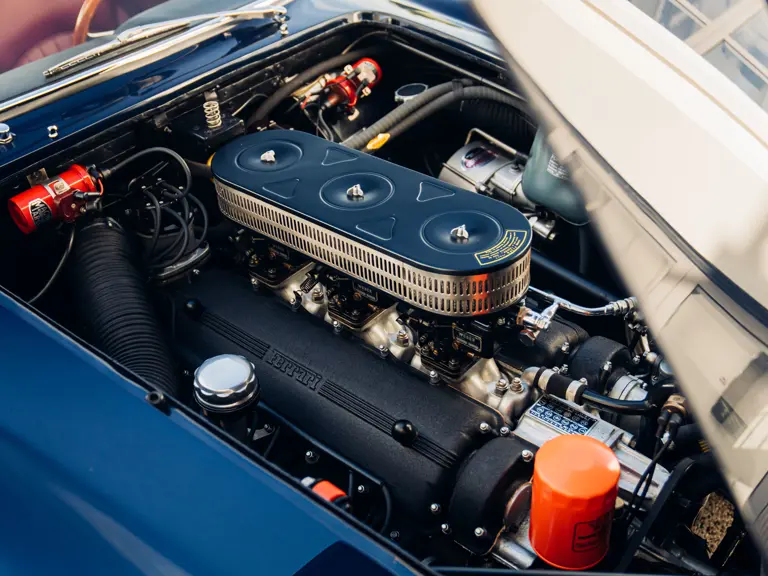
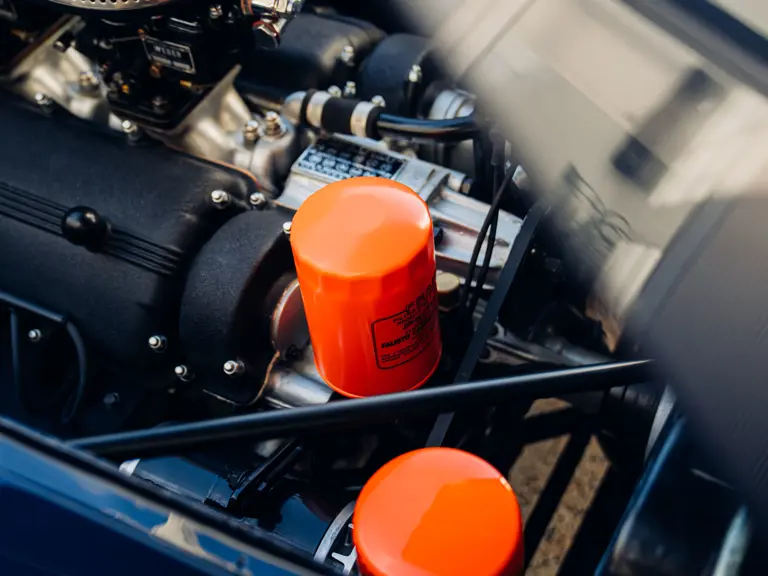
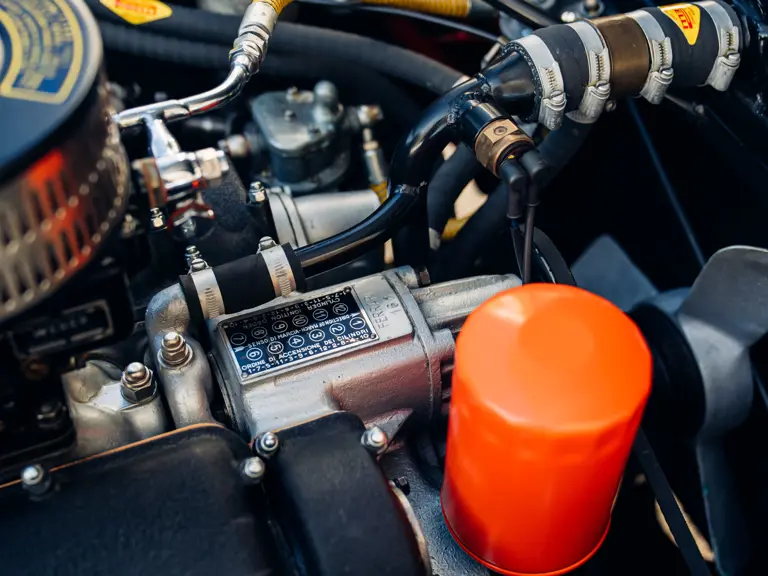
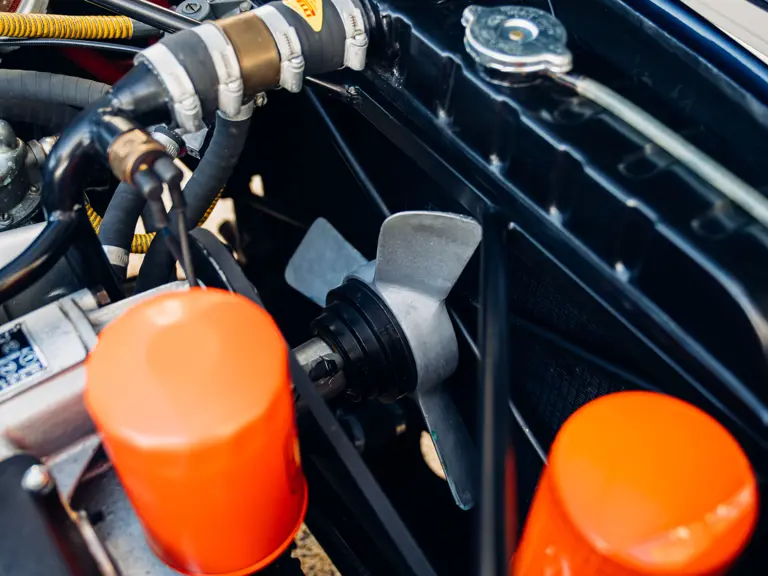
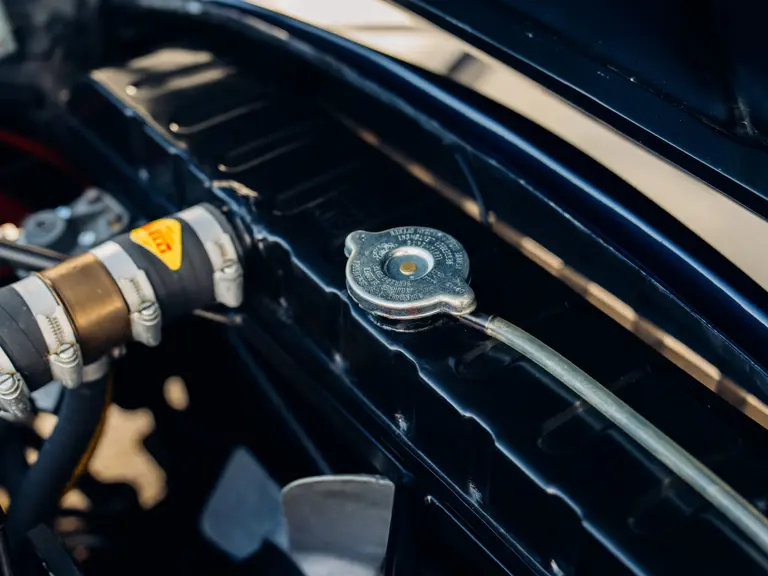
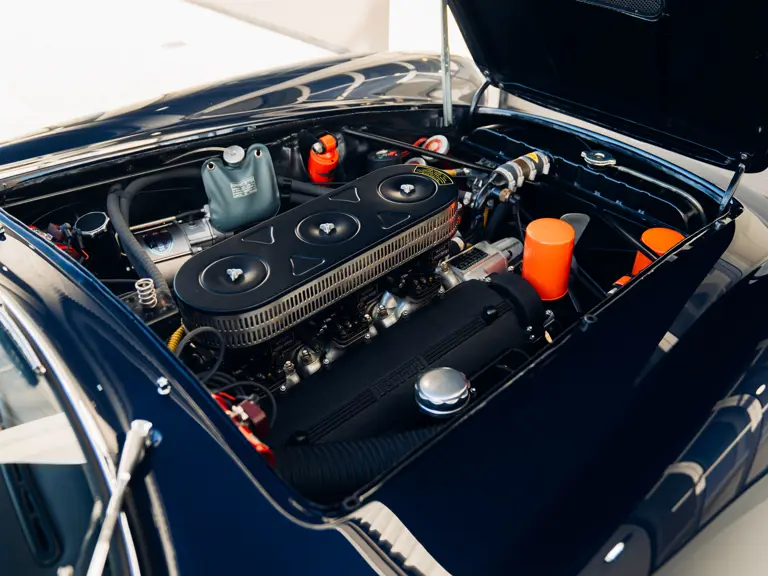
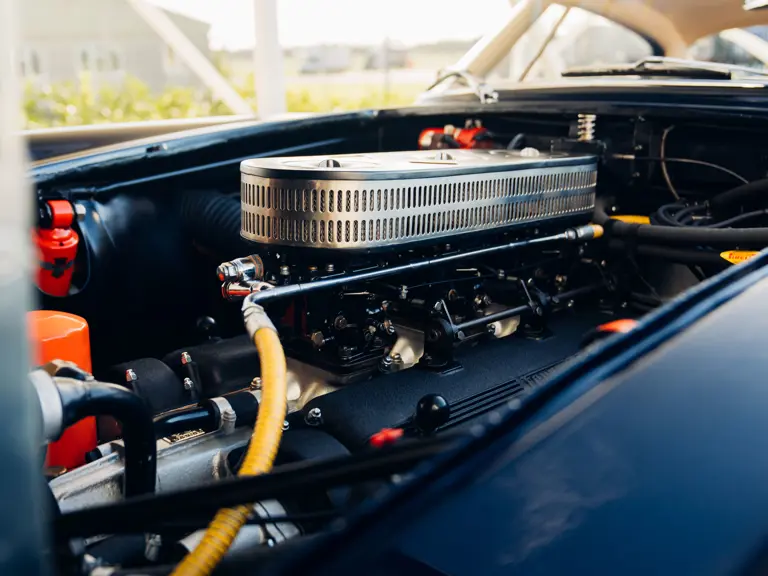
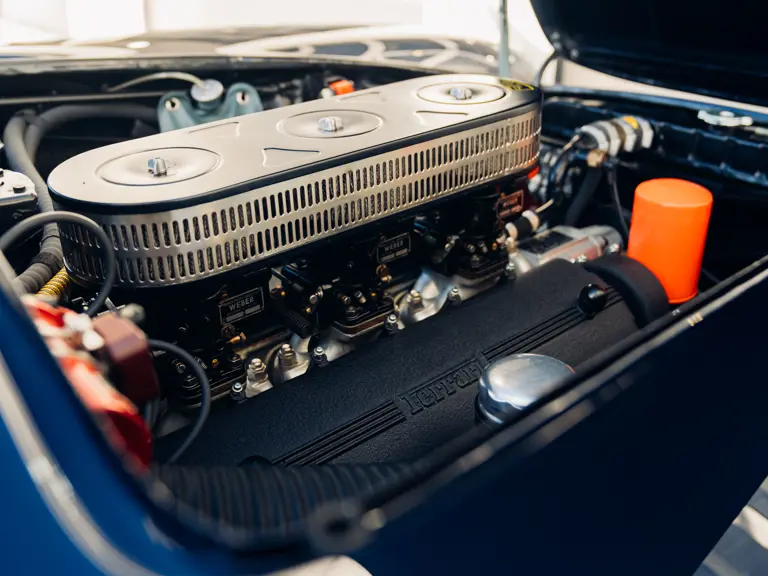
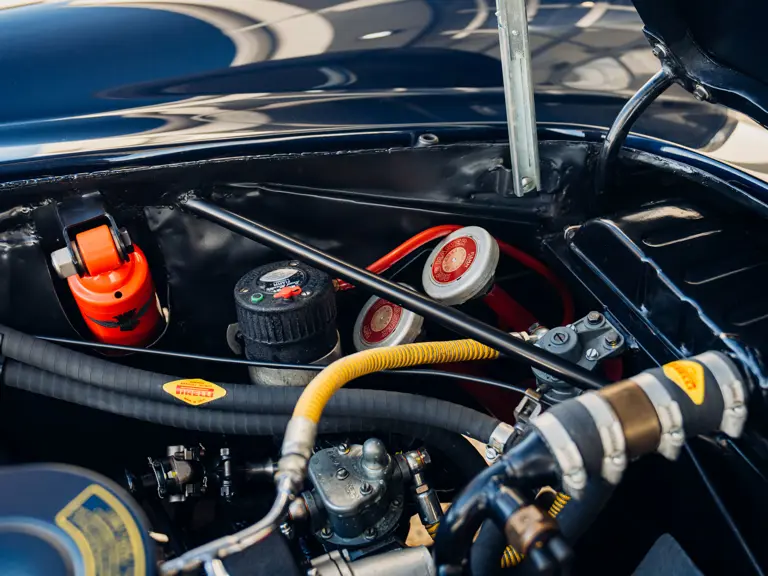
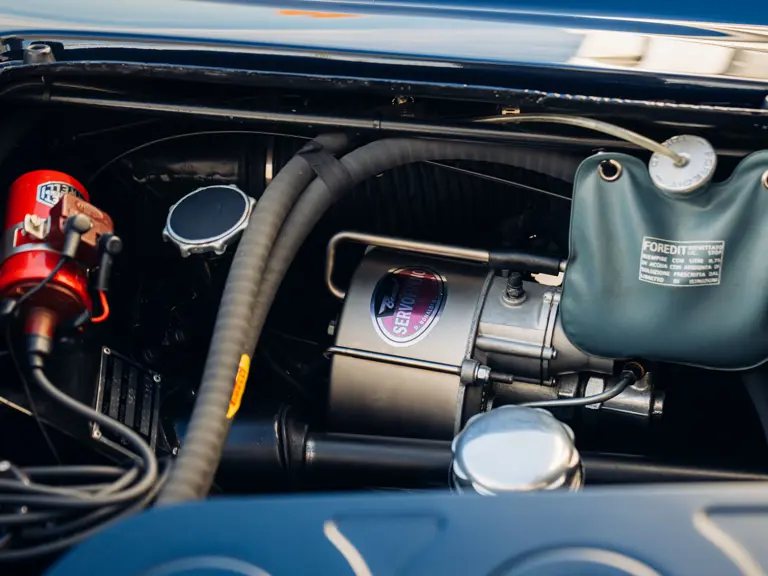
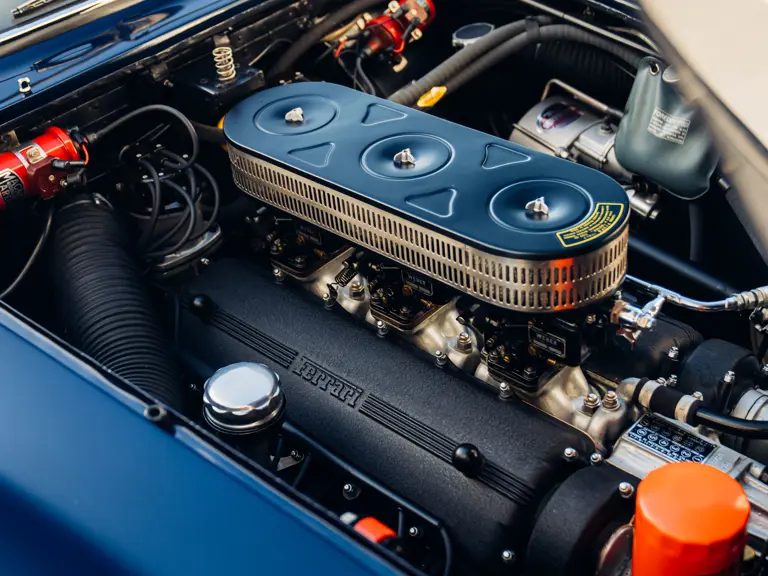
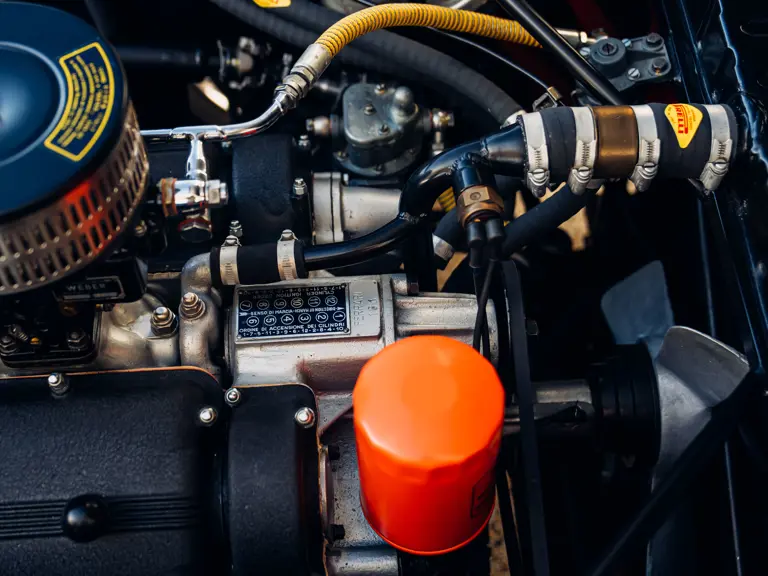
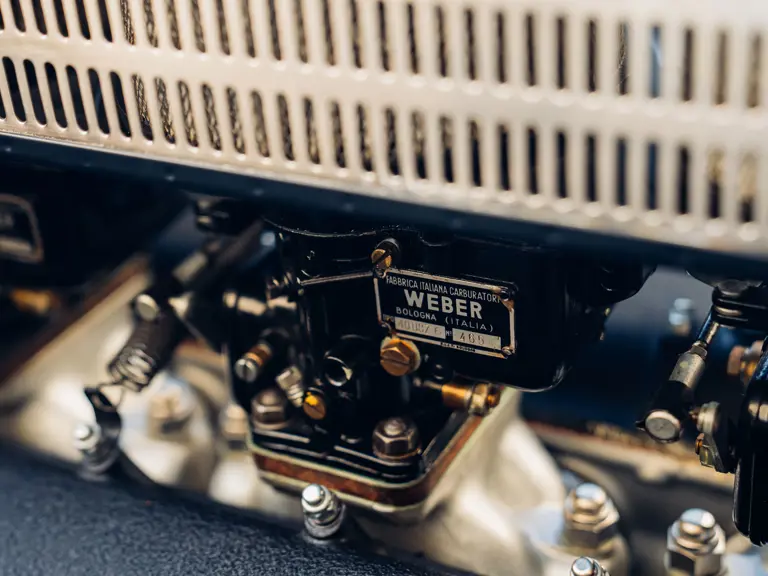
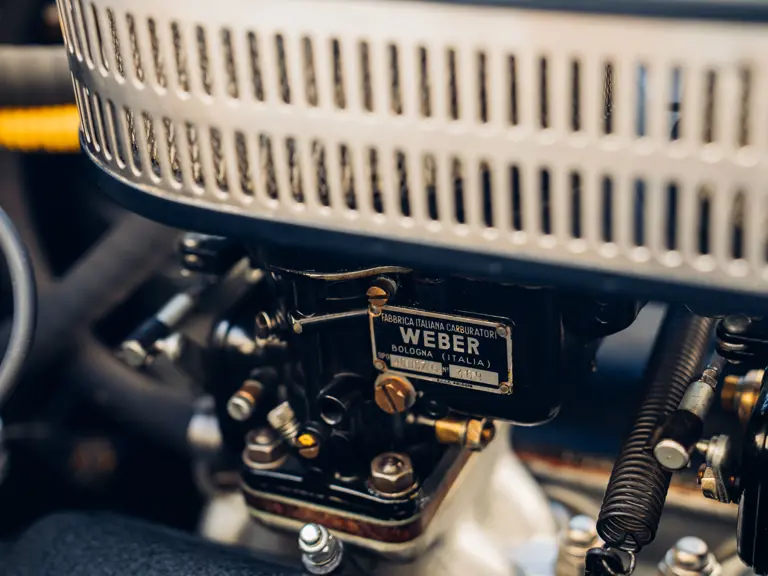
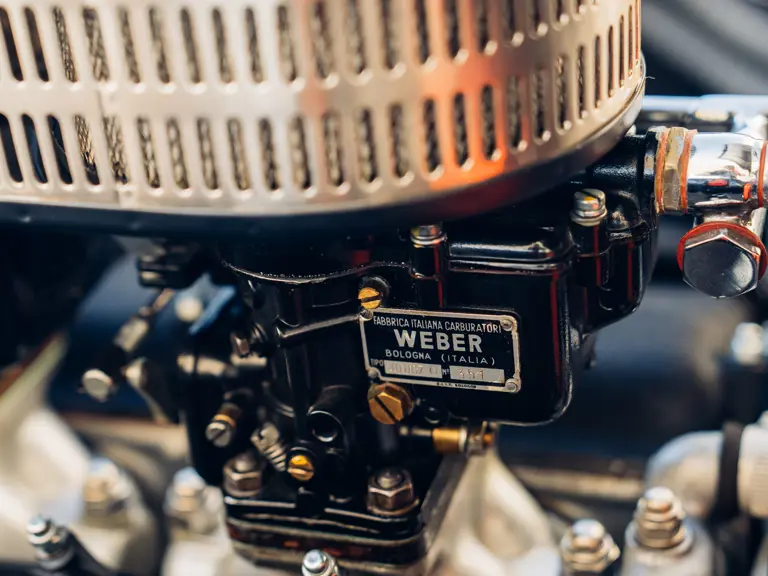
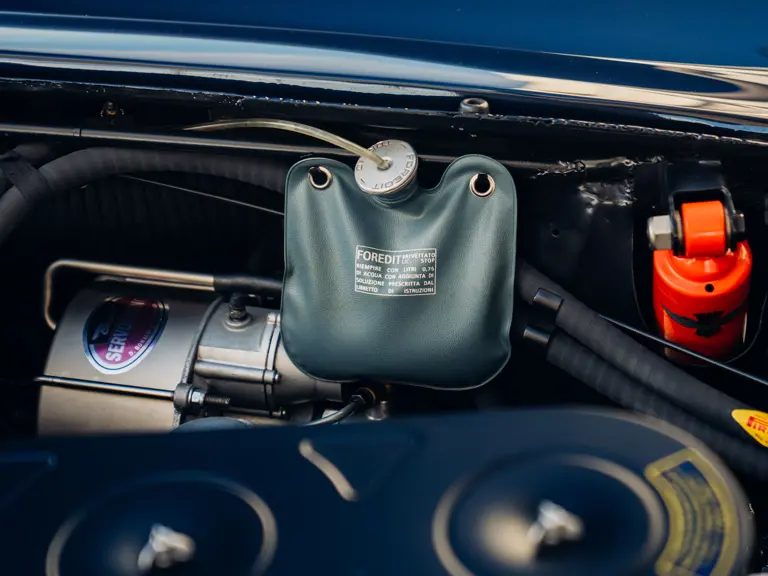
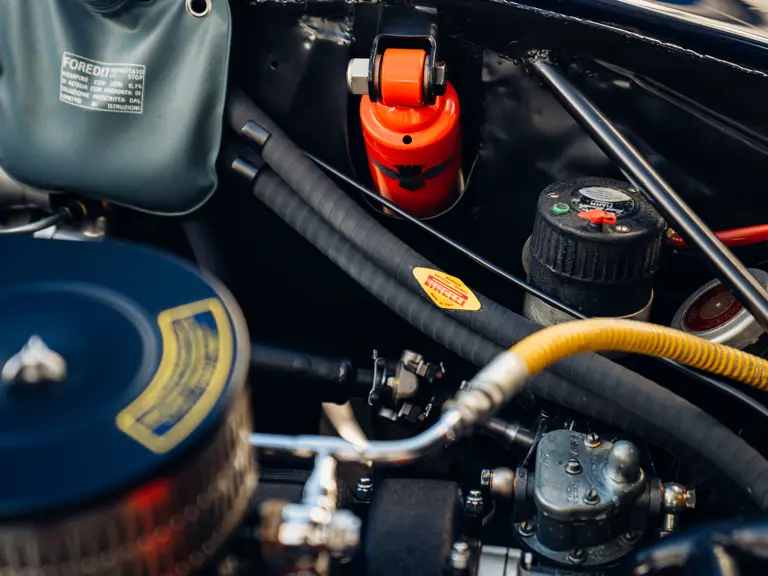
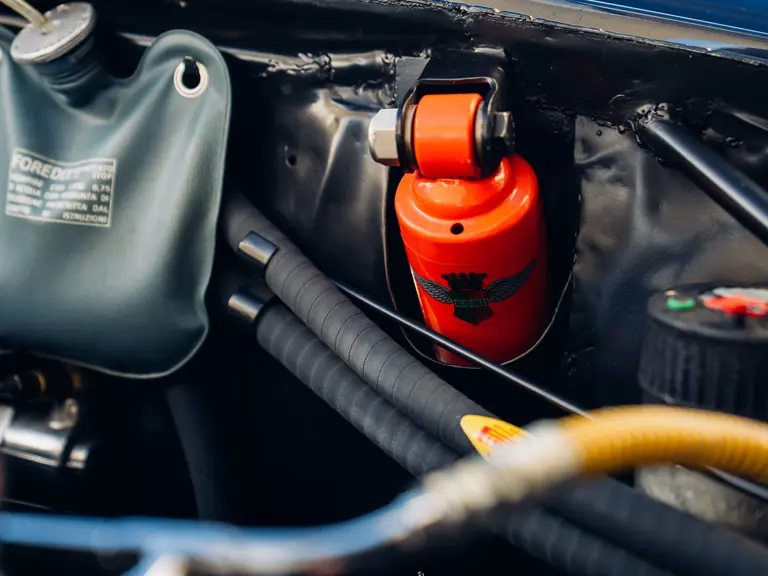
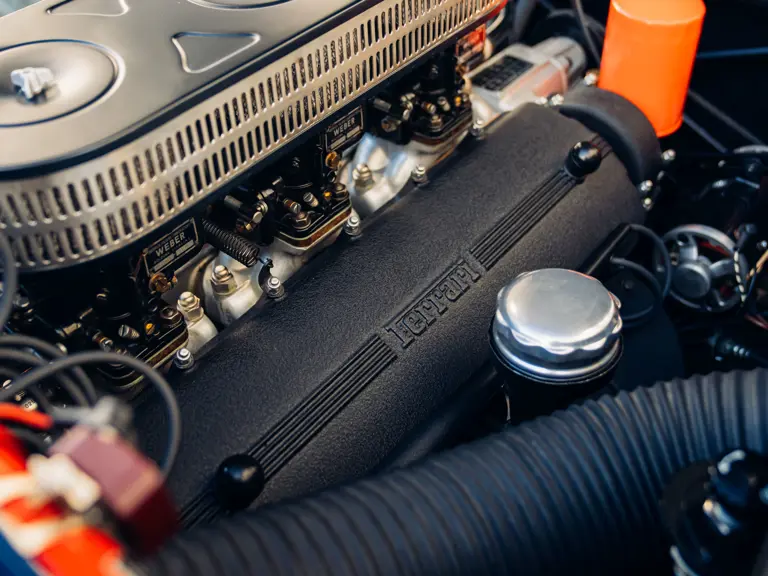
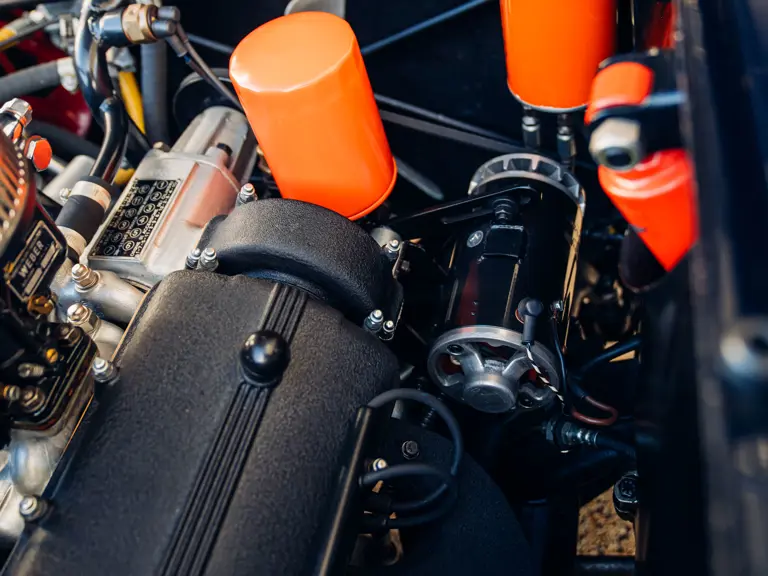
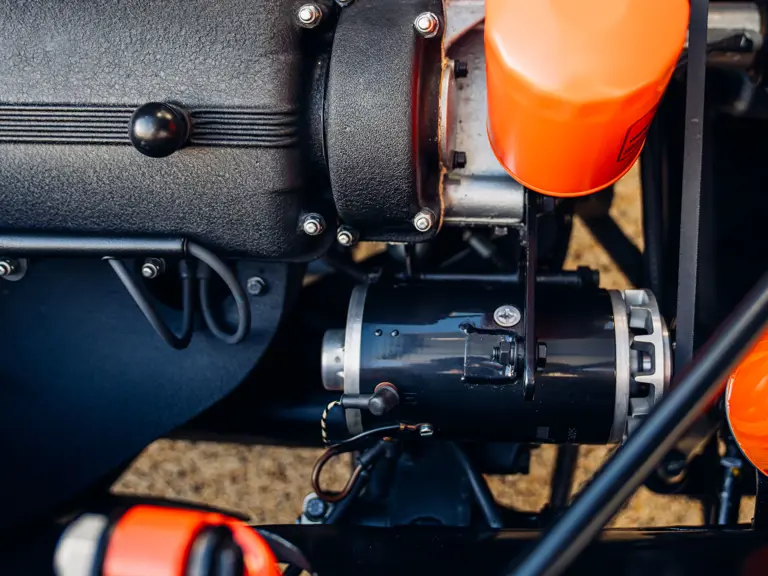
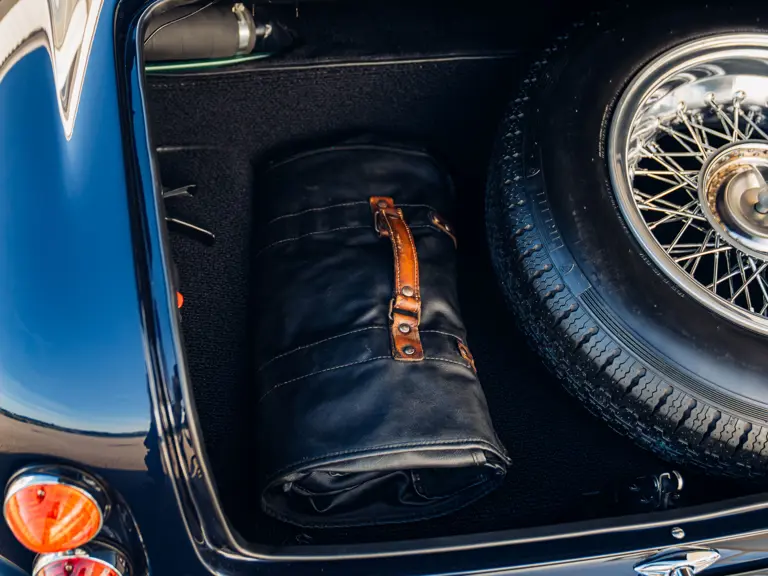
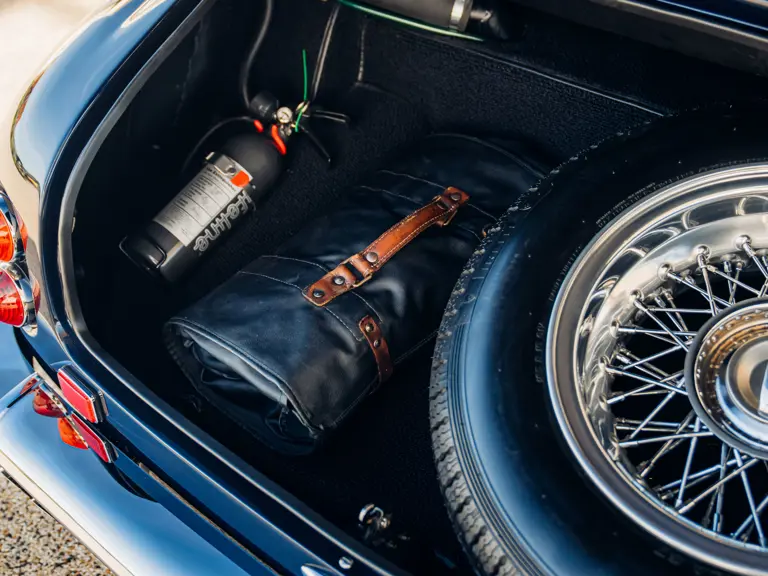
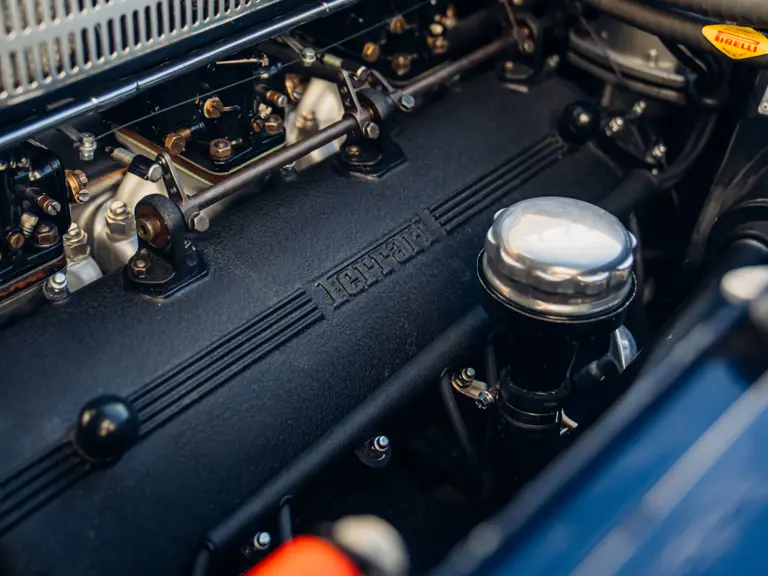
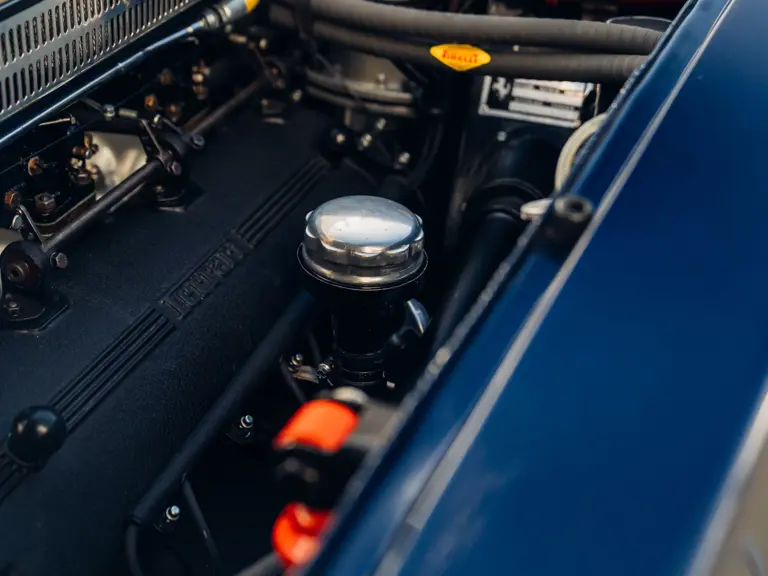
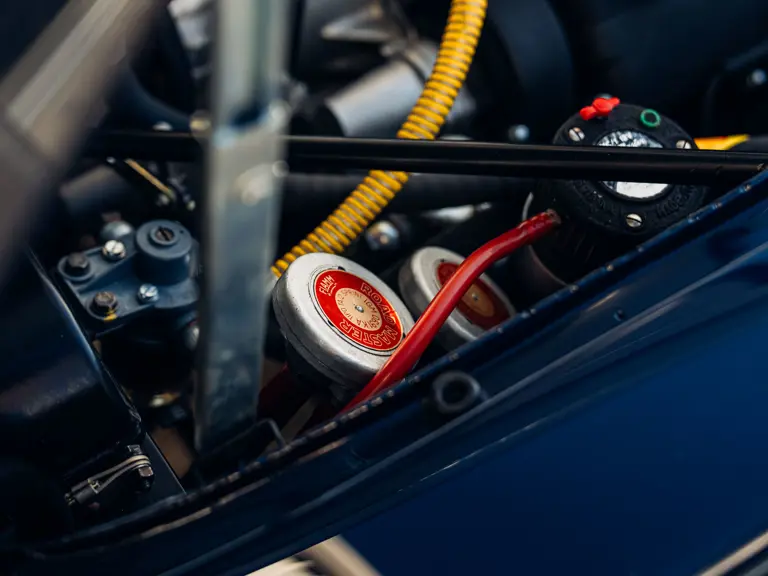
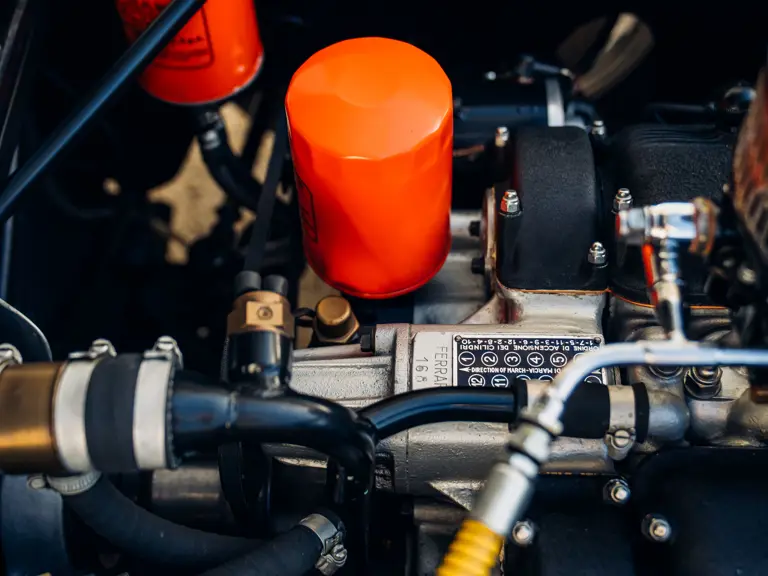
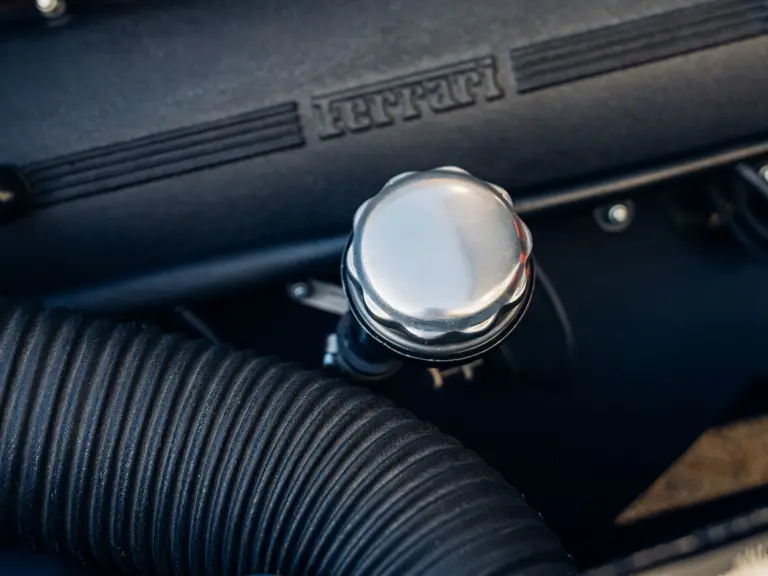
 | Cranleigh, United Kingdom
| Cranleigh, United Kingdom
